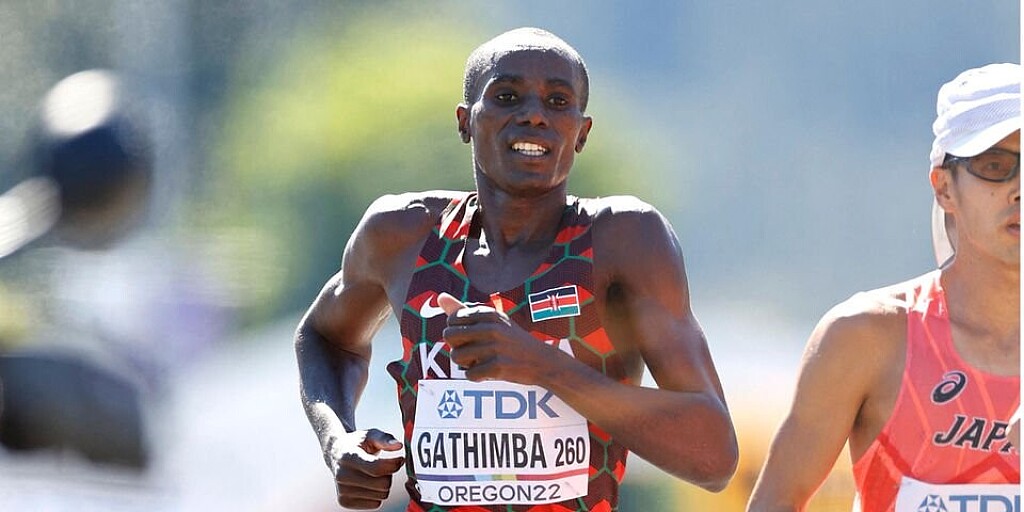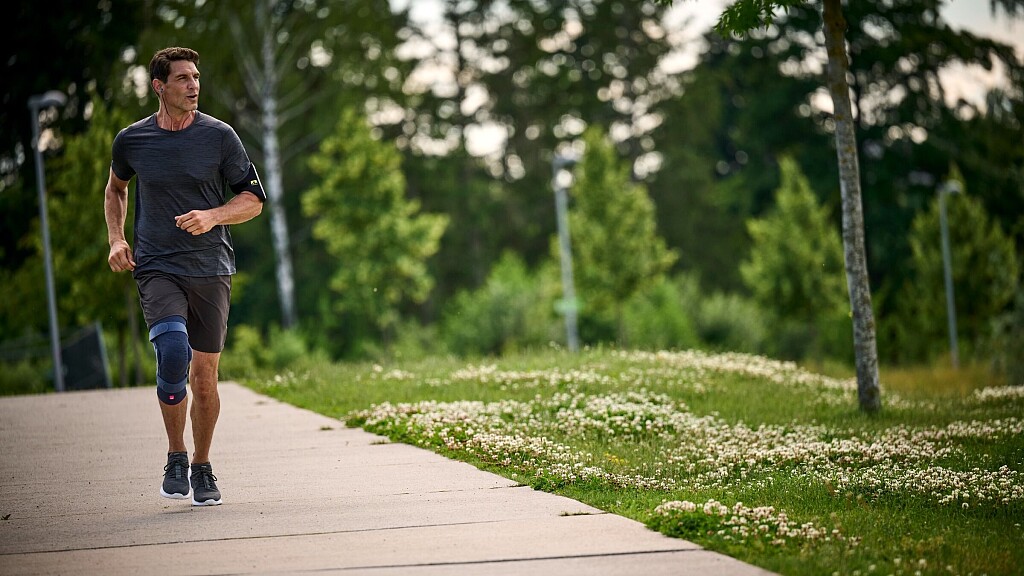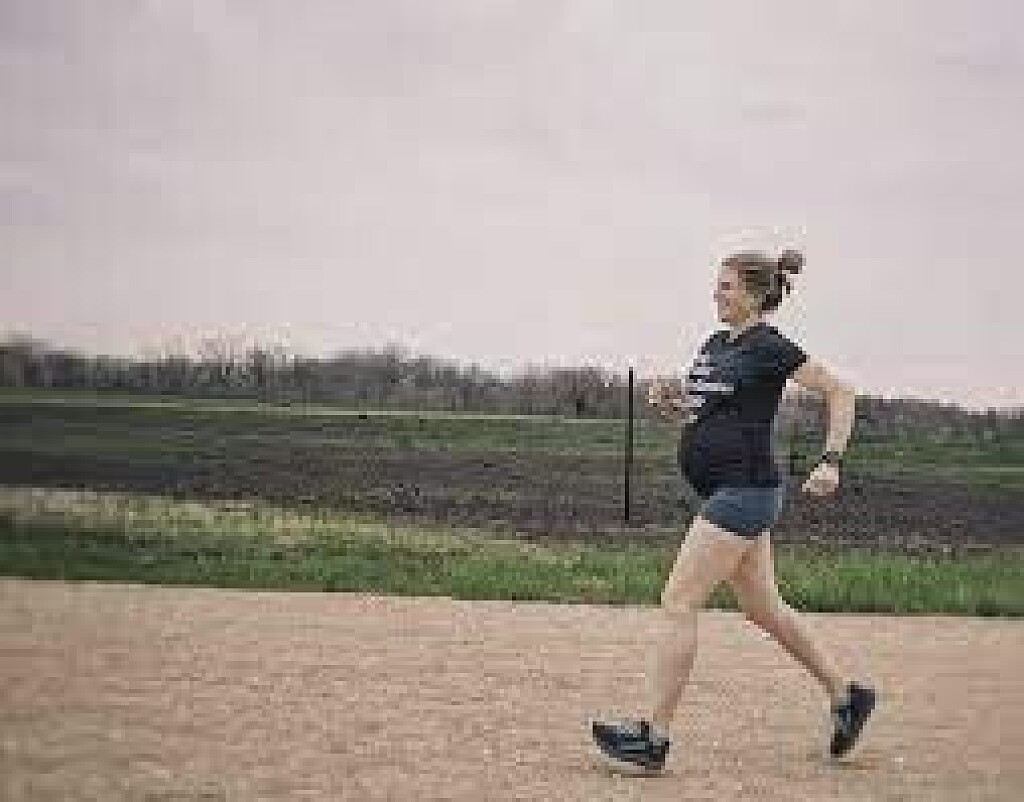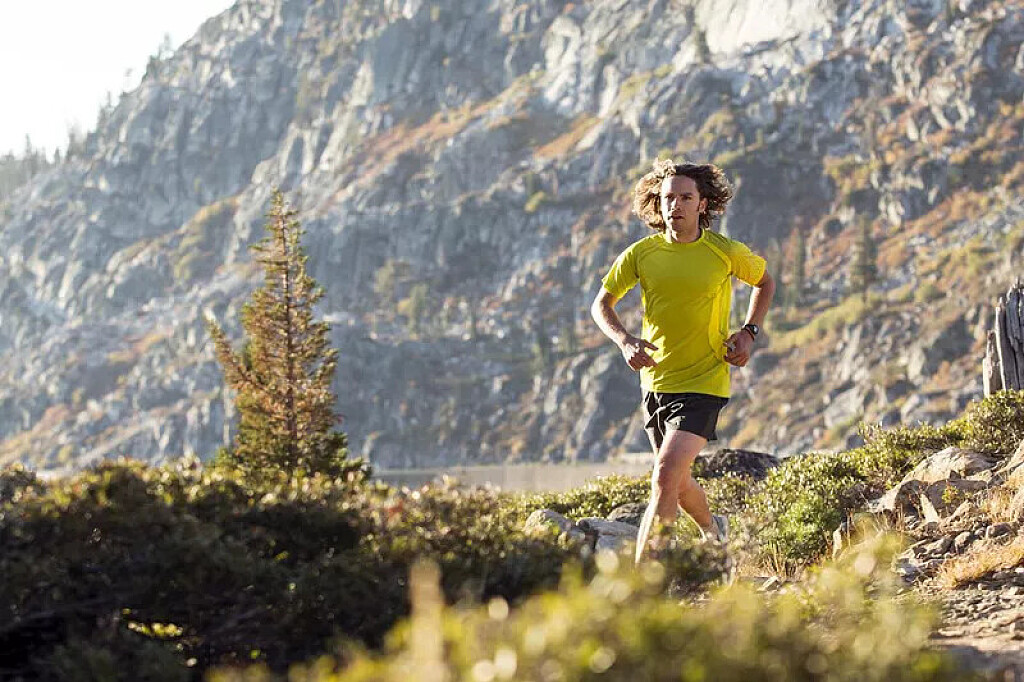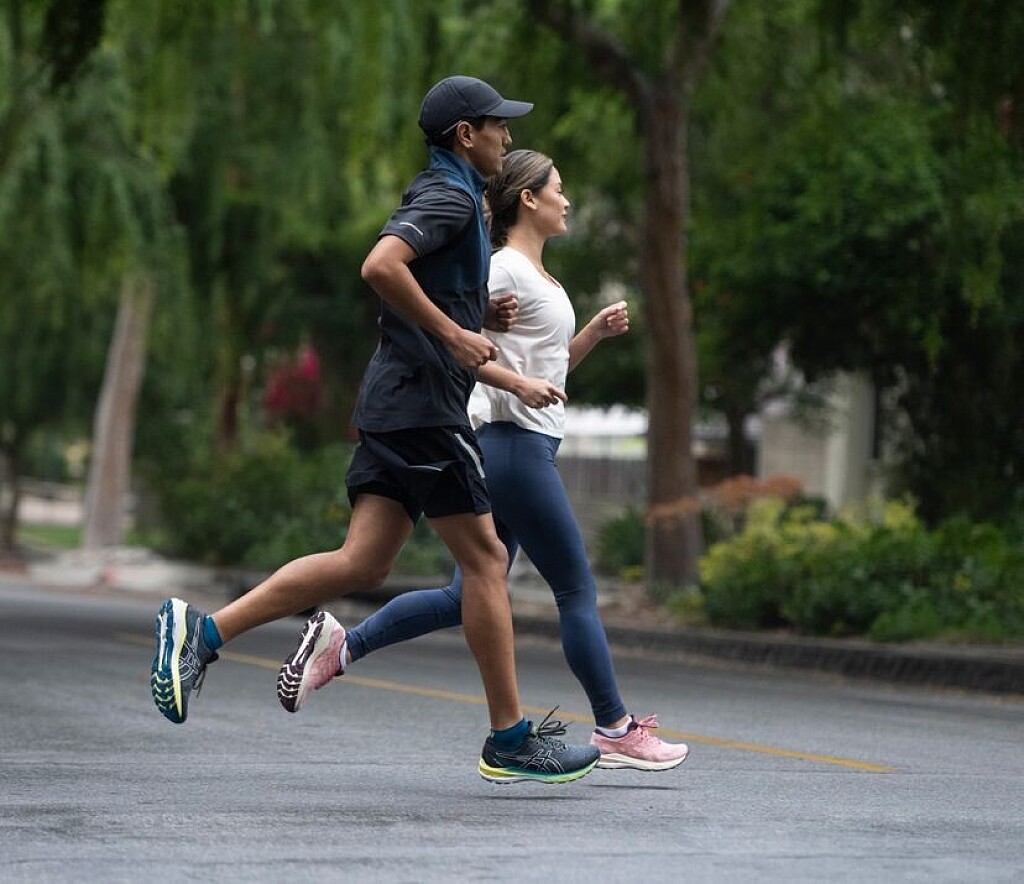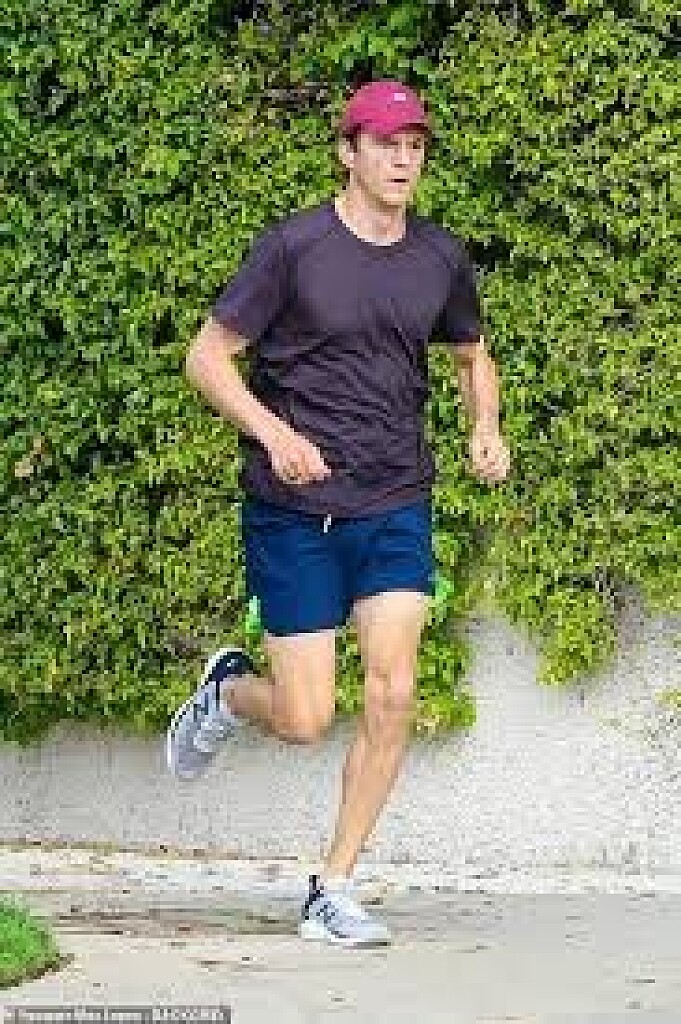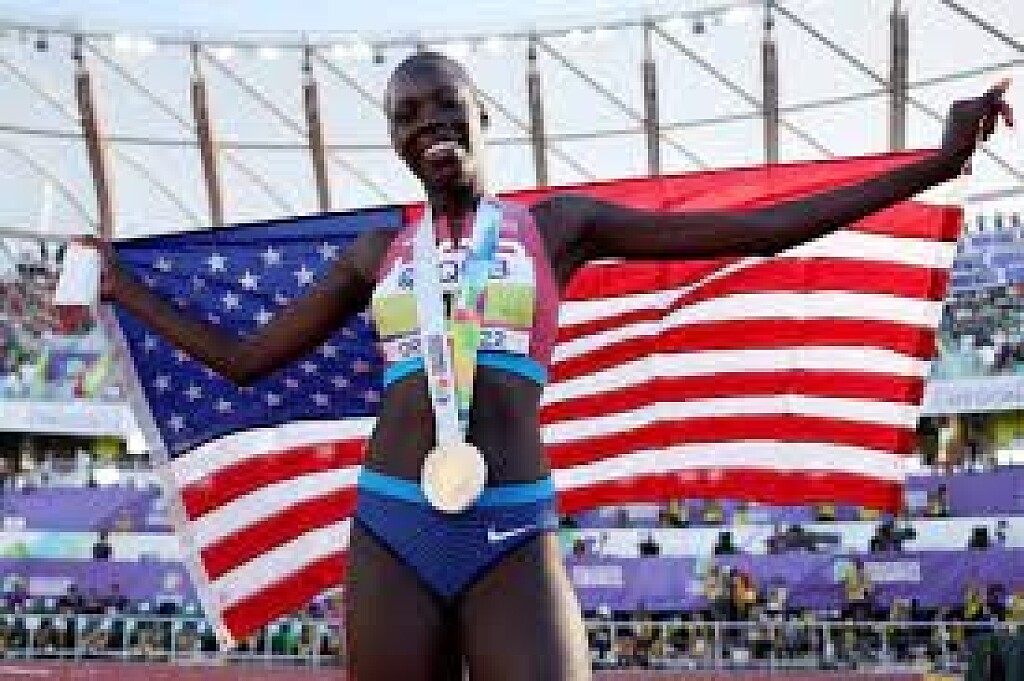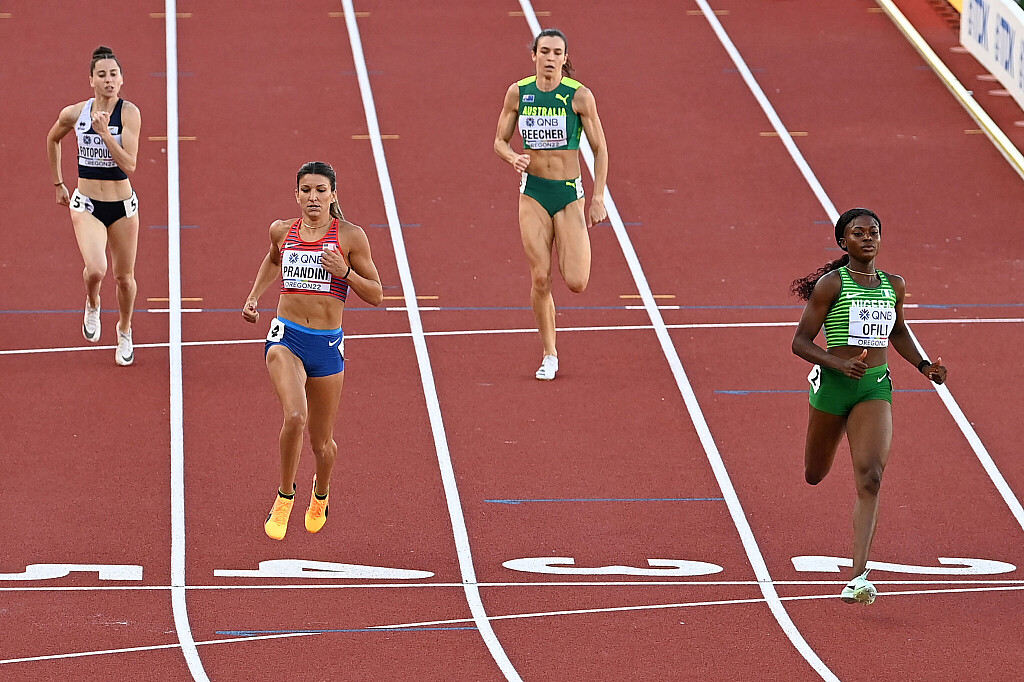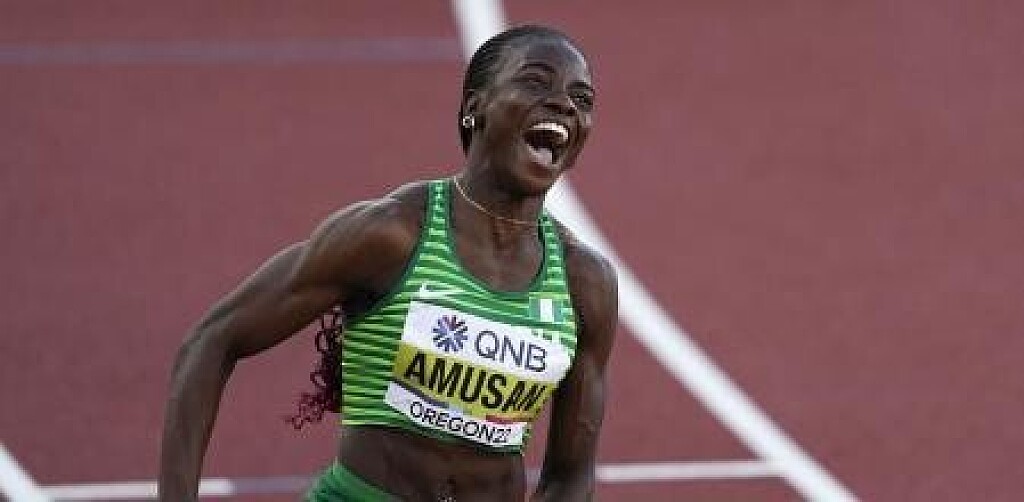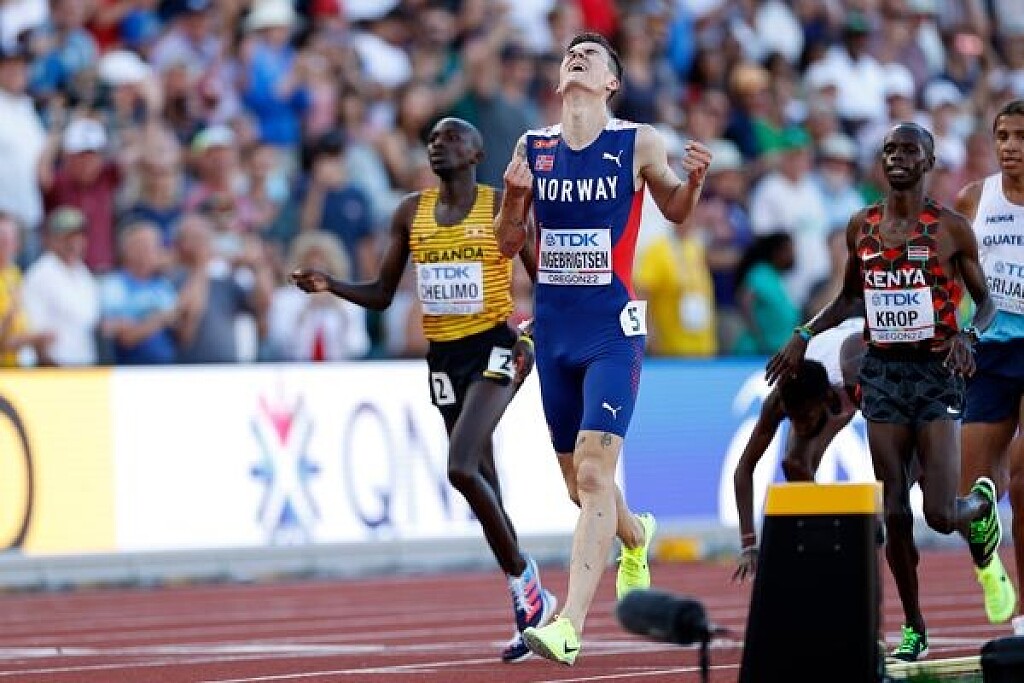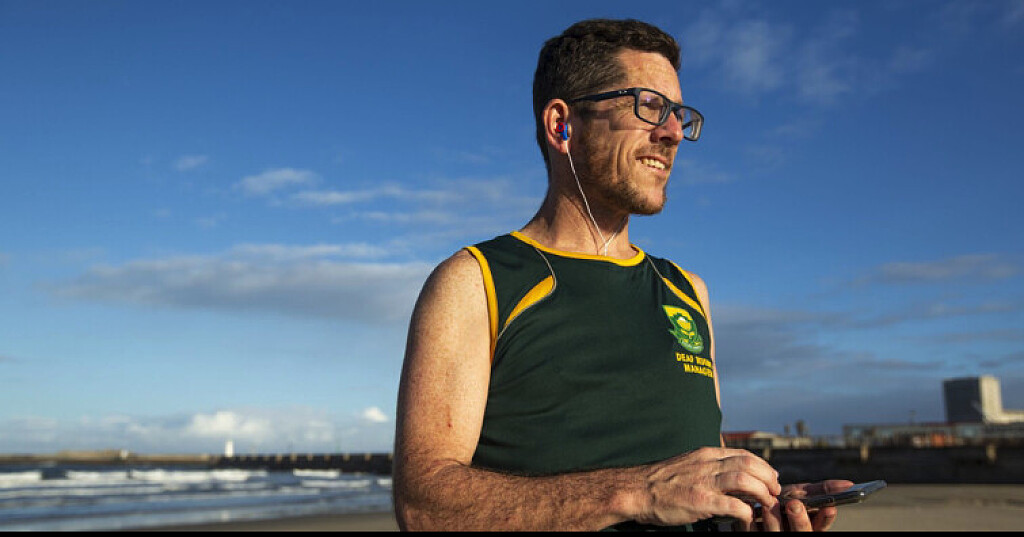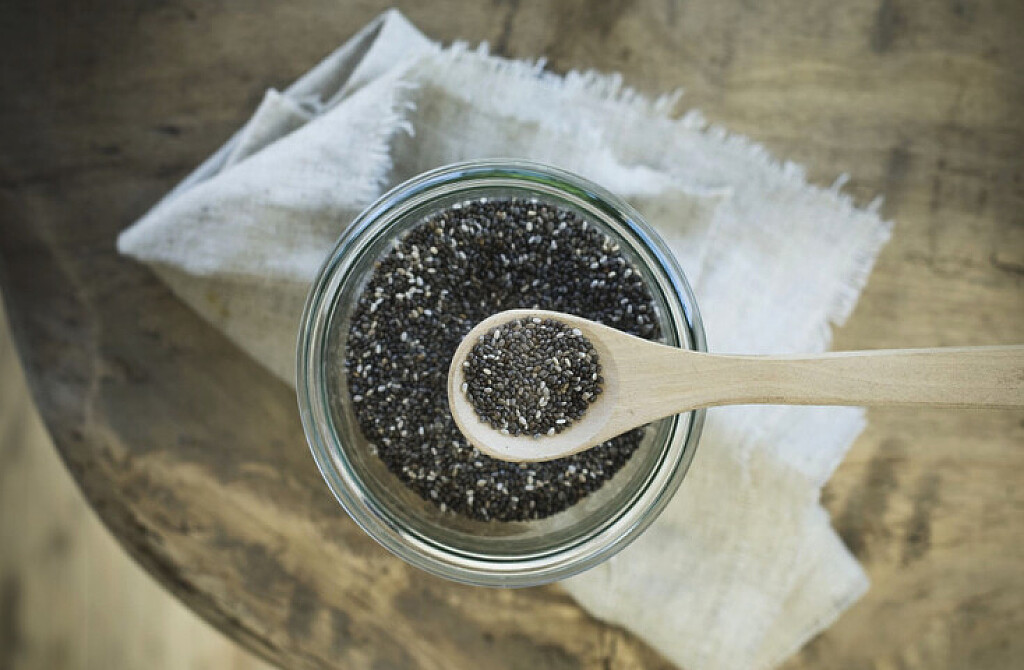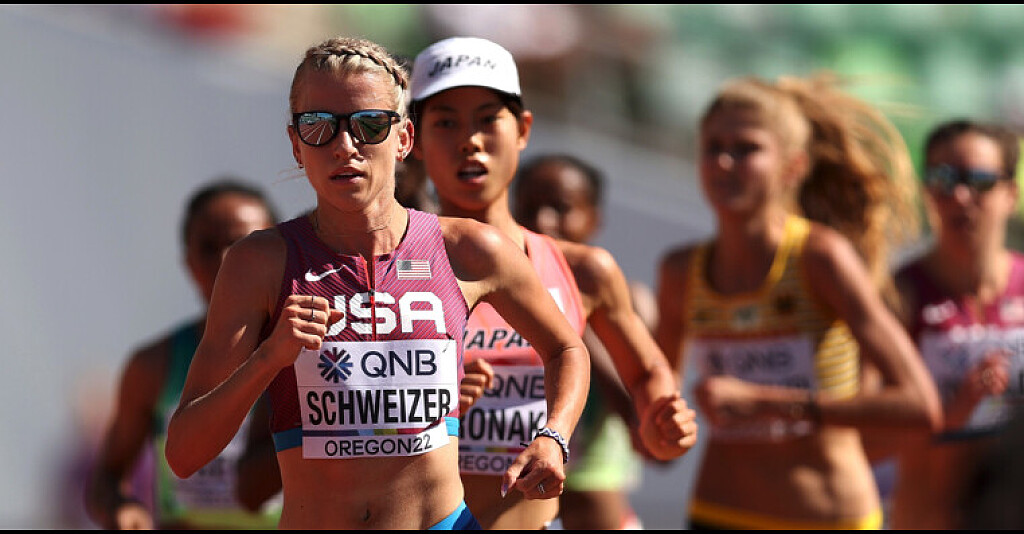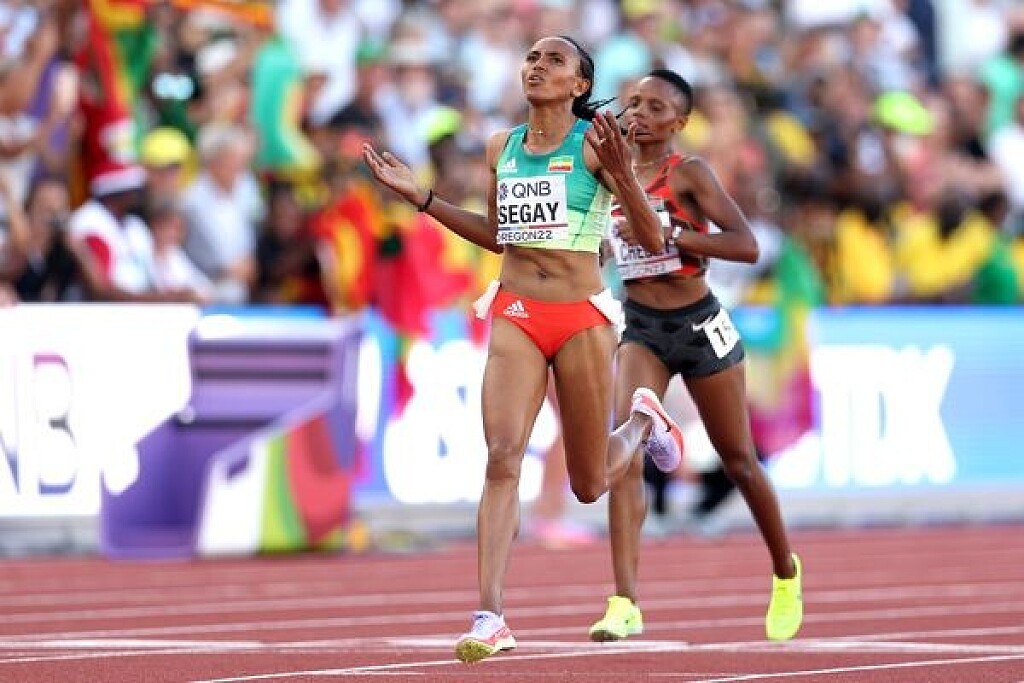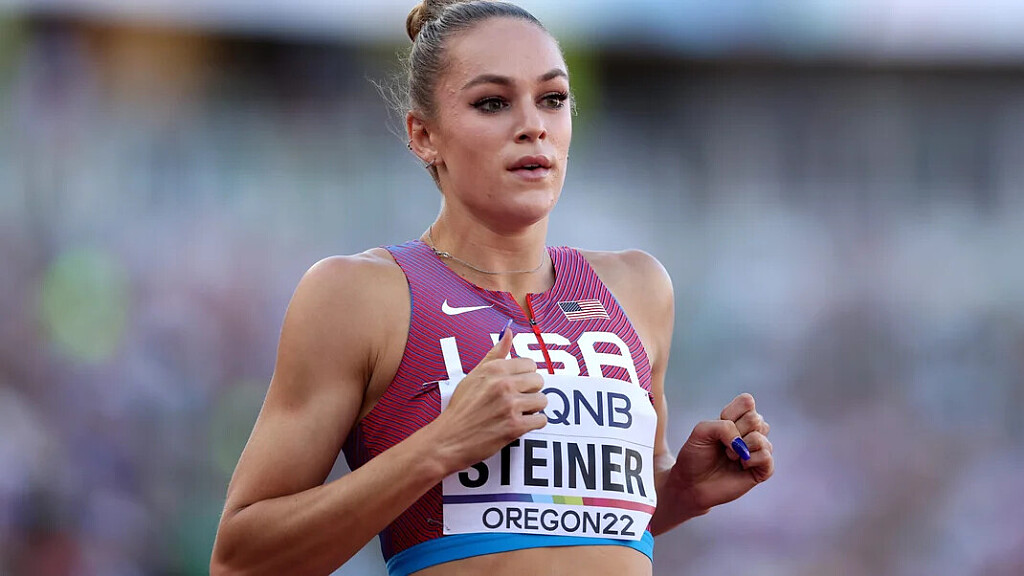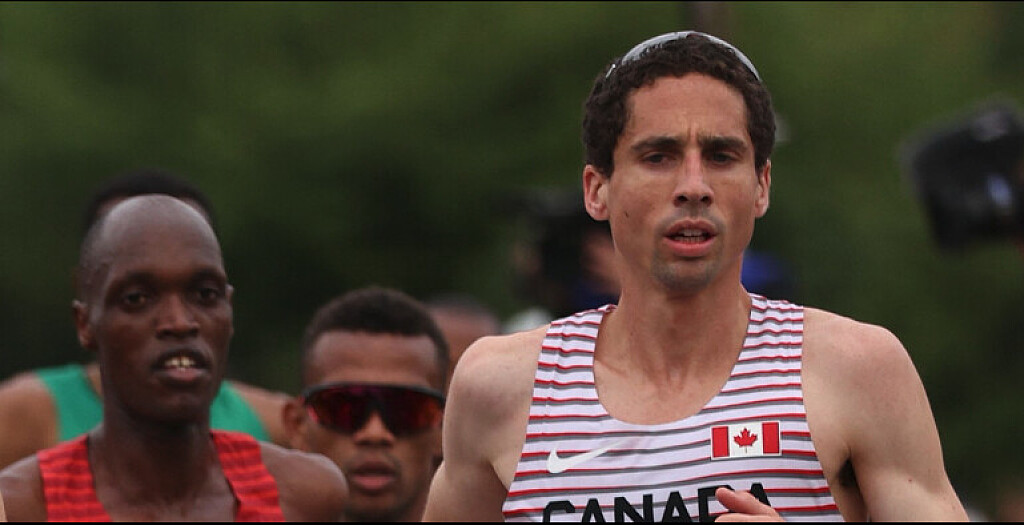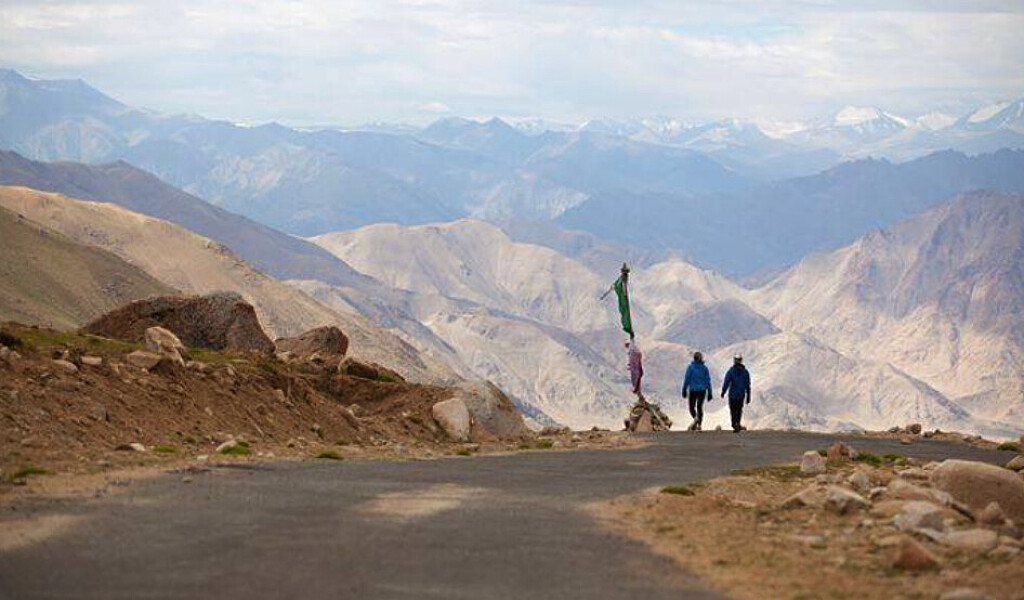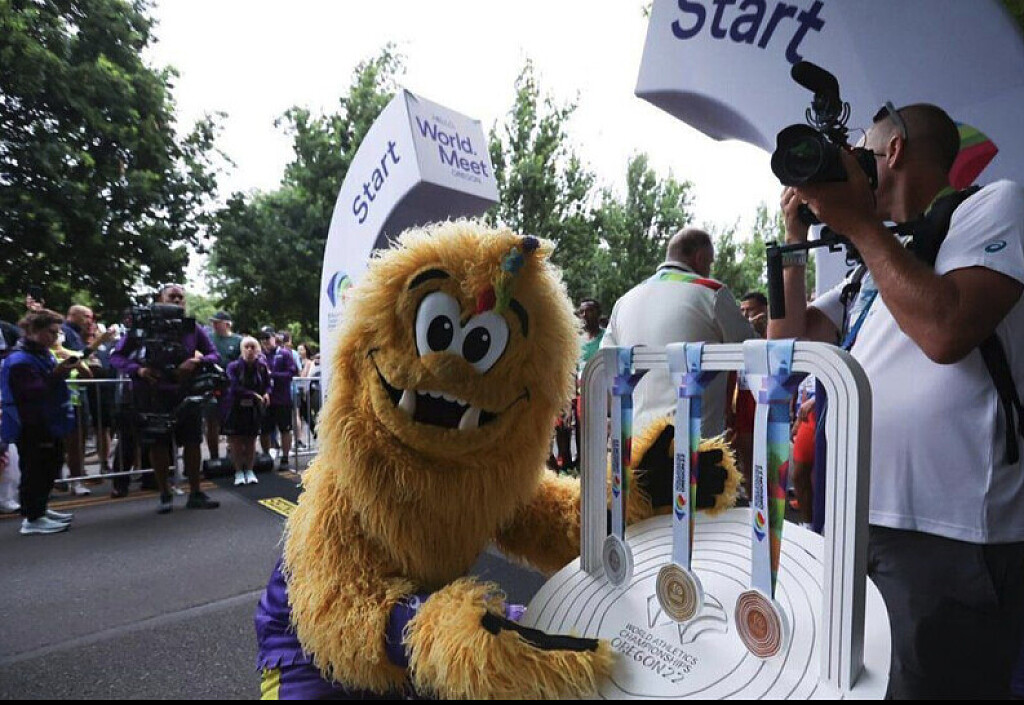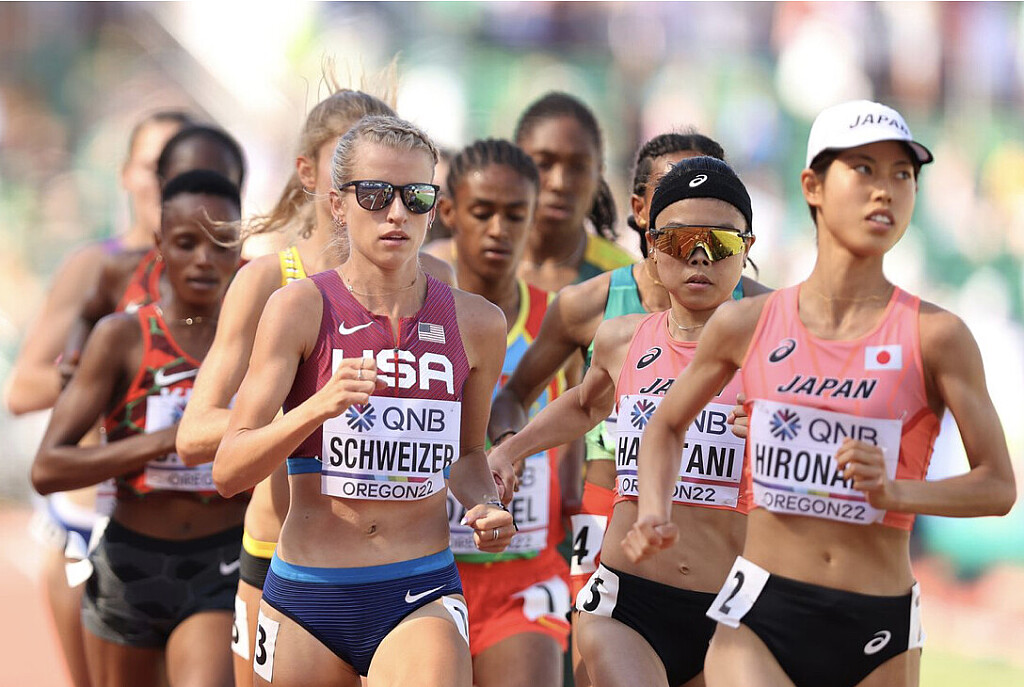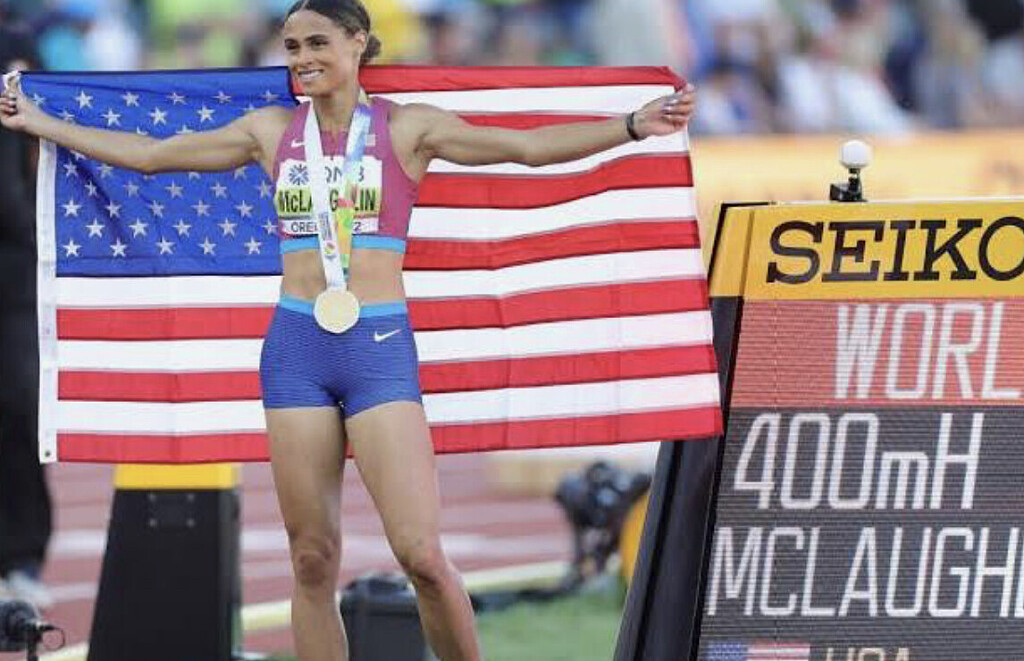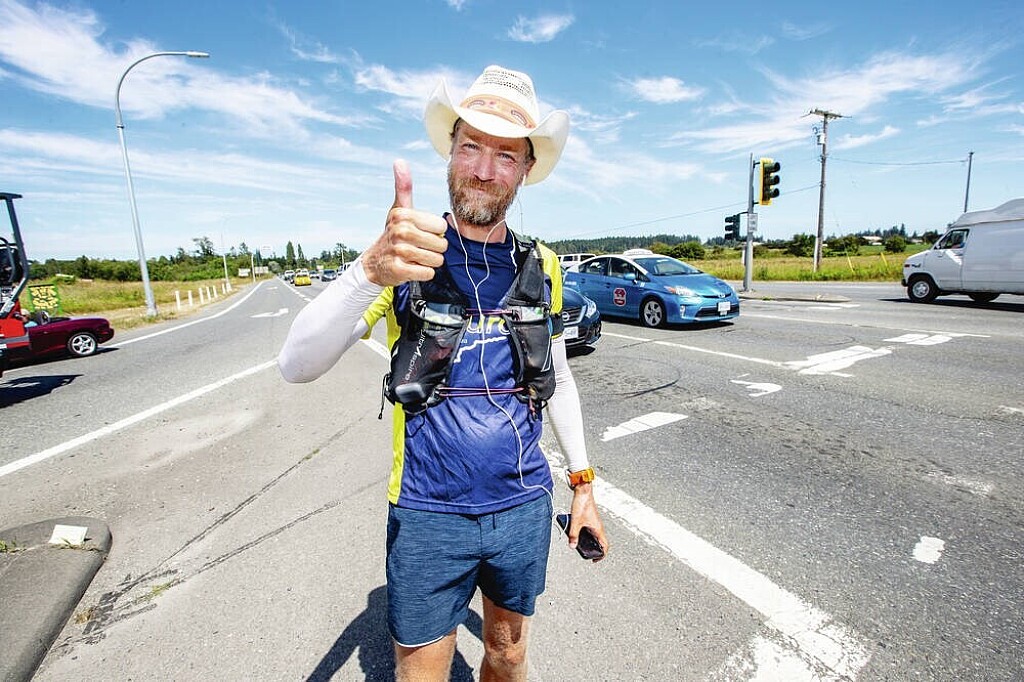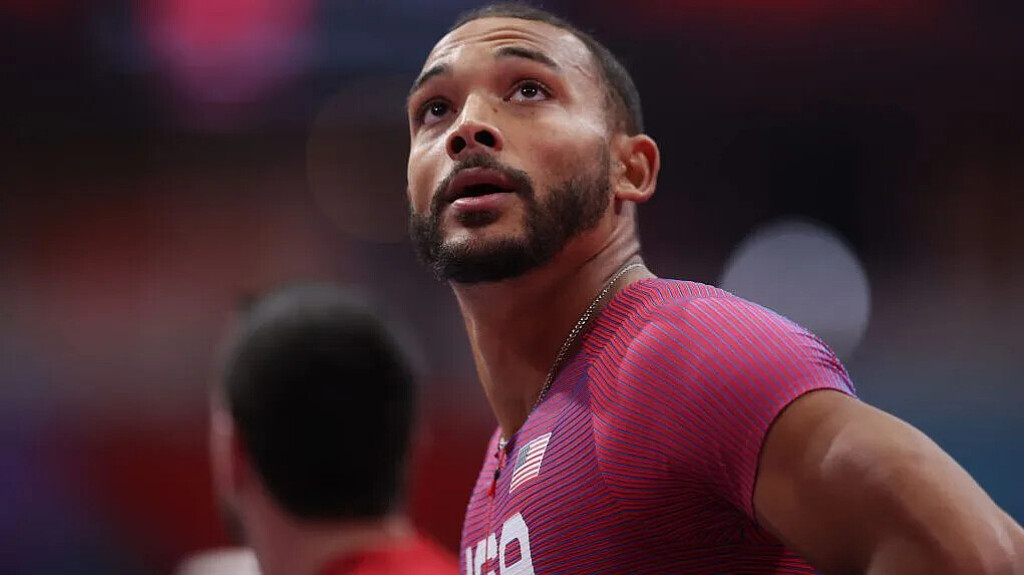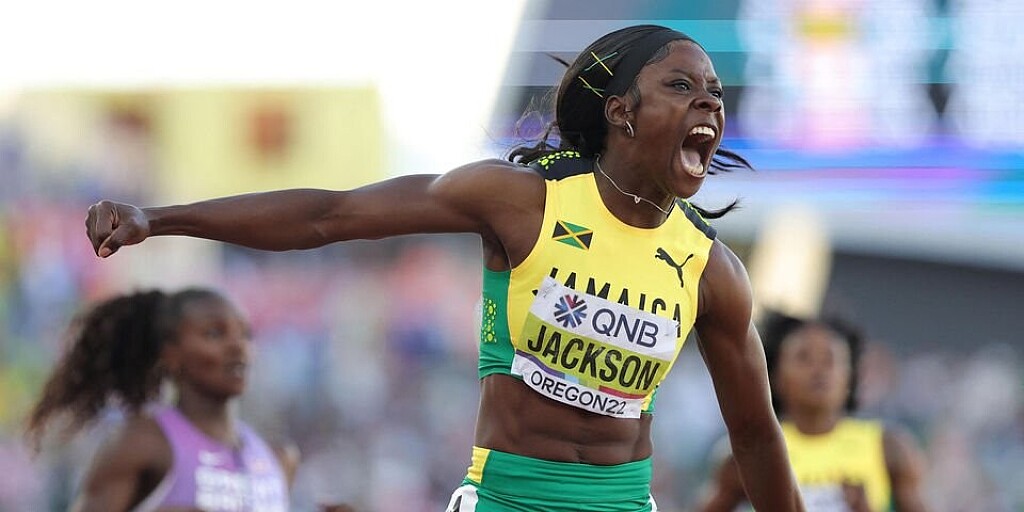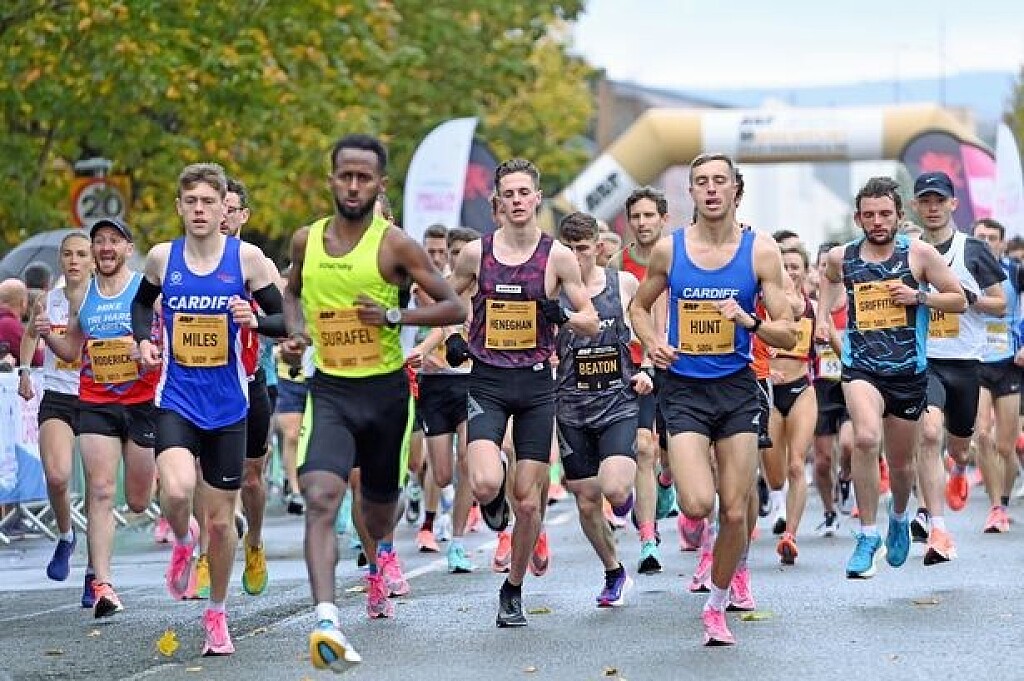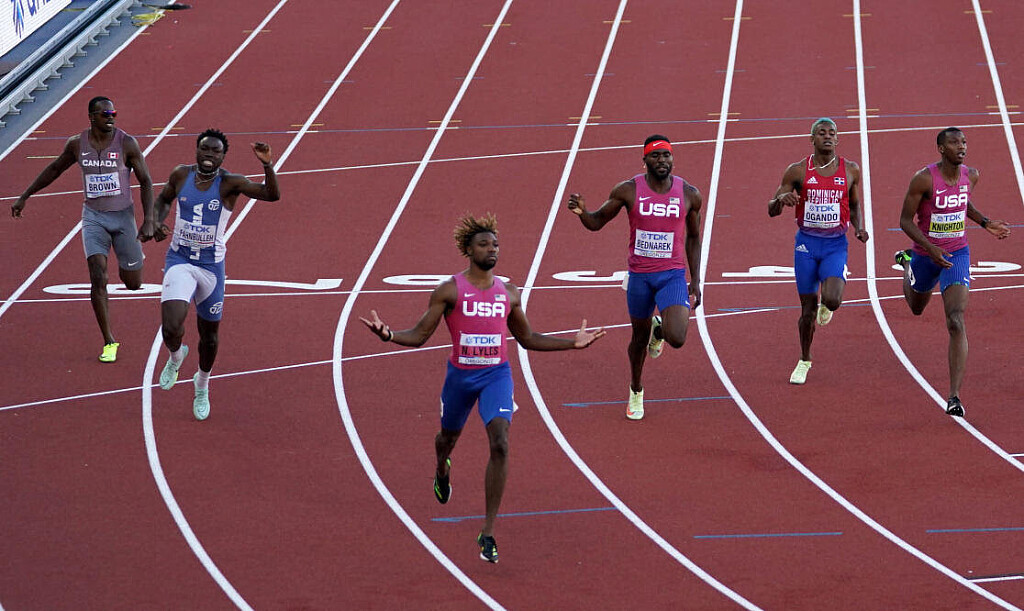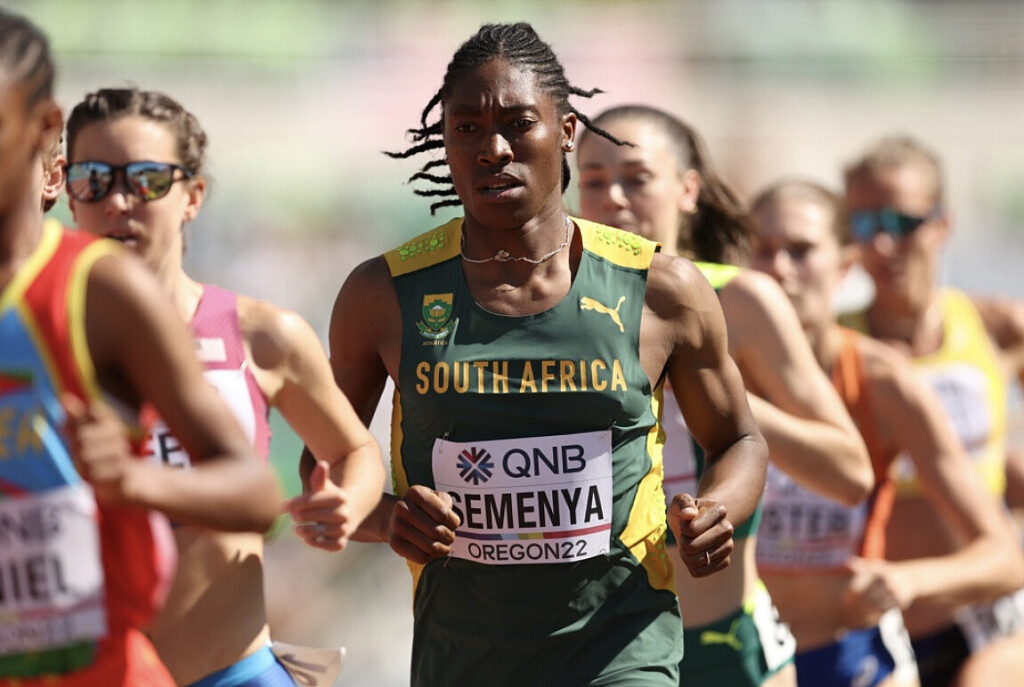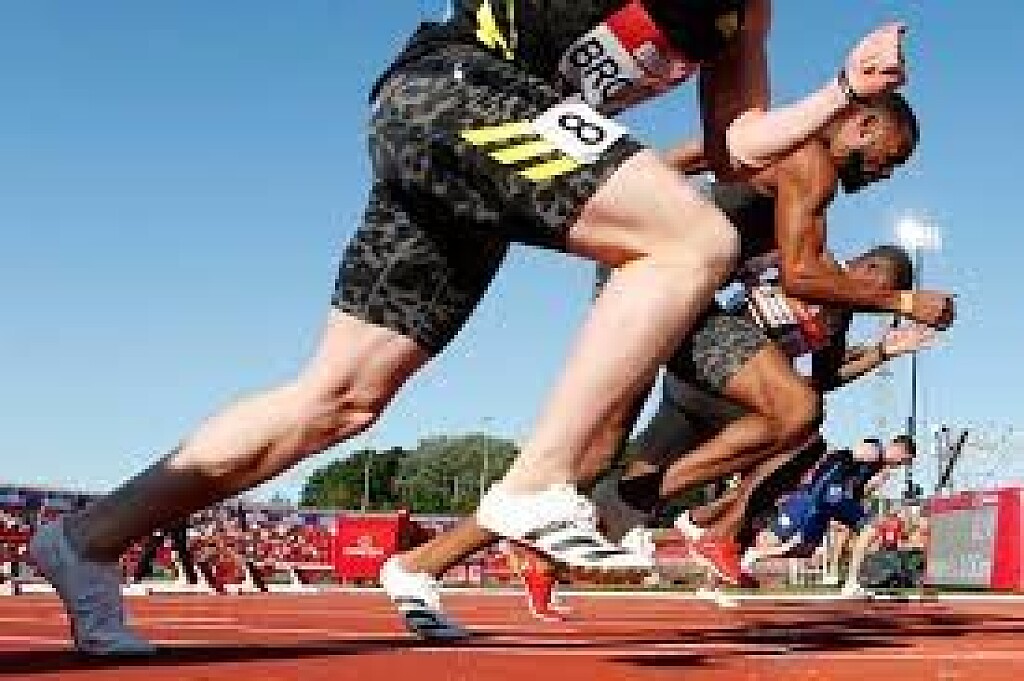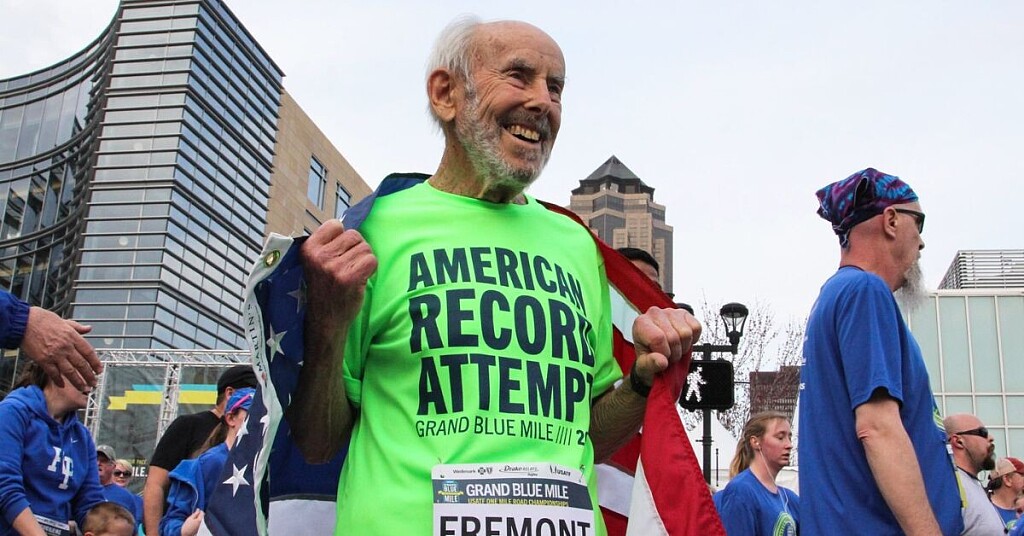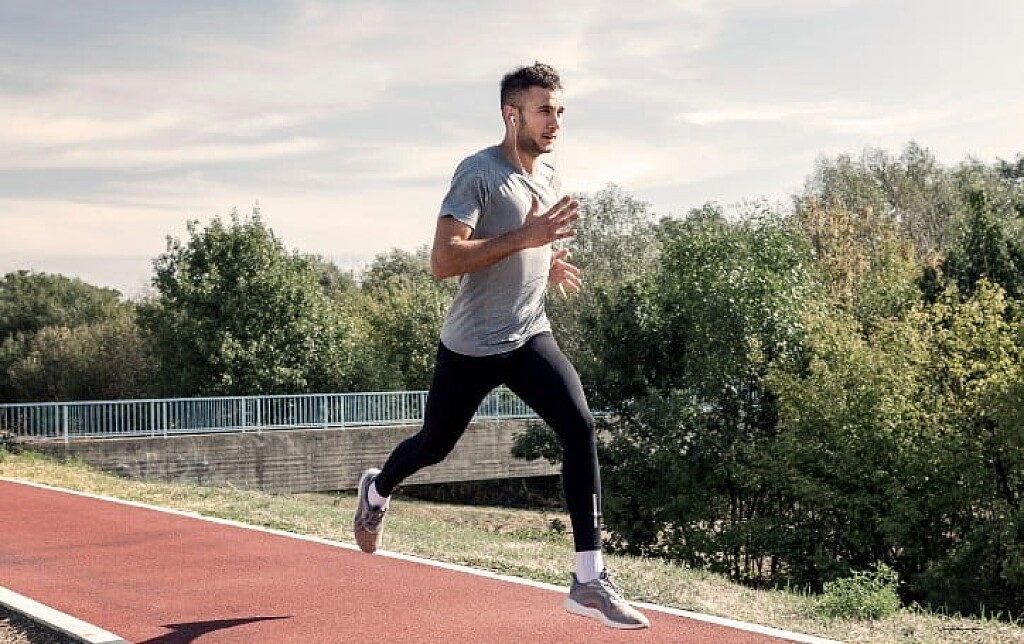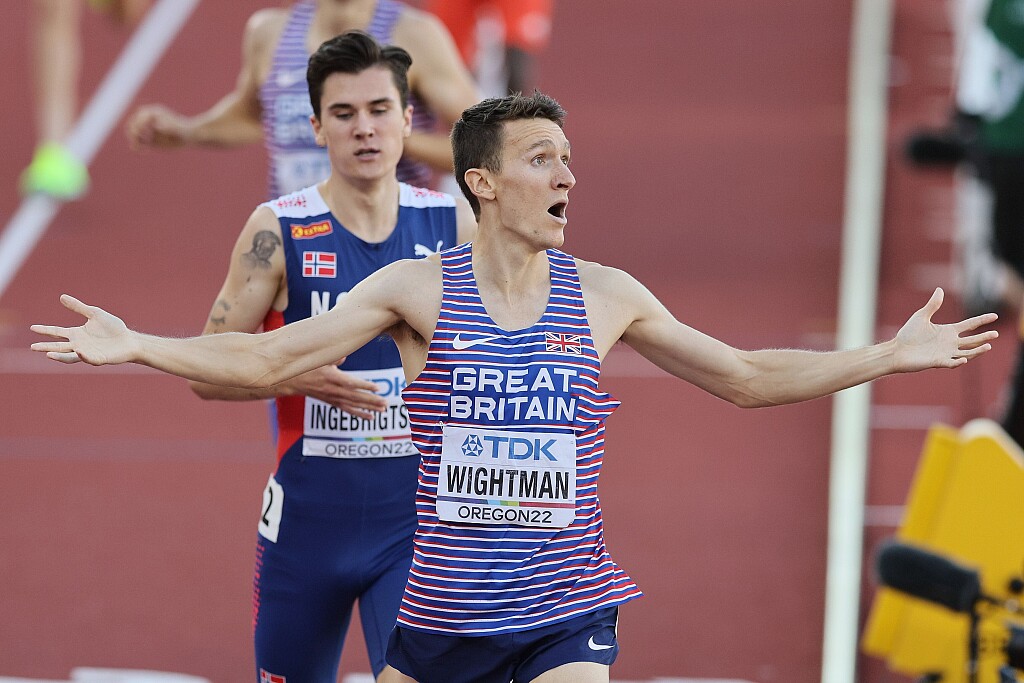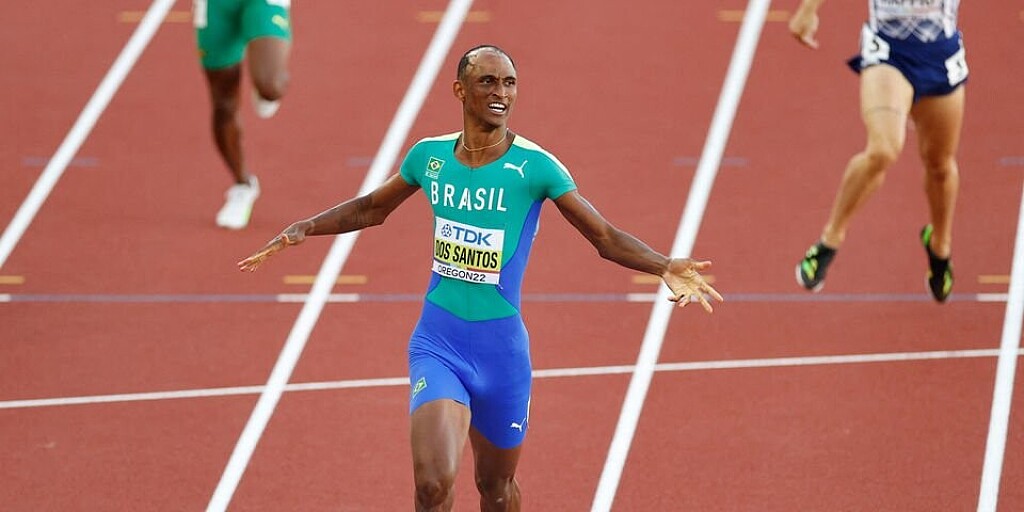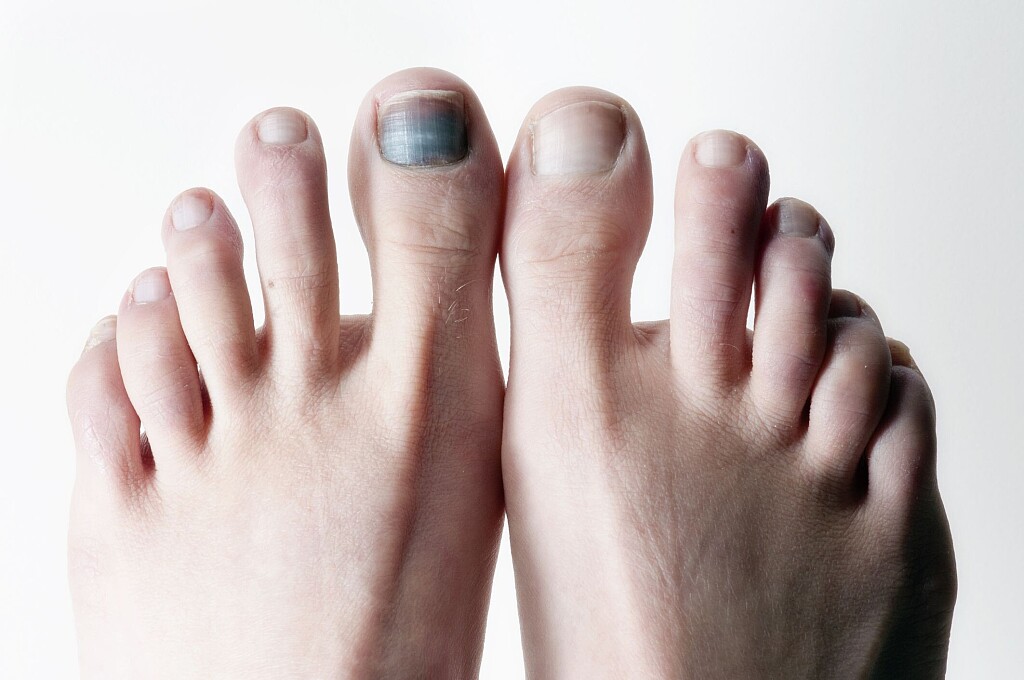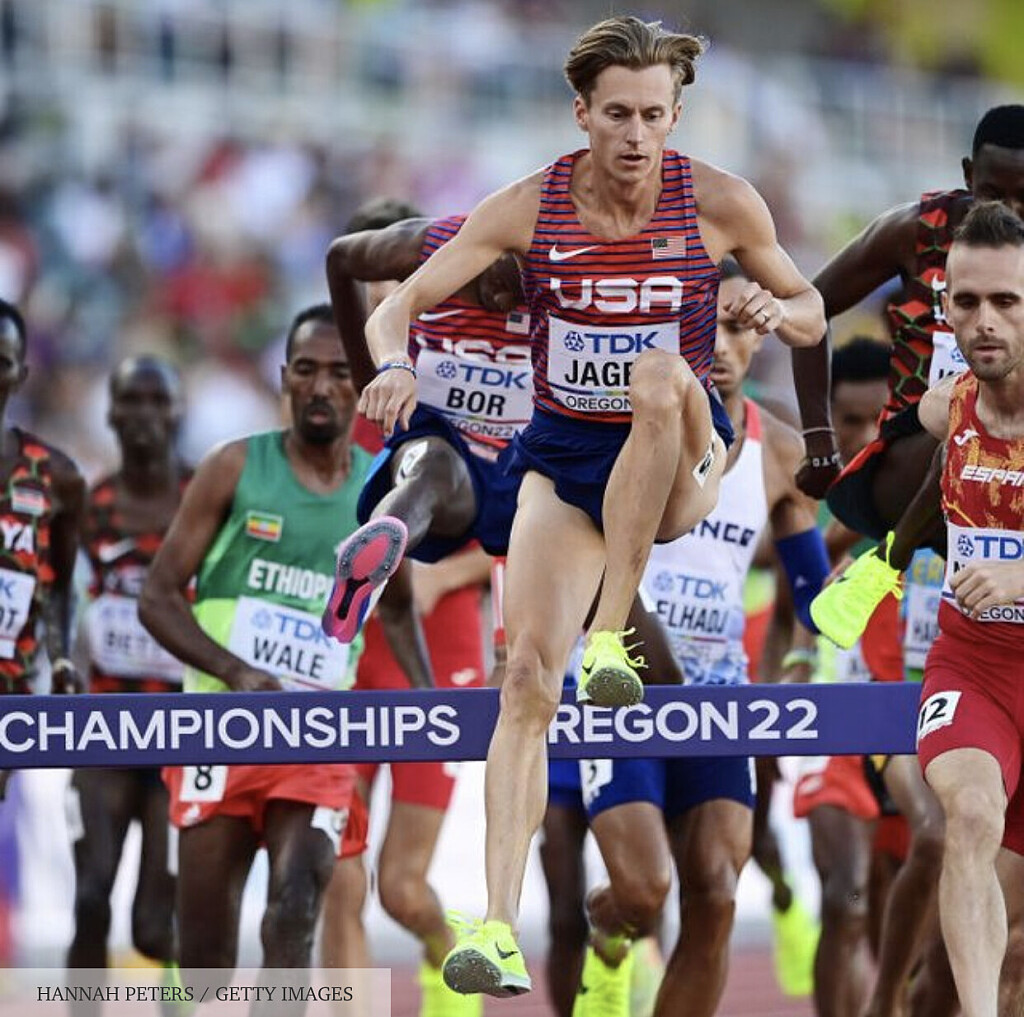Running News Daily
Running News Daily is edited by Bob Anderson in Mountain View, California USA and team in Thika Kenya, La Piedad Mexico, Bend Oregon, Chandler Arizona and Monforte da Beira Portugal. Send your news items to bob@mybestruns.com Advertising opportunities available. Over one million readers and growing. Train the Kenyan Way at KATA Running Retreat Kenya. (Kenyan Athletics Training Academy) in Thika Kenya. Opening in june 2024 KATA Running retreat Portugal. Learn more about Bob Anderson, MBR publisher and KATA director/owner, take a look at A Long Run the movie covering Bob's 50 race challenge.
Index to Daily Posts · Sign Up For Updates · Run The World Feed
Seven important running tips that every new runner should keep in mind
If you’re new to running, you may be overwhelmed by all the running information that’s available. Here are seven basic tips to get you started with a running habit.
1.- Make Sure You Warm Up and Cool Down
Good warm-up signals to your body that it will have to start working soon. By slowly raising your heart rate, the warm-up also helps minimise stress on your heart when you start your run. So you should start your runs with a brisk walk, followed by very easy jogging for a few minutes.

2.- Learn the Proper Upper Body Form
Improper upper body form can lead to pain in your arms, shoulders, neck, and back. Try to keep your hands at waist level, right about where they might lightly brush your hip. Your arms should be at a 90-degree angle, with your elbows at your sides. Keep your posture straight and erect. Your head should be up, your back straight, and shoulders level. Your arms should be at your sides. Crossing your arms over your chest could make you start hunching over, which leads to inefficient breathing.

3.- Don’t Worry About Pace
As a beginner, most of your runs should be at an easy or “conversational” pace. You should be able to breathe very easily and carry on a conversation. Don’t worry about your pace per mile – if you can pass the “talk test” and speak in complete sentences without gasping for air, then you’re moving at the right speed.
4.- Try a Run/Walk Approach
Most beginner runners start out using a run/walk technique because they don’t have the endurance or fitness to run for extended periods of time. The run/walk method involves running for a short segment and then taking a walk break. As you continue with a run/walk program, the goal is to extend the amount of time you’re running and reduce your walking time.
5.- Get the Right Running Shoes
Wearing the right running shoes is the key to comfort and injury prevention. Visit a running speciality store to get fitted for the right running shoes for your foot type and running style. Also, make sure you don’t run in worn-out running shoes – they should be replaced every 300-400 miles.
6.- Don’t Do Too Much Too Soon
New runners sometimes get too enthusiastic and anxious to get started and end up increasing their mileage too quickly, which can lead to injury. Don’t increase your weekly mileage by more than 10 percent each week. By building up slowly, you can save yourself pain and frustration, and still reach your goals.
7.- Breathe in Through Your Nose and Mouth
Some new runners assume they should breathe in only through their nose. You actually want to breathe in through your nose and mouth to make sure you’re getting enough oxygen to your muscles while running. Taking deep belly breaths can help prevent side stitches, which are a common issue for new runners.
(07/29/2022) ⚡AMPKenyans race walkers Gathimba and Ngii eye redemption in Commonwealth Games
Africa 20 kilometers race walking champions Samuel Gathimba and Emily Ngii are hoping to redeem themselves at the Commonwealth Games scheduled for July 28 to August 8 in Birmingham, England where the discipline is shortened to 10km.
The duo missed out on medals in the 20km Walk at the World Athletics Championships which ended on Sunday in Eugene, USA.
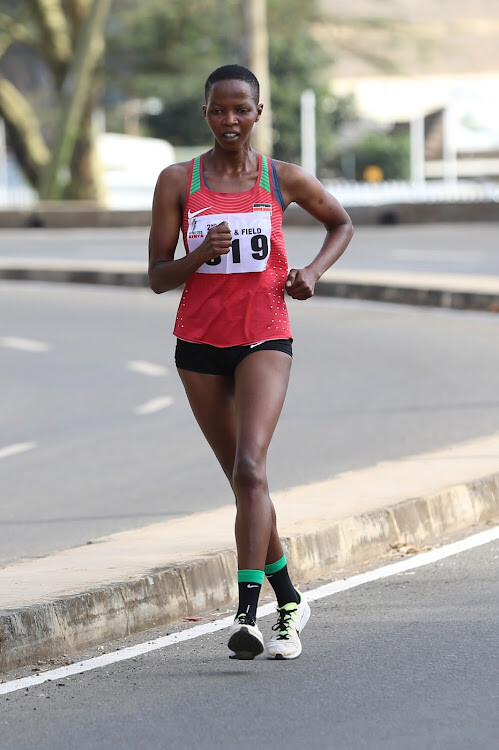
Gathimba, who came closest to a medal after finishing fourth in Eugene, has predicted a fierce battle in Birmingham.
"I arrived here (UK) on Tuesday night to a very cold Birmingham. I hope the weather will improve. I'll start training on Wednesday. I have never done 10km walk abroad, so this will be my first time. The challenge with 10km is it's like 'ugali sosa' (not the main meal), so it will be very fast.
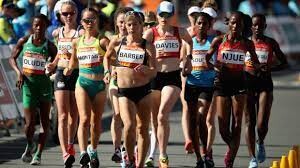
I need to get my calculations right in order to win. Doing so will also help me get invited more to competitions," said Gathimba.
He timed one hour, 19 minutes and 25 seconds just a few seconds behind medalists Toshikazu Yamanishi (1:19:07), Koki Ikeda (1:1914) and Perseus Karlstrom (1:19:18).
Ngii struggled with a stomach ache from 10km-mark on her way to 30th place finish.
"I have improved a lot after getting treatment. I'm ready. It's the first time I'm competing in 10km outside Kenya and I'm ready to bring a medal bad home, God willing," said Ngii.
Walk coach Benjamin Mbusya also expressed optimism in the duo.
"Obviously, some competition has been reduced because not all countries that were at the World Athletics Championships in Oregon are in Commonwealth Games. But I can assure you that we will get some medals and gold is possible," he said.
Gathimba won bronze at the 2018 Commonwealth Games in Gold Coast, Australia and bagged the same medal at the Race Walking World Championships in Oman in March this year.
(07/29/2022) ⚡AMPby Geoffrey Anene
The Commonwealth Games
The Commonwealth Games are coming to Victoria - bringing an action packed sports program to our regional cities and delivering a long-term legacy for our future. From 17 to 29 March 2026, Geelong, Bendigo, Ballarat, Gippsland and Shepparton will be on the world stage, attracting millions of viewers and creating thousands of jobs. The multi-city model will...
more...Use this workout to help you run strong through the 5k finish line
A key element to running a personal best in a 5K is having the strength to kick in the final kilometer. Here is a workout is designed to teach you how to effectively change gears and crank up the pace when your legs are feeling tired.
Not only is the goal to get you confident and familiar with your 5K goal pace, but the mix of tempo and interval work should simulate how you’ll feel at the four-kilometer mark in your race, helping you run strong straight through the finish line.
The workout
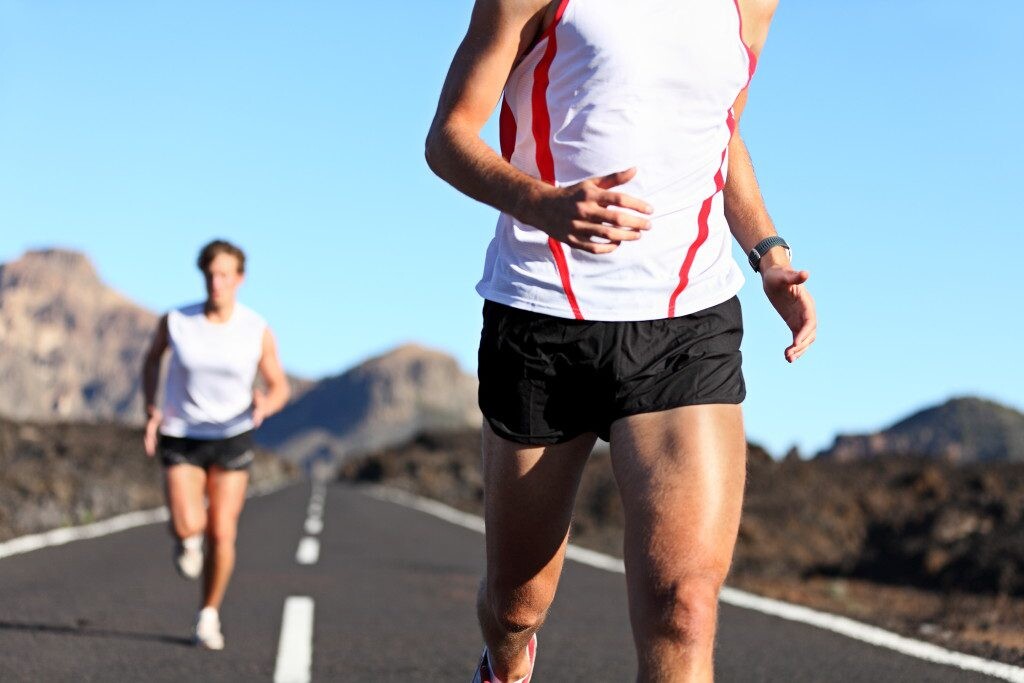
Eight to 10-minute tempo at 20 to 30 seconds slower than your goal 5K pace, two minutes’ jog rest, then eight reps of 45 seconds at race pace with two minutes’ jog rest between reps.
Example: 27:30 5K goal – 5:30/km, tempo pace = 5:50 to 6:00/km, with jog rest at 7:00/km or slower

Before you get started, make sure to do a 10 to 15 minute warm up jog, followed by dynamic stretching and strides.
The first part of the workout is meant to warm up your legs for faster intervals; make sure to keep this part of the workout under control and relaxed.
The jog rest should be done at two minutes slower than your interval pace. This will allow your heart rate to come down a bit between reps.
Treat each 45-second interval as you would if you were racing a 5K. Keep that goal pace in your head and make the uncomfortable feel comfortable.
(07/29/2022) ⚡AMPby Madeleine Kelly
Coming back to running after a break can be challenging
It can be hard to be patient while you build back your fitness. There’s a multitude of reasons you may have taken a break: whatever your reason was here are some thoughts.
Depending on how long you ran prior to taking a break (and how much time off you took), you may have a base of fitness to build on. Here are a few tips to get you back on track (literally).

Know your starting point
Accept your fitness level where it is at this moment in time. It’s important to have an accurate idea of your starting point so that you can build from there without getting injured. If you’ve taken a long break or been mostly sedentary during your time off, you’ll need to start more gradually–and that’s not a bad thing. You’ll still see improvement quickly.

Try to enjoy the process and know that your running ability will improve more quickly than if you were starting for the first time.
Start slow (walking is good!)
“It’s very important to build in incremental steps,” says Lethbridge-based running coach and fitness trainer Chantelle Erickson. “Steer clear of doing too much, too soon.” Erickson suggests finding a training program that is formatted into training blocks and slowly adding volume over several weeks. A few weeks of building should be followed by a week of easy or recovery days. If you haven’t been moving around much at all, start with walks of an hour or less to gain some strength.
A walk/run program is an excellent way for people to get back to their running routine, and while it can be challenging to wrap your head around taking walk breaks when you want to be running an hour at a time, you’re far better off adding stress gradually. Try five to ten minutes of running, take a walk break and repeat. Keep those initial runs short and easy, and take a day off in between workouts.
Remember that strength is built during recovery
If you used to run most days of the week, taking a day off in between workouts and a recovery week each month may sound ridiculous, but it may be the most important thing you do. “Growth happens in the rest phase when the body repairs itself,” Erickson explains.
“You will come into your next workout stronger, and each week and month you will begin to see the difference incremental changes are making both in structural tolerance and cardiovascular development.”
With a bit of patience and time, you’ll be running effortlessly, stronger than you’ve ever been.
(07/28/2022) ⚡AMPby Keeley Milne
Dina Asher-Smith out of the Commonwealth Games
Sprinter forced to withdraw due to minor hamstring strain sustained at the World Championships in Eugene.
Dina Asher-Smith has pulled out of the Commonwealth Games in Birmingham after pulling her left hamstring in the 4x100m at the World Championships in Eugene on Saturday.

Asher-Smith equalled her British 100m record in Eugene before winning bronze in the 200m at the championships but she pulled up during the third leg of the sprint relay and after arriving back in Britain she has been advised to take a few days off running.
In Eugene she walked off the track without limping or seeking immediate medical help after the injury occurred. But after medics have examined her it means she will miss the big Birmingham event but is likely to return to defend her European titles in Munich later in August.
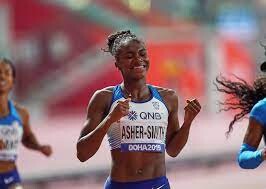
She won 4x100m gold and 200m bronze at the last Games on the Gold Coast in 2018. She said: “Unfortunately, I’ve got a slight hamstring strain and won’t be ready to race next week at the Commonwealth Games.
“I love racing in front of a British crowd and was so excited to return to Birmingham, so I’m sad that I won’t be there, but I know that the athletes will put on a great show. Wishing the best of luck to all my team-mates!”
Kelly Sotherton, Team England’s team leader for athletics at Birmingham 2022, said: “It’s obviously really sad to lose Dina through injury, given her stature and standing as one of the best female athletes in the world.
“We know just how much she was looking forward to being part of Team England at a home Games in Birmingham. We wish Dina well with her recovery and hope to see her back on the track very soon, doing what she does best.”
(07/28/2022) ⚡AMPby Jason Henderson
The Commonwealth Games
The Commonwealth Games are coming to Victoria - bringing an action packed sports program to our regional cities and delivering a long-term legacy for our future. From 17 to 29 March 2026, Geelong, Bendigo, Ballarat, Gippsland and Shepparton will be on the world stage, attracting millions of viewers and creating thousands of jobs. The multi-city model will...
more...Sydney Marathon has been announced as an Abbott World Marathon Majors candidate race
The Blackmores Sydney Marathon has officially been announced as a candidate race for the Abbott World Marathon Majors (AbbottWMM) – the first marathon in Oceania to be nominated.
The announcement marks the commencement of a multi-year evaluation process by AbbottWMM.

To become a Major, the Sydney Marathon will be required to meet strict criteria over a three-year period and if successful, will join an esteemed group of races – Tokyo Marathon, Boston Marathon, TCS London Marathon, BMW-BERLIN Marathon, Bank of America Chicago Marathon and TCS New York City Marathon – as a new member of the prestigious Abbott World Marathon Majors in 2025.
“We have always believed that the Blackmores Sydney Marathon has what it takes to be an Abbott World Marathon Major, so becoming one of only three candidate races is a tremendous honor”, said Wayne Larden, Race Director, Sydney Marathon.
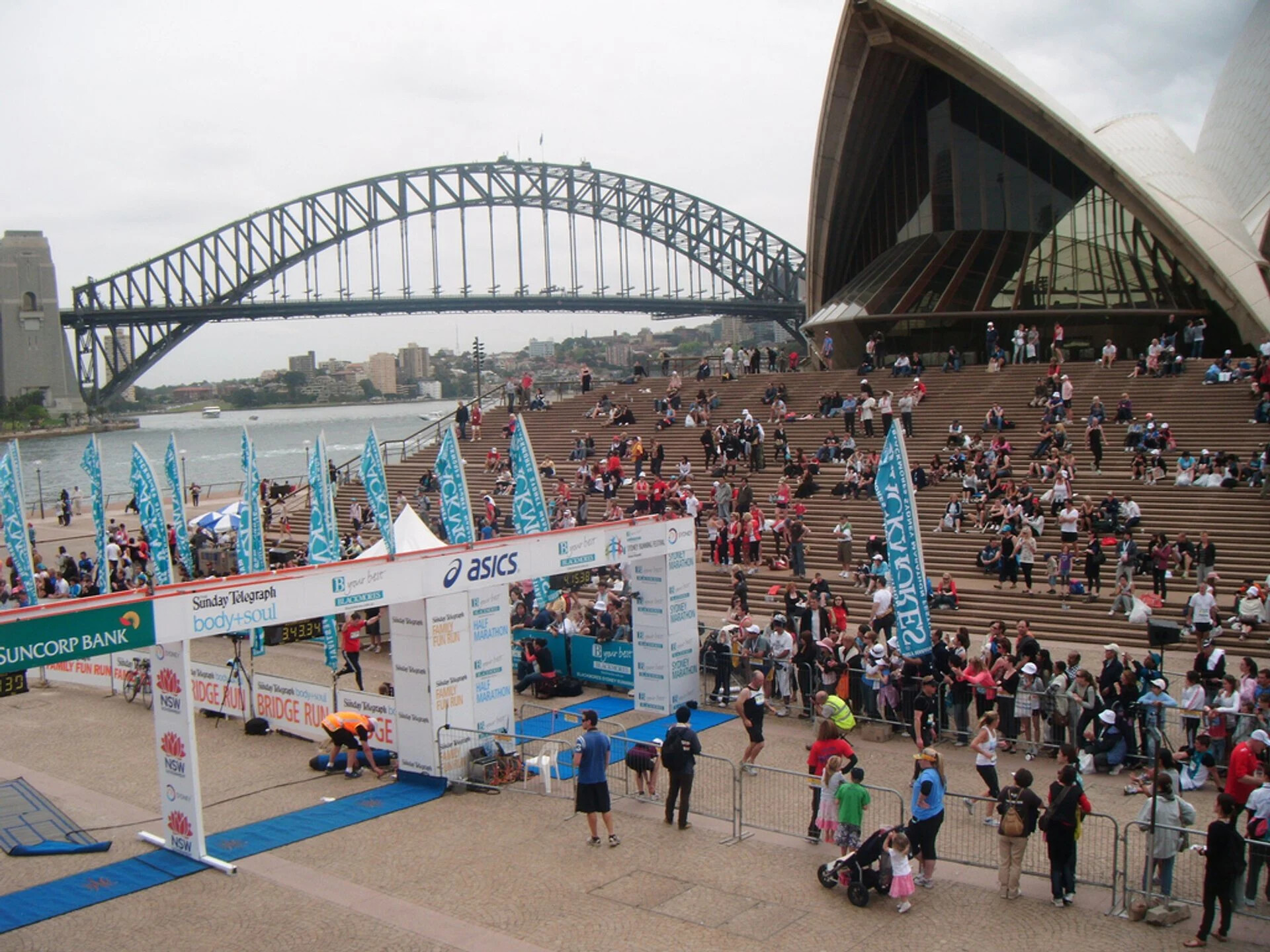
“The Sydney Marathon is part of Australia’s largest running festival, the Sydney Running Festival, attracting thousands of participants to run across the iconic Sydney Harbour Bridge and finish under the sails of the Sydney Opera House each year.
“We can now take a huge leap forward and become one of the most iconic running events in the World and achieving this status would be a tremendous boost for Sydney and Australia. Australia is a proud sporting nation, and we want to call on all of Australia’s runners from all over the country and runners from overseas to support the Sydney Marathon achieve the criteria to become an Abbott World Marathon Major in Sydney.”
Whilst the Sydney Marathon already meets many of the requirements set by the Abbott World Marathon Majors and continual enhancements will be made to the race over the next three years including significant growth of our marathon finishers.
“We are pulling out all the stops to achieve these goals and greatly appreciate the support of the running community across Australia and Overseas, as well as the support from our partners, sponsors, staff and volunteers who are helping to make this dream a reality.” Larden said.
The Sydney Marathon and its candidacy for the Abbott World Marathon Majors series is supported by the NSW Government through its tourism and major events agency, Destination NSW.
NSW Minister for Tourism and Sport Stuart Ayres said the candidacy acknowledges the Sydney Marathon as a world-class event with one of the most spectacular marathon courses on the planet.
“No city in the world has a better combination of natural beauty, love of sport and iconic infrastructure for hosting a marathon than Sydney. The Sydney Marathon is recognized as one of the world’s best marathon events, uniting people of all backgrounds to enjoy an unforgettable running experience. The World Marathon Majors candidacy recognizes Sydney as a premier destination to join the great marathon cities of the world, while showcasing Sydney’s natural beauty and desirable lifestyle to a global audience.
“Achieving the status of an Abbott World Marathon Major would cement Sydney’s position as one of the world’s great sporting event cities. It would attract thousands of visitors to the Harbour City and play a key role in the NSW Government’s ambition to make Sydney and NSW the major events capital and premier visitor economy of the Asia Pacific,” Mr Ayres said.
A legacy event of the Sydney Olympics, the Sydney Marathon will attract some of the world’s greatest long-distance runners and wheelchair athletes to Sydney throughout the candidacy period. The presence of these elite athletes is expected to draw significant interest in the event, lower current finish times and act as a drawcard for age group runners.
The candidacy also sees Infront, a Wanda Sports Group company, become a stakeholder in the Sydney Marathon. The organization will provide strategic input on both media rights and sponsorship strategy whilst also supporting the event throughout the evaluation phase.
Hans-Peter Zurbruegg, Senior Vice President Personal & Corporate Fitness at Infront, said: “Sydney is an amazing destination and has an iconic marathon with a strong legacy. Infront is delighted to form part of the efforts to make it an AbbottWMM event in the coming years. The event is already recognized as a success, and we will leverage our expertise, networks, and insights to elevate the event to the next level. We are proud to work in close partnership with the Abbott WMM team, as well as the Sydney team including all stakeholders to make the dream of establishing a WMM event in Sydney, Australia come true.”
CEO Athletics Australia, Peter Bromley added: Athletics Australia is extremely proud to be the owners of Australia’s greatest running festival. A legacy event of the Sydney 2000 Olympic Games, it has a long and prestigious history. Building on that, this candidacy opportunity will deliver significant growth to the event and showcase the sport of Athletics far more broadly. We look forward to assisting the event achieve the criteria and become an Abbott World Marathon Major.
Dawna Stone, recently appointed Abbott World Marathon Majors CEO said, “The Abbott World Marathon Majors are delighted to welcome the Sydney Marathon into the candidate process from 2022. This presents an exciting opportunity to expand our impact into Oceania and further our mission to create, grow and support opportunities for all to discover the power of the marathon community. We look forward to working closely with the team in Sydney as we start this journey together!”
The marathon is part of the Sydney Running Festival which boasts incredible courses that take in Sydney’s most scenic and iconic landmarks. The Sydney Marathon provides runners with the unique opportunity to run over the spectacular Sydney Harbour Bridge, traffic-free, before crossing the finish line surrounded by the sails of the Sydney Opera House.
In addition to the Sydney Marathon, Cape Town’s Sanlam Marathon and China’s Chengdu Marathon are currently part of the AbbottWMM candidate process. Only three candidate spots are available.
The Blackmores Sydney Running Festival including the Sydney Marathon will take place on Sunday September 18, 2022. Entries are open at sydneyrunningfestival.com.au.
(07/28/2022) ⚡AMPby Running USA
Sydney Marathon
The Sydney Marathon is a marathon held annually in Sydney, Australia. The event was first held in 2001 as a legacy of the 2000 Summer Olympics, which were held in Sydney. In addition to the marathon, a half marathon, 9 kilometres (5.6 mi) "Bridge Run", and a 3.5 kilometres (2.2 mi) "Family Fun Run" are also held under the banner...
more...TCS London Marathon extends pregnancy deferral for up to 3 years
The 2022 TCS London Marathon has announced that they will now allow pregnant and postpartum women to defer their racing spot for up to three years. Along with the updated pregnancy deferral terms, the marathon has made several other substantial policy changes to enhance the inclusivity of their race.
Pregnancy deferrals were previously allowed at London Marathon, but only for one year, and participants weren’t able to retain the category they had qualified for the race in. If a runner qualified into a Championship or Good For Age category, they had to defer to a general entry or re-qualify.
Last year, ultrarunner Sophie Power campaigned for this policy. After a photo of the athlete breastfeeding during Ultra-Trail du Mont-Blanc (UTMB) went viral, the runner was inspired to advocate for more fair race policies for pregnant and postpartum women through her initiative SheRACES.
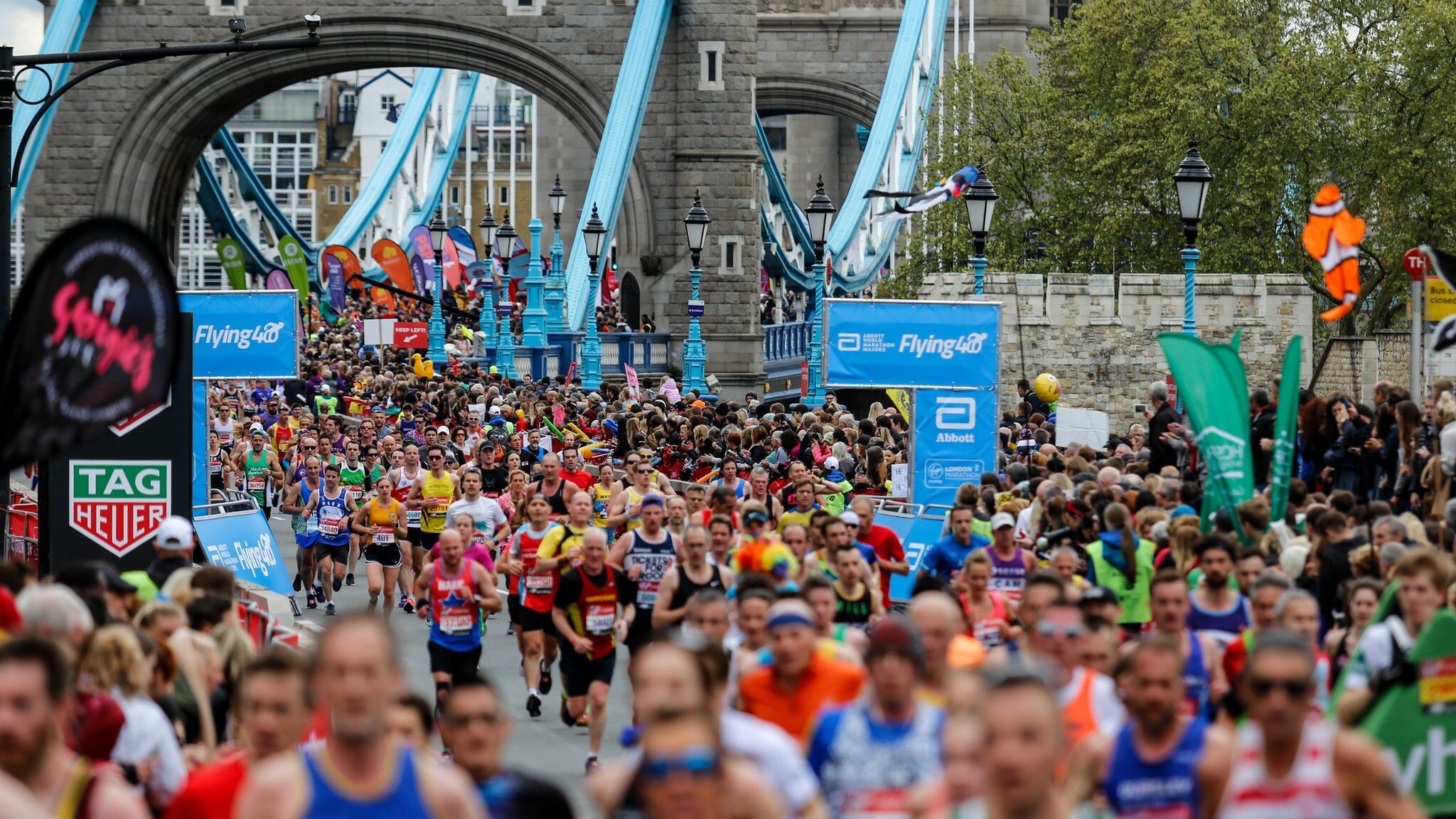
Powers explains on the SheRACES website: “I was famously photographed racing the UTMB, a 106-mile mountain race whilst breastfeeding my 3-month-old baby. I wanted to defer my place until I was fully fit but whilst the organization will defer places for injury, for them pregnancy is seen as a choice. Completing the UTMB was a dream for me, and having already lost a hard-won place whilst pregnant with my first son I chose to race. Many women lose out on that opportunity.”
Entries for assisted participants
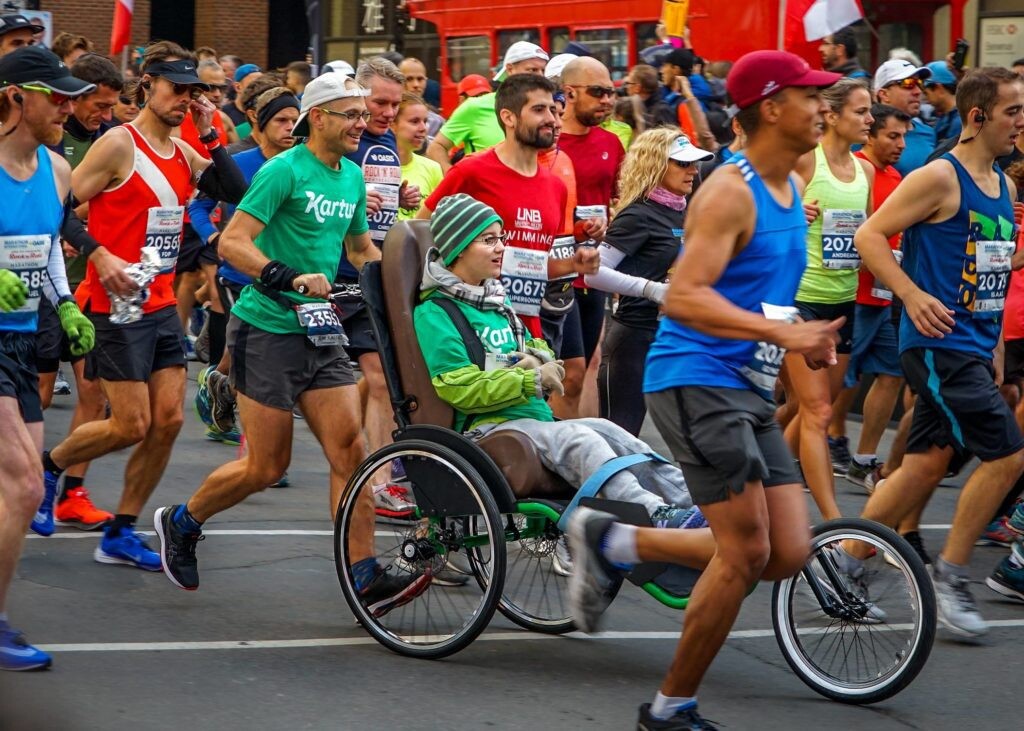
Until 2022, wheelchair participants had to be complete the marathon by themselves: no assistance was allowed. Wheelchair racers who need to be assisted or pushed by others will be allowed to enter the London Marathon.
Virtual London Marathon special considerations
Runners who opt for the virtual London Marathon are currently required to run the 42.2 kilometres on race day (within 24 hours). As of 2022, those who cannot run on marathon day for religious reasons can run their race on the next appropriate day. Participants with a disability that prevents them from completing the virtual race within the time limit have now been given special dispensation to finish their run taking any time that they need.
These changes follow in the footsteps of other races: Western States Endurance Run, a 100-mile ultra, changed its race policies to include a three-year deferral for pregnant runners last year.
London Marathon event director Hugh Drasher says the new policies are part of a series that will be expanded in the future, with the objective of making the race: “the most diverse, equitable and inclusive marathon in the world.”
(07/28/2022) ⚡AMPby Keeley Milne
TCS London Marathon
The London Marathon was first run on March 29, 1981 and has been held in the spring of every year since 2010. It is sponsored by Virgin Money and was founded by the former Olympic champion and journalist Chris Brasher and Welsh athlete John Disley. It is organized by Hugh Brasher (son of Chris) as Race Director and Nick Bitel...
more...Africa 100 meters champion Ferdinand Omanyala and women’s wheelchair basketballer Carolina Wanjira will be Kenya's flag-bearers as games start
Africa 100 meters champion Ferdinand Omanyala and women’s wheelchair basketball player Carolina Wanjira will be Kenya’s flag bearers during the opening ceremony of the 22nd Commonwealth Games on Thursday at Alexander Stadium, Birmingham, England.
Kenya will be represented by 127 sportsmen and women at the Birmingham Games that will have a largest number of competitors, 5,054, drawn from 72 nations.
The competitors will fight for medals in 20 disciplines and eight para sports will feature, making it the biggest programme ever for Commonwealth Games.
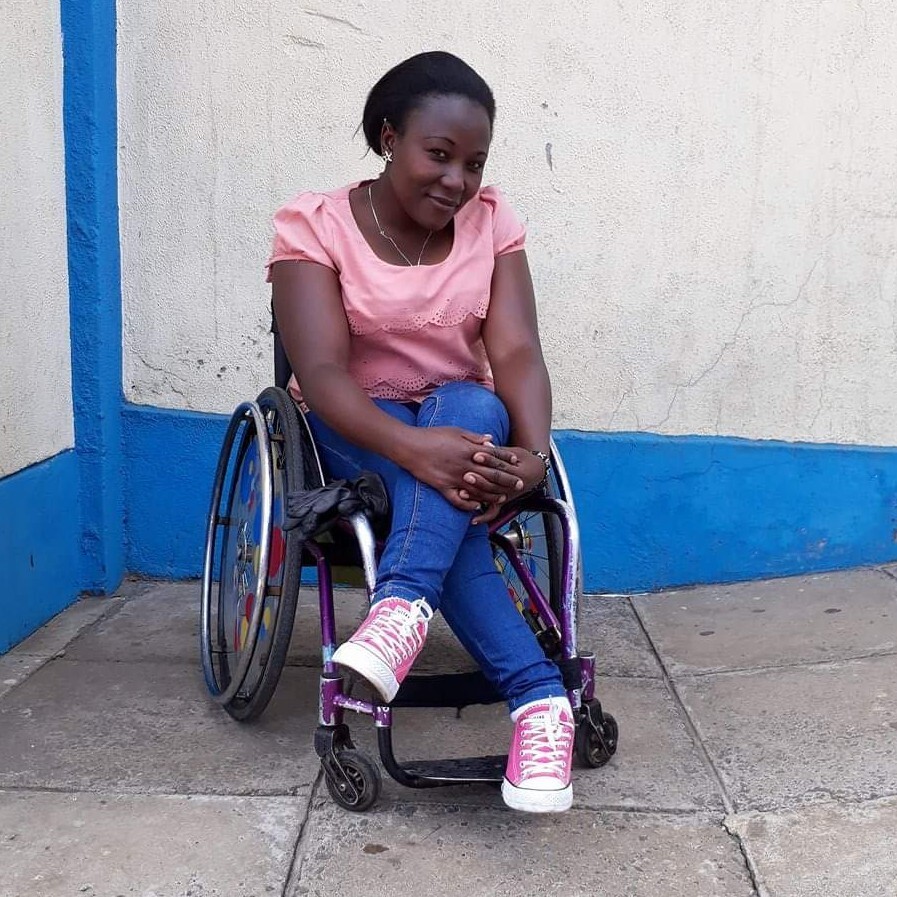
Prince Charles will represent Queen Elizabeth II during the opening ceremony that will start at 10am Kenyan time.
The 3x3 basketball, cricket T20 and mixed synchronised diving are the sports that will feature for the first time at the Commonwealth Games that will see 280 different medal events.
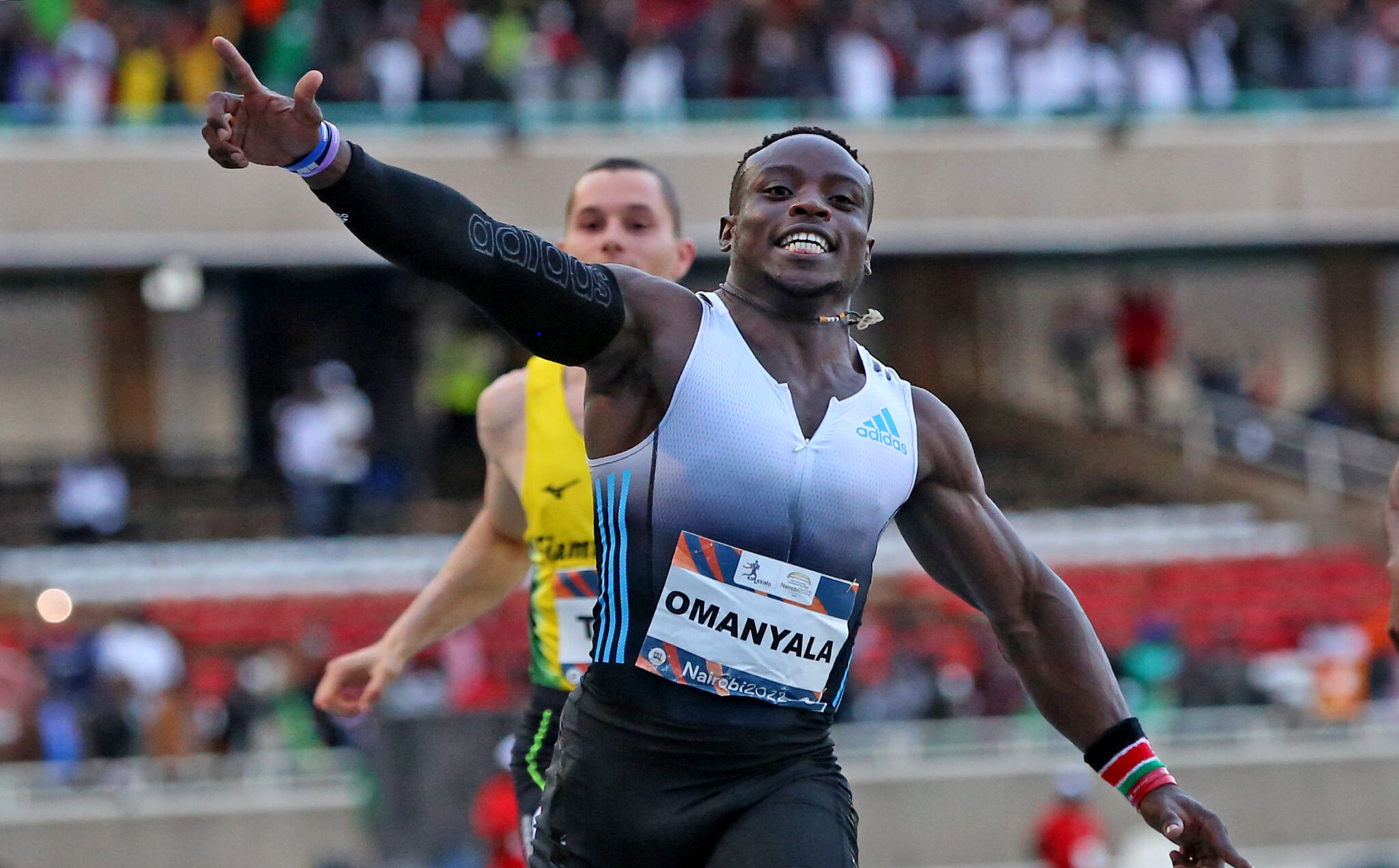
Kenya has entered both the men and women’s teams in the 3x3 basketball.
Kenya’s best performance at the Games came during the 2010 Delhi, India and 2014 Glasgow, Scotland Games.
In Delhi, the country hauled 32 medals; 12 gold, 11 silver and nine bronze with all the medals coming from athletics except three; one gold in swimming and two bronze in boxing.
The golden moments came from legendary swimmer Jason Dunford, who claimed victory in the men's 50m butterfly.
The late Joshua Ndere Makonjio collected bronze in light heavyweight with Nicholas Okoth going for a similar medal in bantamweight.
Kenya hauled 25 medals; 10 gold, 10 silver and five bronze from Glasgow with all the medals coming from athletics except two bronze medals by Benson Gicharu (boxing) and Joyce Wambui Njuguna (weightlifting).
However, Kenya’s performance dipped at the previous 2018 Gold Coast Games, Australia where they collected 17 medals; four gold, seven silver and six bronze.
(07/27/2022) ⚡AMPby Ayumba Ayodi
The Commonwealth Games
The Commonwealth Games are coming to Victoria - bringing an action packed sports program to our regional cities and delivering a long-term legacy for our future. From 17 to 29 March 2026, Geelong, Bendigo, Ballarat, Gippsland and Shepparton will be on the world stage, attracting millions of viewers and creating thousands of jobs. The multi-city model will...
more...What Is the Best Surface to Run On?
Some runners love trails, while others enjoy grass or sand or a synthetic track. Many may only really have access to asphalt roads, concrete sidewalks, or treadmills. But the best surface to run on depends on your body, your goals, and even your shoes.
Trying a New Surface

As a rule, healthy runners should always vary their running surfaces to improve strength and balance, and to help avoid injury.
Some helpful tips include:
Switch up your routes and incorporate trail running, some running on asphalt, track runs, and even the occasional sidewalk run.
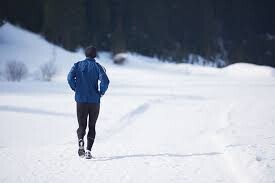
If you're training for a race, do the majority (but not 100 percent) of your runs on the same type of surface you’ll be racing on.
If you frequently run the same route, reverse direction every other run. That will adjust for any slant in the road, so you'll be working both sides of your body equally.
Adjusting to a new surface takes time. Remember, if you're testing out new terrain, you need to ease into it gradually.
Types of Surfaces to Run on
The best surface to run on is generally based on a runner's comfort level, access to different environments, and goals.
Asphalt
Although running on a sidewalk may sometimes be a safer choice (to avoid traffic), asphalt is a bit softer and therefore easier on your body than concrete. So, if you're running on a hard surface, opt for asphalt roads when you can, assuming they're safe.
Advantages of asphalt include consistency and uniformity, which makes it good for speed workouts. When you don't have to think about where you're placing each step, you can pick up your pace. This flat, solid surface also puts less strain on the Achilles tendon. Plus, asphalt roads are usually mapped, making it easy to track your mileage with an app, an online map, or your car's odometer.
Of course, asphalt's hard surface has its drawbacks—particularly the way it jolts the joints. You'll also need to take care to avoid traffic, potholes, and cambers (the slight downward incline at the very edge of the road).
Concrete
While harder than asphalt, concrete is a readily available running surface and one that is most practical for many people to use.
As an added bonus, concrete sidewalks are safe from traffic and tend to be smooth and flat. Research indicates that if you're not going too fast, the effect of the terrain, in terms of impact on the muscles and joints, is negligible.
Still, be aware of concrete cons. It's high-impact, especially if you are running fast. And you face obstacles such as curbs, pedestrians, and traffic when crossing streets.
Grass
Softer surfaces such as grass are definitely easier on your body than concrete or asphalt, but that doesn't mean there are no risks for common overuse injuries.
The good news about grass: It's low-impact, but still requires enough muscle strength to provide good training. You can do it barefoot or in minimalist shoes to improve foot strength. Grass is great for beginning runners because it means less pressure on the bottom of the foot, at least according to a few studies of plantar load.
However, runners can get injured on softer terrain, too, because it does not provide the same stability as a harder surface. Your feet will pronate, or roll inward, further, which could increase the strain on your muscles and joints, leading to injury (or re-injury in runners with a history of plantar fasciitis). Or you could twist an ankle on the uneven ground. Plus, grass is slippery when wet.
Trails
Like grass, dirt or wood-chip trails offer a cushioned surface for runners, and often pretty scenery to enjoy. They are a nice opportunity to switch things up.
Benefits of trail running include this lower-impact, joint-friendly surface, which means a lower risk of overuse injuries. It can also boost flexibility because of the need to make frequent adjustments in form and stride.
Of course, that could also be negative. A trail's tricky, uneven terrain (and sometimes slippery mud) puts runners at risk of twisted ankles and other traumatic injuries due to falls. It's also more difficult to run fast.
Sand
Running on sand is a whole different experience than many other surfaces. In fact, it's two of them, because of the contrast between wet and dry sand.
The benefits of beach running are evident: You get beautiful shoreline sights, sounds, and breezes. Sand (especially when it's wet) is very low-impact, but still offers an excellent workout because you have to resist against the surface as it gives. You will feel it in your calves the most, particularly if the sand is dry and deep.
Be careful, though, about running too far or too long on the beach, because the uneven, shifting surface is tiring. And if your beach path is slanted toward the water, you'll be running off-balance. The soft surface—while easy on the joints—is tough on the Achilles tendon.
Snow
If you live somewhere snowy and still want to get outside and run, it can be done. Warm clothing and grippers for your running shoes will help keep you safer.
Similar to sand, running on a snow-covered surface forces you into a slow and steady pace that still offers quite a workout. This could be good if you're coming off a break and need to be conservative. And running outside in winter keeps you off the treadmill.
Of course, you will still have to use caution. Snow and ice can be very slippery and unpredictable. The darkness of winter days also means more risk regarding safe conditions.
Track
If you're just recovering from a running injury and you're worried about a recurrence, your best bet is to run on a rubberized track, which will offer a level surface as well as good shock absorption.
Also on the plus side: Most high schools have tracks that are open to the public, so they're a safe, convenient option. Most tracks are 400 meters (about 1/4 mile), so it's easy for you to monitor your distance when you're running. That makes tracks a great option for speed training.
However, running laps can be tedious. If you always go in the same direction (typically counterclockwise), you'll tax the muscles on one side of your body more than the other. So it's important to switch directions. Even though the track offers a gentler surface than asphalt or concrete, going around the curves can still be tough on the joints. Plus, the rebounding effect of the synthetic surface can stress the IT band and calf muscles.
Treadmill
Most treadmills are padded, making them another good option if you're just back to running after an injury or you're injury-prone and want to reduce impact.5 Treadmills are also the best option if the weather conditions are too extreme for a safe run.
More treadmill pros include:
You set the pace and incline wherever you need it, and the machine forces you to keep up. (You can better simulate outdoor running by setting your treadmill at 1% incline.)
There are no obstacles or uneven surfaces.
You can run any time of the day or night without the risks you'd face outside.
Of course, treadmill boredom is real, and it may be harder to get a good workout when the belt is pushing you along. You also don't get the benefit of fresh air and breezes.
Again, you don't want to do all your running on a treadmill, as you might then have difficulty adjusting when you return to outside running. The bottom line is that varying your running surfaces will help prevent injuries and keep you from getting bored.
No matter what running surface you find yourself drawn to, your physical safety should always be at the top of your mind. If you find your buddy reacting negatively to the surfaces you're running on, seek medical attention; don't push yourself to the point of injury.
(07/27/2022) ⚡AMPby Christine Luff
Workouts to boost your running performance
Pairing your usual run with another workout can make both elements more effective – as long as you’re careful to make the right match. When you add strides to an easy run or do strength training after a speed workout, the ultimate benefit can equal more than merely the sum of the workouts’ parts.
However, it’s important to be strategic. Stacking two workouts together for quantity’s sake isn’t the goal. Instead, you want the two to complement each other, the way fine wine enhances a steak. Here are four runs paired with something extra that can help you reap more benefits from every session.
1/ Long run + gentle yoga
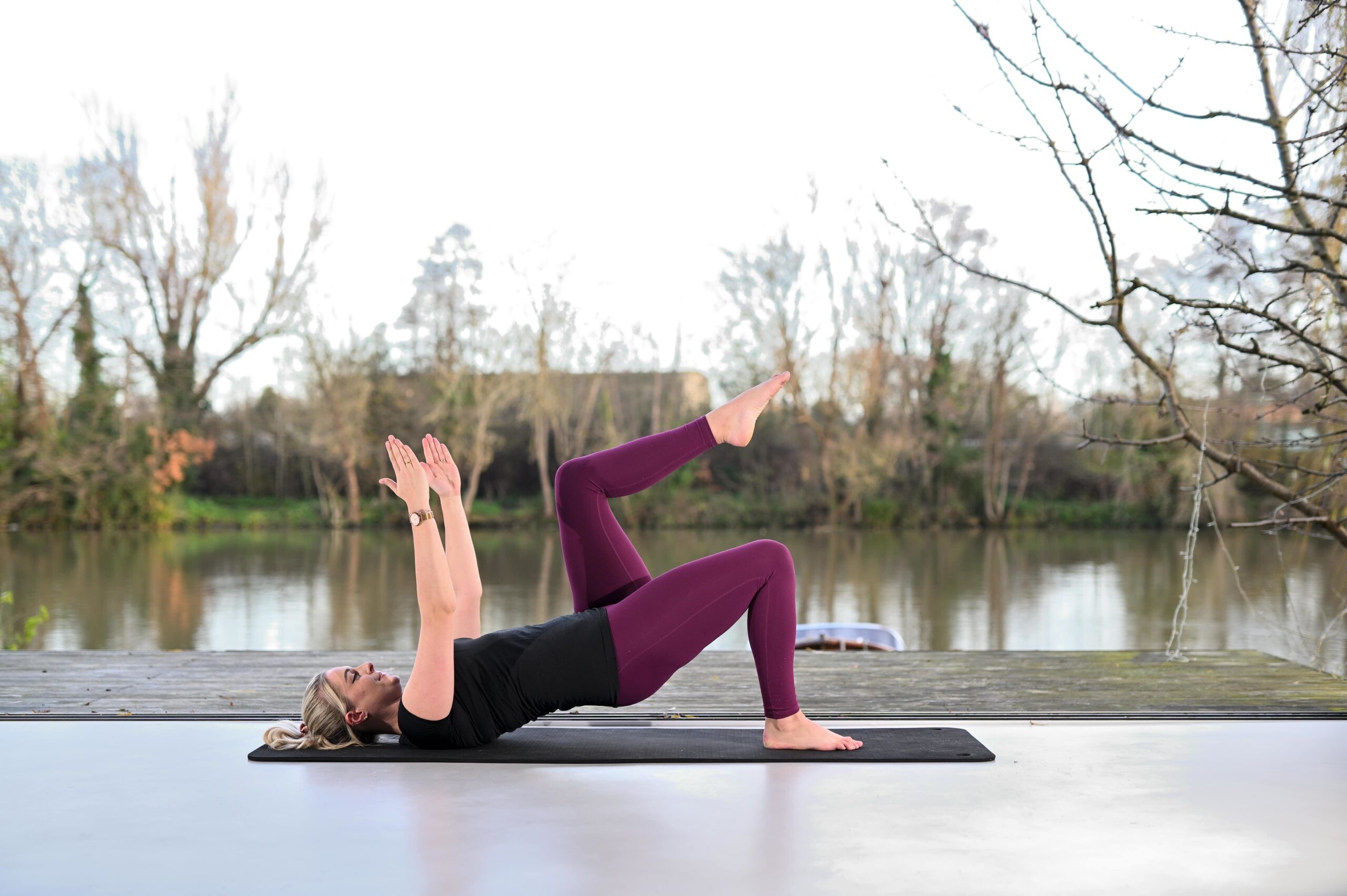
Coach and US Olympian Ryan Bolton says it can be hard to unwind after a long run, but doing so is crucial for the recovery process. One study found that after 2.5 hours of running, athletes had elevated levels of the stress hormone cortisol, which can suppress your immune function. Yoga and meditation can help bring cortisol levels back down.
Do it: Directly after you run, refuel and rehydrate. Later in the day, make time for light yoga, meditation or a massage. If you choose yoga, focus more on moving and breathing than deep stretches.

2/ Hill sprints + tempo miles
Ever had someone fly past you in the last mile of a race? To have what that runner has, you need to do workouts that demand you stick with them even after fatigue sets in. To build late-race strength, Bolton has his elites do hard hill repeats followed by short tempo runs.
Do it: Bolton suggests doing six to 10 sprints up an 80-100m hill. Run the repeats as hard as possible, recovering by jogging slowly back down. After your last hill, head straight into two to three miles of tempo work at your half-marathon race pace.
3/ Easy run + strides
The point of recovery days is to run easy, but maybe not for the whole time. Eric Orton, running coach and author of The Cool Impossible, says he has his runners finish easy runs with strides – short efforts where you build speed over 50-100m. ‘It flushes out the legs just like a massage,’ he says. Research shows that athletes clear blood lactate faster with high-intensity work versus slower recovery jogging.
Do it: After an easy run, do six or seven strides: start slowly, building speed over 100m. Once you reach a hard pace, slow down, recover and repeat.
4/ Speed + strength training
Doubling may help you fit in all your workouts (and rest days). ‘If I give an athlete a strength-training workout and a quality run on Tuesday, then Wednesday can be a real recovery day,’ says Orton. Do whichever workout is more important first; that’s usually speedwork. A 2012 study found athletes who did aerobic followed by strength training had elevated levels of acute testosterone, which can help with muscle repair.
Do it: Run, then do your strength work, immediately afterwards or later in the day. Focus on strength moves (e.g. lunges). Save the next day for easy active recovery.
(07/27/2022) ⚡AMPby Ac Shilton
Determined Flora Duffy ready to defend Commonwealth Games title in Birmingham
The world has found itself on a rollercoaster ride since the last edition of the Commonwealth Games, and the same could be said for the great Flora Duffy’s triathlon career.
Champion on Australia’s Gold Coast back in 2018, the Bermudian then suffered an injury that would put her out of contention for both the 2018 and 2019 world titles, before returning with Olympic dreams only to have them put on ice by the pandemic. Duffy then delivered a 2021 for the ages by scooping the Olympic and world titles, and now she hits Birmingham as the world number two, back in sizzling form.
The stage is set for another classic Commonwealth Games battle as triathlon makes its fifth appearance on the schedule across a sprint distance course that starts and ends in Sutton Park either side of a fast, technical through transition 20km bike. The rivalries are fierce and Friday afternoon’s action will be relentless, and don’t miss Sunday’s Mixed Relay and PTVI Para Triathlon action, the official where-to-watch information will be available here shortly.
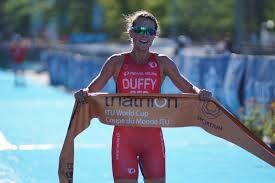
—The first Bermudian ever to win an Olympic gold, Flora Duffy’s place in the history books of her home island is already secured, but being the first triathlete to successfully defend their Commonwealth Games title would certainly warrant an extra chapter. It was another great Emma Snowsill who won in Melbourne back in 2006, and as Duffy looks to surpass the Australian’s record three world titles this year, another Commonwealth crown would further underline her credentials as the greatest the sport has ever seen.
She will have the current number one Georgia Taylor-Brown to contend with, though, as well as a partisan crowd getting behind the home-nation athletes. Taylor-Brown finished second behind Duffy in Tokyo and again at last year’s WTCS Abu Dhabi, but since then, victory in Yokohama and silvers in Leeds and Montreal have put the Brit in pole position in the world title chase, and her current form will make her a hot favourite again in Birmingham.

Teammate Sophie Coldwell has also been putting together some exceptional swim-bike-run form, and after hitting back-to-back WTCS podiums in Leeds she will love being back in front of the home crowds and can be explosive over the sprint distance.
Scotland’s Beth Potter hit her first WTCS podium in Hamburg and will relish another shot at a Commonwealth Games medal – four years ago she became the first Scot to compete at the Games in different events, grabbing 12th in triathlon having previously finished fifth in the 10,000m back on home soil at Glasgow 2014, and her star has been in the ascension ever since.
Nobody on the start list has more Commonwealth Games experience Andrea Hansen (formerly Hewitt), who was third back in Melbourne 2006, fourth in Glasgow and 13th on the Gold Coast, and she is joined by fellow New Zealanders Nicole Van der Kaay and Ainsley Thorpe in the quest for medals.
The 2013 World Champion Non Stanford makes her return to the blue carpet for the first time since her top 10 finish at last year’s WTCS Abu Dhabi, representing Wales alongside Olivia Mathias and Issy Morris.
A strong Canadian trio of Dominika Jamnicky, the returning Amelie Kretz and Emy Legault will be looking to make a splash in both the individual and Mixed Relay, while Australia’s Natalie Van Coevorden, Charlotte McShane and Sophie Linn all have the potential to deliver eye-catching performances.
India’s Pragnya Mohan is among the names representing the emerging triathlon nations, as athletes from the likes of Mauritius, Namibia, Kenya and Trinidad and Tobago will also be ready to relish their moment in the spotlight against some of the biggest names in the sport.
(07/27/2022) ⚡AMPby Doug Gray
The Commonwealth Games
The Commonwealth Games are coming to Victoria - bringing an action packed sports program to our regional cities and delivering a long-term legacy for our future. From 17 to 29 March 2026, Geelong, Bendigo, Ballarat, Gippsland and Shepparton will be on the world stage, attracting millions of viewers and creating thousands of jobs. The multi-city model will...
more...Shalane Flanagan’s strawberry-rhubarb muffins are the ideal summer snack, Grab one of these muffins in the morning and head out for a run
Hot summer days combined with warm-weather running means our household is always striving for the quickest, most simple meal prep possible. We try to keep some of Shalane Flanagan and Elyse Kopecki’s superhero muffins in our freezer at all times: they are an ideal grab-and-run breakfast or snack (or both!).
Four-time Olympic marathoner Flanagan may be retired from professional competition, but she’s still a busy coach for Bowerman track club, a mom, and co-author of three cookbooks with former teammate and friend Kopecki. Their latest, Rise and Run, had me hooked with its tips for creating morning rituals and weekly meal plans, alongside recipes chock-full of nutrients to get your day kick-started. These muffins are easy to make gluten-free (simply use certified gluten-free oats) and vegetarian.
Strawberry-Rhubarb Superhero Muffins
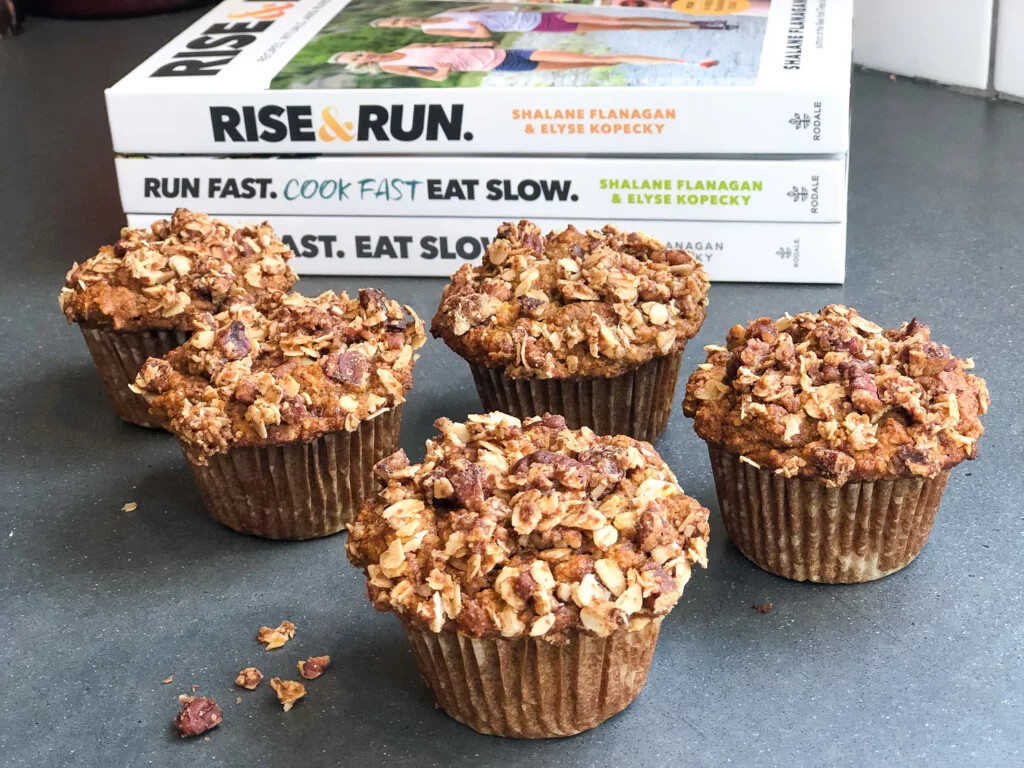
Ingredients
2 cups hazelnut flour*

1 1/2 cups rolled oats
1 tsp baking soda
1/2 tsp fine sea salt
3 eggs
1/3 cup maple syrup
4 Tbsp (1/2 stick) unsalted butter or 1/2 cup coconut oil, melted
1 tsp vanilla extract
1 1/2 cups chopped fresh strawberries
1 cup chopped rhubarb (about one stalk)
*you can substitute almond flour or almond meal if you prefer
Directions
Arrange a rack in the center of the oven and preheat the oven to 350°F. Line a 12-cup standard muffin tin with paper muffin cups.
In a large bowl, combine the hazelnut flour, oats, baking soda, salt, and nutmeg.
In a separate bowl, whisk together the eggs, maple syrup, melted butter, and vanilla. Add the wet ingredients to the dry ingredients and mix until just combined. Fold in the strawberries and rhubarb. The batter will be thick.
Spoon the batter into the muffin cups, filling each to the brim. Bake until the muffins are nicely browned on top and a toothpick inserted in the centre of a muffin comes out clean. 30 to 35 minutes for large muffins or 25 minutes for mini muffins.
Store leftover muffins in an airtight container in the fridge for up to one week, or in the freezer for up to three months. Reheat in the oven at 300 F (148 C) for 10 minutes or microwave on low power for 30 seconds.
(07/26/2022) ⚡AMPby Running Magazine
Ten tips if you want to start running
Is there such a thing as too much information on running? If you wanted to start running tomorrow, what exactly do you need to know?
Not much!
We ran as children before we knew anything about technique or coaching. Running is basic instinct. It’s just a matter of wanting to run, and then acting on the desire. It’s a question of taking that first step. And then the next, and then one more.

One step after another. One step at a time.
My intent is to help you start moving the way you did as a child, not to teach you how to run. No animal in the wild is ever taught how to run and they’ve been doing it pretty well.

So did we humans, before we sat down on a chair and forgot to get up. Smartphones and computers are helping us evolve into not-so-smart-beings.
Here are ten things you should know if you want to start running.
1. Walk before you run: Do not get too bogged down by right or wrong form. Just get moving. There is no need to start running yet. Get comfortable with spending more time on your feet. Start with walking. If you already walk, add variations: for example, at five minute intervals, walk slightly faster for a minute. Repeat that a few times. I would suggest a month of walking before you start running. It’ll be a lot more natural by then.
2. Breathing: You wouldn’t hear a child complain of breathlessness when they are jumping around for hours unless they have medical conditions, but that is the very first complaint adults would come up with who pick up running later in life. It’s because we have taken this vital function of life for granted. Focus on breathing while you stand, sit or lie throughout the day. You need to become comfortable with deep breathing at rest and then it’ll come naturally to you when you run.
3. Form follows function: Studies have shown that when you think of your running form while running, it reduces your running efficiency. Muscles move your joints—get them to start working better through exercises and drills. Your running form will keep improving.
4. Rule of 10%: Even for walking you need to follow this rule where you increase time on your feet by 10% from week to week. If you are starting from scratch, walk 15-20 minutes; you can even take a break if you feel the need. Then a week later, add a couple more minutes. See how you feel. If it feels good, add a few more minutes. This rule would apply when you get started with running too.
5. Strength training: Most runners love to only run. If you want to stay as injury-free as you can be, and want to keep running for long, focus on strength training. You don’t need to go to the gym. Basic bodyweight exercises will do the job. Adding a little weight is even better. But remember that a good exercise is one that is done. So do them.
6. Water: It is almost hilarious when you see people running with big water bottles when all they are doing is 30 minutes or so. Keep your water bottles in your car or in a corner of the park. Have a sip or two every 10 minutes. That is more than enough. Carrying that water bottle actually messes up your running form and also causes neck and upper back pain you never had.
7. Food: For a long time, typical running wisdom focused on carbohydrates. They are important, but not as much as we used to think, and we don’t need it in large quantities. Cut down on your sugar, parathas, rotis or rice intake. Increase your fat and protein intake. A fistful of mixed dry-fruits and sprouts do a great job. Don’t fall for these seasonal diet fads that come along.
8. Supplements: I would suggest you get a baseline blood test done. Start on any vitamins only if there is a deficiency. Most supplements that are suggested in gym or in running groups are not needed.
9. Signing up for races: We all need goals to carry on with our journey but it’s different for everyone. My concern is that most beginner runners soon fall into a rat race and injure themselves. Sign up for races when you are ready for them and don’t sign up for too many of them in a year as they are a recipe for disaster. Don’t keep increasing your distances. First, become good at shorter distances.
10. Running for health: 30-40 minutes of running is ample for health. You do not ever have to run longer. Just that once the running bug bites you, you just want to do more and more.
(07/26/2022) ⚡AMPby Rajat Chauhan
Try these confidence-boosting running workouts
Everyone needs the occasional confidence boost. A workout that leaves you feeling accomplished and capable can do wonders for your entire running game, whether you’re a new runner still finding your way around the weird lingo and obsessive running memes or a seasoned athlete feeling a little sub-par this season.
After one of these confidence-boosters, you’ll be inspired to get out the door on those hard days, and when you end a running session sprawled in the grass gasping for breath and questioning your choices (hey, we’ve been there), you can reflect on the skills you know you have in your running toolbox.

These two workouts (great for newer runners) will help you become more familiar with your body and pace without focusing on data, and will leave you feeling stronger.
Fartlek circuit

Fartlek, a Swedish term meaning speed play and involves a continuous run while increasing and decreasing speed and intensity. If you’re a newer runner, start with one repeat of the circuit below, increasing to three rounds or more as you become more comfortable (or if you’re more experienced). Runners typically like their numbers: it can be hard to run without specific paces to aim for. Trust that the lack of distinct paces in this session is a good thing; it encourages you to explore how your body is feeling. and your workout will be a success, no matter what specific paces you end up running it at.
Warm up with 10 minutes easy running
3 minutes at medium pace, 3 minutes’ easy recovery
2 minutes faster, 2 minutes’ easy recovery
1 minute fastest, 1 minute easy recovery
Repeat 1-3 times, depending on experience and ability
Cool down with 10 minutes’ easy running
Downhill speedwork
It’s easy to get discouraged if you’re focused on increasing your speed and not seeing results. While most runners know hills can be a great all-over strengthener, we tend to neglect downhill workouts. Practicing your downhill running, with control, is a great way to get used to running at a faster pace with a quick turnover, and strengthens muscles you don’t target in your road or uphill sessions.
Find a route that has at least a one km downhill section, or set a treadmill to a 2% decline (bonus points if you hit the trails!). You can easily tweak this session to make it more challenging (longer) or you can keep it short and sweet. While you want to run quickly, stay in control to avoid injury.
Run 25-45 minutes easy, with the downhill section somewhere in the middle
Do 1-2 km of faster running mid-session on the downhill portion
Remember that this will work different muscles than you are used to, so don’t worry about speeding through the rest of your workout. Hydrate well, and make the day following your workout an easy one or a recovery day.
(07/26/2022) ⚡AMPby Running Magazine
Ashton Kutcher is going to be running NYC Marathon
On November 6, actor, producer, and entrepreneur Ashton Kutcher will gain a new title: marathoner.
Kutcher, 44, will compete in the New York City Marathon, his first attempt at the distance.
“I’ve never run a marathon before. I’m terrified,” said Kutcher in a video interview.
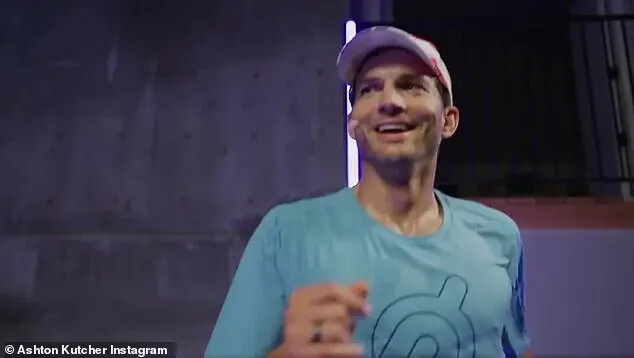
Kutcher has just over 100 days before race day. To get ready, he’s following Peloton’s marathon training program and being coached by Peloton instructor and accomplished runner Becs Gentry.
Gentry, a 2:32 marathoner and Great Britain Olympic Trials Qualifier, shares her personal experiences to inspire and motivate runners. She is one of the trainers for Peloton’s 18-week marathon training program, which is accessible through the Peloton App. The program includes playlists, training tips and workouts such as audio-only outdoor running classes and strength classes. Peloton plans to share additional ways to follow Kutcher’s marathon training journey.

The 2022 New York City marathon marks the 51st running of the event. One of the World Marathon Majors, it is considered the largest marathon in the world, with more than 53,000 finishers in 2019. (The race was canceled in 2020, and there were only 25,000 finishers in 2021 due to COVID-19 restrictions.)
Given its notoriety, the race has attracted many famous people and personalities over the years including Katie Holmes, Ryan Reynolds, Will Ferrell and Sean Love Combs. Kutcher actually inspired Combs to complete the 2003 race where he finished in 4:14:54.
It all started when Kutcher and Combs went out for a casual run together. About halfway through, Combs started struggling and losing steam.
In a video interview Kutcher explained that “[Combs] was so upset over the fact he got skunked on this run, that year he decided to run the New York Marathon.” Combs raised over $2 million for the Children’s Hope Foundation, Daddy’s House Social Programs, and New York’s public school system.
Kutcher hopes to follow in Combs’s footsteps in November. Kutcher is running to raise awareness for the nonprofit Thorn, which he cofounded 10 years ago with then-wife Demi Moore.
After watching a documentary about child sex trafficking occurring in Cambodia and learning about the prevalence of the issue in the United States, the former couple was inspired to find a solution. Through Thorn they hope to fight against the exploitation of children by eliminating child sexual abuse from the internet.
(07/26/2022) ⚡AMP
by Stephanie Hoppe
TCS New York City Marathon
The first New York City Marathon, organized in 1970 by Fred Lebow and Vince Chiappetta, was held entirely in Central Park. Of 127 entrants, only 55 men finished; the sole female entrant dropped out due to illness. Winners were given inexpensive wristwatches and recycled baseball and bowling trophies. The entry fee was $1 and the total event budget...
more...Athing Mu Became the First American to Win the 800 at the World Championships
Athing Mu hasn’t lost an 800 in over two years, since February 2020. Today in Eugene, Oregon, the streak continued.
Mu’s 1:56.30 performance in the 800 meter final makes her the youngest woman to ever win both Olympic and World Championships gold.
“I’m thankful to be holding the momentum from Tokyo last summer,” she said. “But today was a rough day for me. I just wasn’t physically where I wanted to be.”
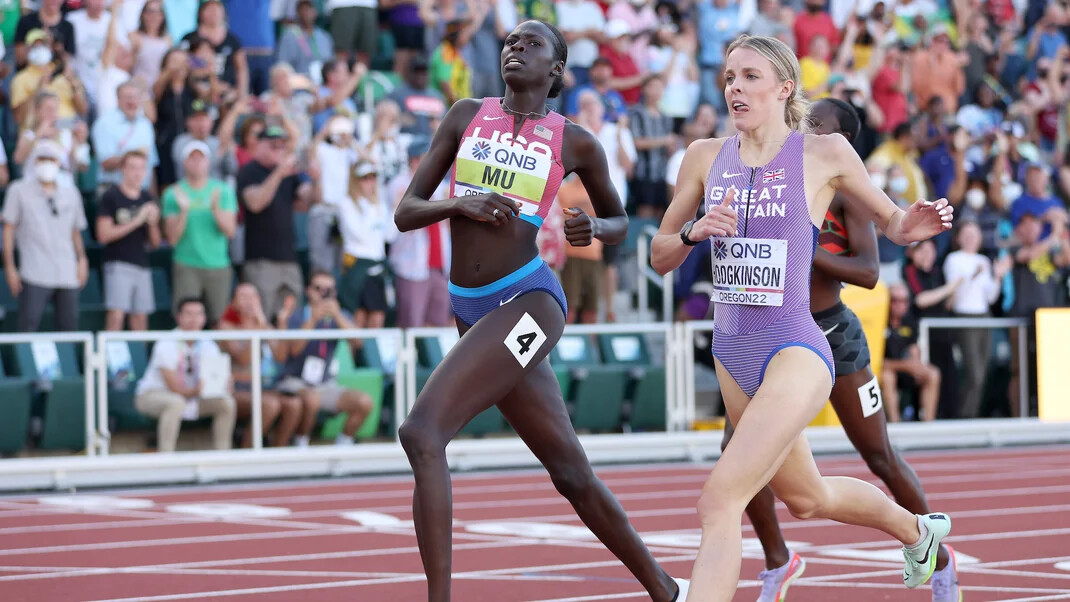
In the final 100 meters, Keely Hodgkinson of Great Britain came up on Mu on the inside. Mu was running on the outside of lane one, which gave Hodgkinson a clear window to sneak through and pass. But Mu wouldn’t let up. As soon as she sensed how close Hodgkinson was she cut back in to the middle of the lane to prevent the pass. Hodgkinson, who is also 20, finished in second in a time of 1:56.38, which is her second silver medal in two years; she also placed second in the Tokyo Olympic Games last summer.
When asked about the potential tactical error, Mu said, “I didn’t want to automatically go to the inside. I don’t really pay attention to where I’m at in the lane.” Mu’s background is as a sprinter, and they’re taught to run on the outside of lane one. A distance runner would never do that.
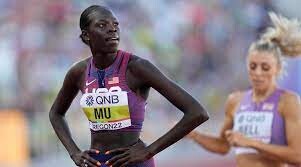
Mary Morra of Kenya finished third in 1:56.71, a personal best. The three women all improved on Mu’s season best time of 1:57.01, which was the previous world lead this year.
Even though she won the race, Mu said she didn’t feel that great out there. This entire year she’s been winning by small margins, as though she does just what it takes to win. Last year there were a number of times when she wasn’t afraid to run alone off the front of the pack. It’s true that her times last year were faster: She ran 1:55 twice in 2021.
“I’ve gone through so many changes, so many adjustments this year,” she said. “Not everybody sees it, but it was a lotjust being able to come out here. Winning means a lot to me because I know what I’ve been going through.”
Mu cites her support system and her faith as the main reason for her steadiness. Her boyfriend, Brandon Miller, also competed in the 800 this week at the World Championships.
Looking to the future, she said, “For now, I’m just trying to take it day by day, race by race.”
(07/25/2022) ⚡AMPby Matt Wisner
World Athletics Championships Budapest23
Budapest is a true capital of sports, which is one of the reasons why the World Athletics Championships Budapest 2023 is in the right place here. Here are some of the most important world athletics events and venues where we have witnessed moments of sporting history. Throughout the 125-year history of Hungarian athletics, the country and Budapest have hosted numerous...
more...Will racing flats help you crush that PB?
Do you want the minimal, feather-light shoes, the carbon-plated ones, or the shoes with a little extra cushioning on race day? With the seemingly endless array of styles and recommendations out there, it can be hard to know what choice will bring you the best results, and experts say it hinges on a few factors.
If you were a young person in the 1970s, you may have worn racing flats as a casual shoe: the running boom during that decade made racing flats everyday wear. When Canadian legend Terry Fox attempted to run across Canada, he wore a very minimal Adidas Orien flat; the shoe subsequently became incredibly popular, and a re-release was rapidly sold out.
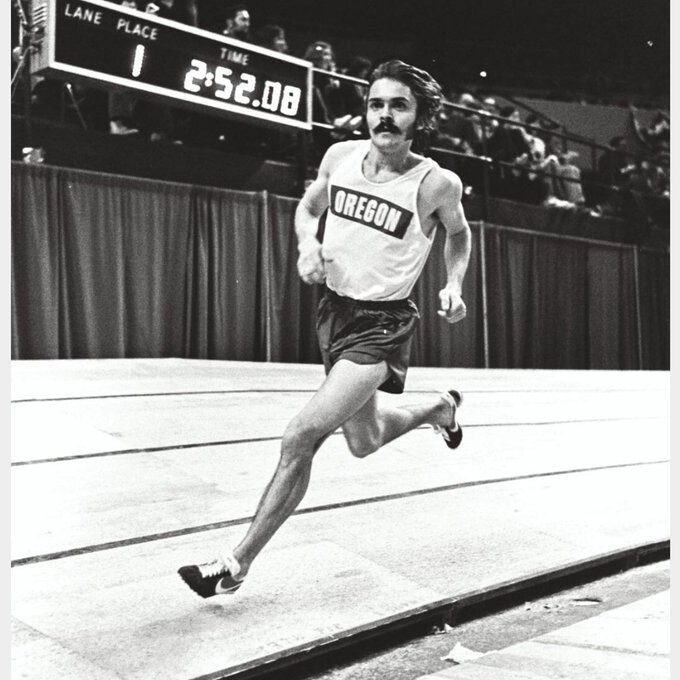
We spoke to Lethbridge-based coach, ultrarunner and race director Dean Johnson to gain some insight into your race-day choice of shoe.
“‘It depends’ is always a good start,” he says. The question simply doesn’t have a one-size-fits-all answer. “Before ‘super shoes’ (like the Nike Vaporfly), my opinion based on biomechanical researchers’ opinions was to wear the least amount of shoe possible. That refers to stack height (the amount of material between your foot and the ground) and weight,” Johnson adds.
“Up to 10K, most everyone can/should have some ‘fast’ shoes that they use for a serious tempo workout and races. They will have just enough padding to get you through the race. After the race, your feet will be a bit sore,” says Johnson. Racing flats are credited with encouraging less ground-contact time, creating a more economical, efficient stride. However, the elites who wear them are used to them; their foot muscles will have gained strength through practice.
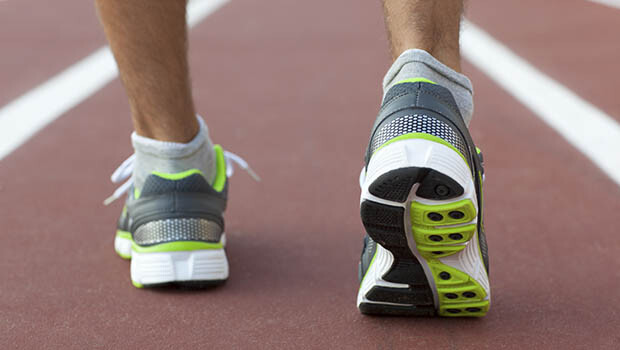
Johnson also suggests taking your running habits into consideration for longer races. “For the half and full marathon, it really depends on your pace, feet and gait. A person with a quick cadence who is likely a mid-foot striker can use a thinner shoe. If you are a hard heel-striker, you are going to need some cushioning,” he says. “If your feet are strong (you walk barefoot a lot or have minimally structured shoes), you can get away with very little padding and support in a racing shoe.”
Johnson recommends wearing your race-day shoes during practice sessions to see what feels best, and adjusting as needed. “All this should be tested out in your training, especially those tune-up races and race-pace long runs. If your feet get too sore during the run, you will compensate, slow down, and suffer more than you need,” he says.
There may be no perfect shoe for everyone, but there will be a shoe that you’ll feel and run your fastest in. Keep in mind that racing flats will wear out sooner than your other, more firmly constructed shoes: they have less support and less cushioning so they break down faster. Make sure you visit a store that specializes in running, try on a wide variety of shoes, and have some awareness of your own running style.
(07/25/2022) ⚡AMPby Running Magazine
World Athletics to introduce repechage round in track events for Paris 2024
Runners knocked out in the opening round of track events from 200 to 1500 meters at the 2024 Olympic Games in Paris will get another opportunity to continue in the competition after World Athletics announced they are to introduce a repechage round.
Under the new format approved by the World Athletics Council, athletes who do not qualify by place in round one heats, including the hurdles, will have a second chance to qualify for the semi-finals by participating in repechage heats.
The word repechage comes from the French verb "repêch", which literally means to "fish up again".
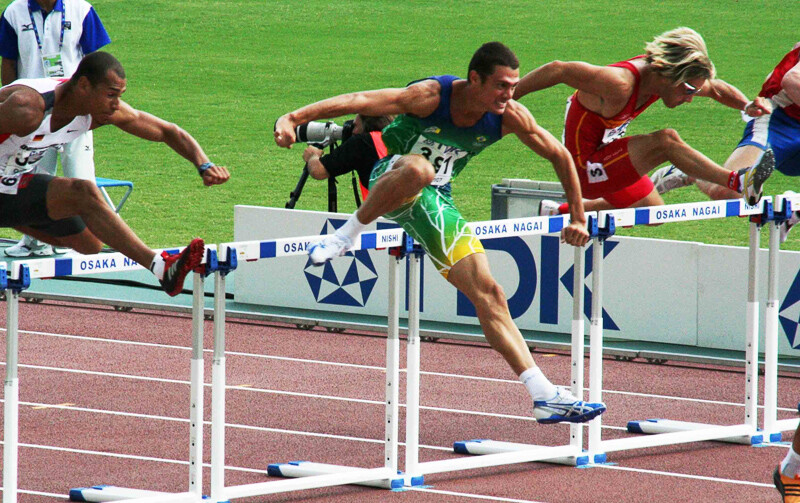
Idiomatically, it means "to get a second chance".
The repechage will replace the former system of athletes advancing through fastest times in addition to the top placings in the first-round heats.
These events will now have four rounds - round one, repechage round, semi-finals and the final, with schedules varying according to the specific nature of the event.
The new format means that every athlete competing in the events with a repechage round will have at least two races at Paris 2024.
As the 100m already has preliminary heats, before round one, the repechage will not be introduced in this event.
In addition, the repechage will not be introduced in distance events as the need for proper recovery between rounds makes the format impractical.
A number of sports already use the repechage system, including judo, rowing, taekwondo and wrestling.
But, unlike athletics where a runner could be knocked out in the first round and still go on to win gold thanks to the repechage, a competitor in these sports can win a bronze medal at best.
Cycling and rowing, however, use a similar system to the one athletics is proposing.
"After consulting with our athletes and broadcasters, we believe this is an innovation which will make progression in these events more straightforward for athletes and will build anticipation for fans and broadcasters," World Athletics President Sebastian Coe said.
"The repechage rounds will give more exposure to our sport during the peak Olympic period and will be carefully scheduled to ensure that every event on our Olympic programme retains its share of the spotlight."
The final regulations of the format, including the timetable as well as system of advancement in each event, will be announced well in advance of the Olympic Games, World Athletics have promised.
(07/25/2022) ⚡AMPby Duncan Mackay
Paris 2024 Olympic Games
For this historic event, the City of Light is thinking big! Visitors will be able to watch events at top sporting venues in Paris and the Paris region, as well as at emblematic monuments in the capital visited by several millions of tourists each year. The promise of exceptional moments to experience in an exceptional setting! A great way to...
more...Tobi Amusan, the accidental hurdler who became the world record-holder
The new world champion and world record-holder in the women’s 100m hurdles only got into hurdling through a quirk of fate.
Tobi Amusan started out as a sprinter and long jumper as a youngster in her native Nigeria.
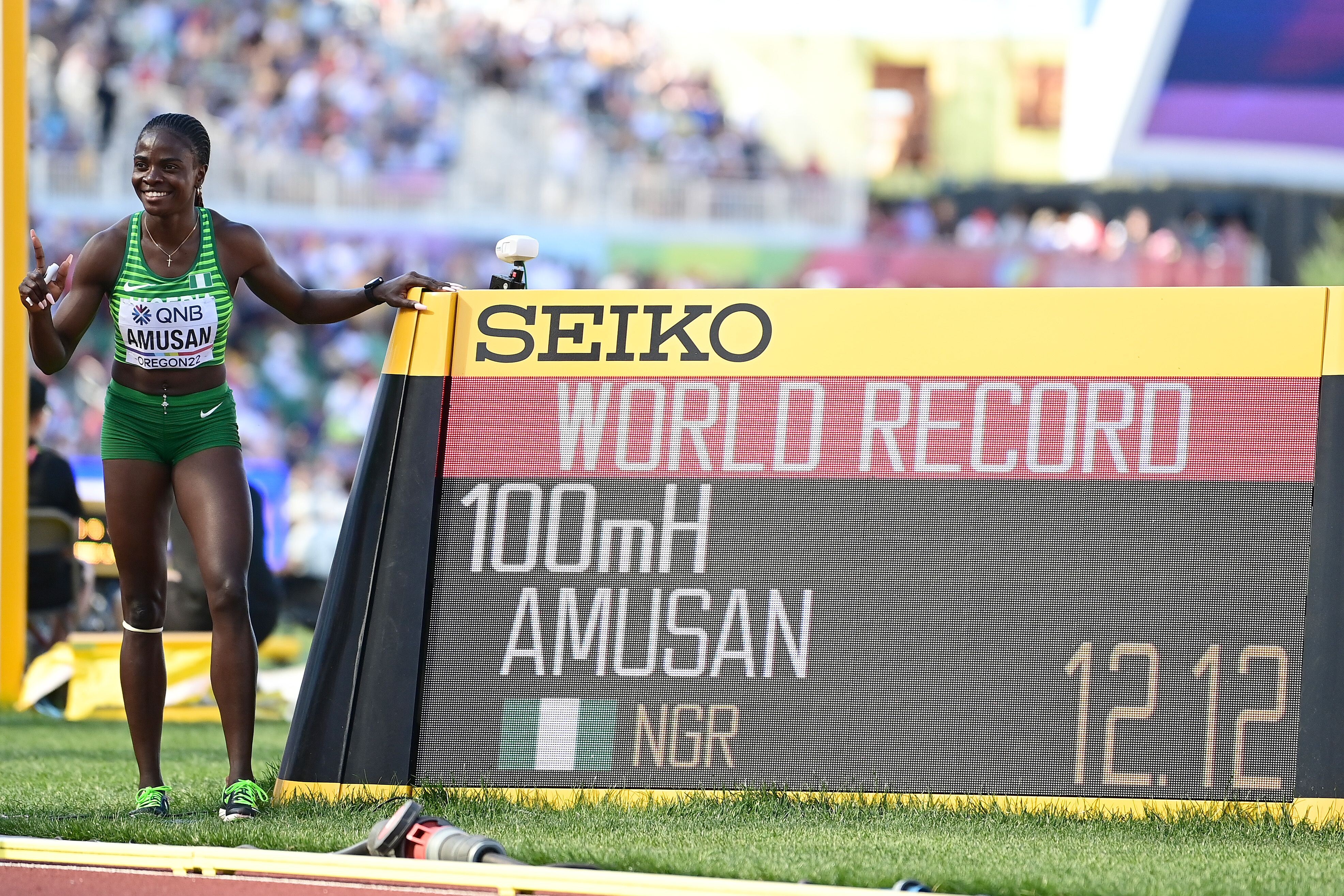
At 13, she turned up to compete in a local athletics meet, only to find that just one event remained on the programme: the hurdles.
Amusan’s coach encouraged her to enter. She ended up winning the race and the rest, as they say, is history.

The switch to the sprint hurdles paid off in sensational fashion on Sunday (24) when the 25-year-old Amusan smashed the world record, clocking 12.12 in the semi-finals at the World Athletics Championships Oregon22. She shaved 0.08 off the previous mark set by Kendra Harrison of the US in 2016.
Less than two hours later, Amusan came back for the final and ran another spectacular race to secure her first global gold medal and the first ever for Nigeria at a World Championships.
Amusan was clocked in 12.06, but the time won’t be recognized as a world record due to a tail wind of +2.5 m/s.
After fourth-place finishes at the 2019 World Championships in Doha and last year’s Tokyo Olympics, Amusan finally made it -- not just onto the podium, but to the top of the medal stand.
“I was the ‘almost girl,’” she said. “I got fourth, fourth, fourth. Now I finally did it.”
And with a world record for good measure.
“The goal was to come out and to win this gold,” Amusan said. “I just did it. Honestly, I believe in my abilities but I was not expecting a world record at these championships. You know, the goal is always just to execute well and get the win. So the world record is a bonus. I knew I had it in me but I could not believe it when I saw it on the screen after the semis. But it was just a matter of time.”
Looking back on how she made it here, Amusan said: “It has been a long journey.”
Born in the town of Ijebu Ode in the western Nigerian state of Ogun, Amusan gradually made the transition to hurdles as a teenager.
She continued competing in sprints and long jump but managed to squeeze in one hurdles session a week. She put cones and tires on the track to jump over because there were no hurdles in her town.
When she was replaced as a member of Nigeria’s 4x100m relay squad at the trials for the 2014 African Youth Games, she figured she had nothing to lose and entered the hurdles. She won that and went on to earn silver at the African Youth Games in Botswana.
Then followed a trip to Ethiopia in 2015, where she won African U20 gold, followed by a breakthrough victory at the All-African Games in Brazzaville, Congo.
“It was one of the biggest milestones of my career; winning that championship set me up for who I am today,” she said.
There was no looking back; she was now a full-time hurdler.
In 2016, Amusan received a scholarship to attend the University of Texas, El Paso, where hard training brought her personal best down from 13.10 to 12.83.
At UTEP, she worked with new coach Lacena Golding-Clarke, a three-time Olympian from Jamacia and the 2002 Commonwealth Games 100m hurdles champion.
There were setbacks along the way, of course. At the U20 world championships in Bydgoszcz, Poland in 2016, Amusan struggled with her technique and finished in fifth place. She was so devastated that she thought about quitting the sport.
But she regrouped and, after reaching the semi-finals at the 2016 Rio Olympics, Amusan went unbeaten in the 2017 outdoor US collegiate season and won the NCAA title in a PB of 12.57.
She went into the 2017 world championships in London as the season’s fourth-fastest hurdler, but cramped up in the cold conditions and failed to make the final.
“After London,” she said, “I learned that the fact that I was in the mix, knowing I was capable of doing stuff at this age – I was just 20 – and being ranked in the top eight makes me confident that when I get my technique right, my speed right, and get a bit stronger, I’ll be fine.”
Amusan turned pro at the end of that year and went on to win gold at the 2018 Commonwealth Games in Gold Coast, Australia, at the age of 20. She also triumphed at the African Championships later that year.
In 2019, she finished just 0.02 shy of a bronze in Doha. Last year, she came 0.45 from a medal at the delayed Tokyo Games.
“I don’t think there is a track and field event which can teach humility quite like the sprint hurdles,” Amusan said. “You can be the fastest in the field but one mistake can spell the end for your race. A hurdler should never go into any race with any level of complacency or arrogance. It teaches you to be humble.”
For now, at least, Amusan can afford to be a little less humble.
After all, she’s simply the fastest of all time and the best in the world.
Not bad for someone who became a hurdler by chance.
(07/25/2022) ⚡AMPby World Athletics
World Athletics Championships Budapest23
Budapest is a true capital of sports, which is one of the reasons why the World Athletics Championships Budapest 2023 is in the right place here. Here are some of the most important world athletics events and venues where we have witnessed moments of sporting history. Throughout the 125-year history of Hungarian athletics, the country and Budapest have hosted numerous...
more...Ingebrigtsen wins first world title with 5000m gold in Oregon
Norway’s Jakob Ingebrigsten had an Olympic title, but he had never won a World Championships gold medal.
After being upset in the 1500m by Jake Wightman only a few days ago at the World Athletics Championships Oregon22, a world gold still eluded him.

If he wanted to end his drought, he was going to have to topple a star-studded field in the men’s 5000m that included the world record-holder, Uganda’s Joshua Cheptegei, who had earned gold over 10,000m earlier in the championships.
But Ingebrigtsen did exactly that, winging up the pace in the final kilometre to win in 13:09.24. Kenya’s Jacob Krop took silver in 13:09.98, while Uganda’s Oscar Chelimo earned bronze in 13:10.20, a season’s best.
Ingebrigtsen spent almost half the race towards the back of the pack and didn't make his move until after the field had covered two kilometres, going from 10th place into fifth. He remained near the front over the next few laps, then he moved into first with 600 metres left.
From then on, he never relinquished the lead. Ingebrigtsen led 11 men through the bell, less than a second spread among them. As the pack strung out and the finalists started to unleash their finishing kick, Ingebrigtsen held off all of them and extended his lead as he neared the line.
The Norwegian could even afford to take a couple of last looks behind him, before flashing a ‘No.1’ gesture to the fans on the homestretch.
“It feels amazing to win this gold,” said Ingebrigtsen. “This is already my fifth attempt to become a world champion outdoors and my third World Championships. So finally, I became the world champion.”
Cheptegei led through the first three laps, but by the halfway mark, he had dropped to eighth. Leading the pack was Kenya’s Nicholas Kipkorir Kimeli and Daniel Simiu Ebenyo, who often took turns at the front early on. In pursuit were Guatemala’s Luis Grijalva, Ingebrigsten and USA’s Grant Fisher.
Through 4000m, just 0.75 separated the top 12. Krop had taken the lead, but the race remained conservative, with no one looking to push the pace, setting the stage for the raucous bell lap.
Ingebrigtsen and Krop passed through the bell first, holding their positions the rest of the way. However, Chelimo was still in ninth, and Fisher was in third, only 0.11 behind the top two. Chelimo remained in eighth until the final 200 metres, where he moved into fifth, still trailing Fisher and Canada’s Mohammed Ahmed.
As the three men came around the curve, with the bronze still up for grabs, Fisher hit the inside rail, causing the American to drop behind. Chelimo took advantage, as did Grijalva, and both men moved ahead. Chelimo’s kick was too strong for either Grijalva or Ahmed to handle, as he edged both men by less than 0.25.
Grijalva finished fourth, achieving the best finish for his country in any event at the World Championships.
“It feels amazing. I have always run a PB in the races,” said Grijalva. “I almost won a medal, the first for Central America.”
Krop said he knew the race would be tactical, but he was ready for it.
“They just made me push on the last lap and attack,” said Krop. “In the end, it looked like everybody wanted to get to the podium. I had my position and when I kicked, I wanted to maintain the spot, but Jakob had a strong kick too.”
For Chelimo, the bronze finish comes after a few disappointing outings recently.
“I had some difficult times in the past years, I was happy last year to qualify in Tokyo, but then I came last so I had to ask why,” said Chelimo. “But my coach told me that I am a champion. He said, ‘forget about the past, just continue racing’.”
(07/24/2022) ⚡AMP
by Elias Esquivel (World Athletics)
World Athletics Championships Budapest23
Budapest is a true capital of sports, which is one of the reasons why the World Athletics Championships Budapest 2023 is in the right place here. Here are some of the most important world athletics events and venues where we have witnessed moments of sporting history. Throughout the 125-year history of Hungarian athletics, the country and Budapest have hosted numerous...
more...Meet the Deaf Ultra Racer Fueled By Music
Runner Tim Stones can't hear a starting gun, but absolutely loves the Chariots of Fire theme.
South African runner Tim Stones has been deaf since birth, and yet Stones learned to play the piano and sing in choir when he was a child. Today, with the help of hearing aids and a cochlear implant, he composes music and can play by ear. He has also completed 25 marathons and 25 ultras, all without being able to hear the starting gun, the crowds, or the runners around him.
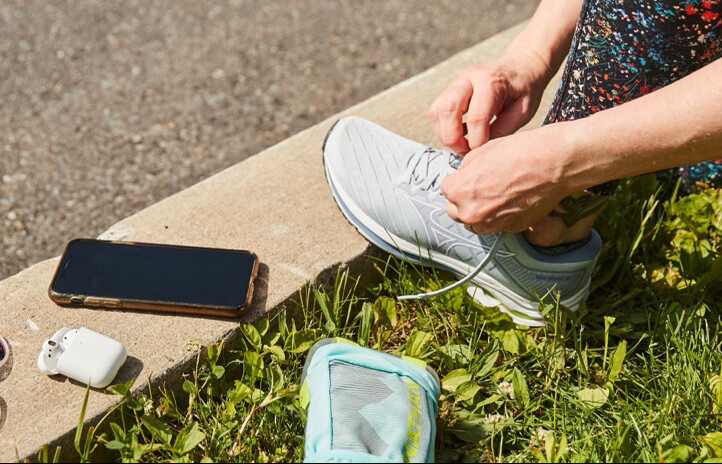
That might seem to make for a bleak race, but Stones insists that it gives him room to hear his own thoughts, and that he runs to a never-ending stream of internal tunes. Here, Stones, 42, discusses how music became one of the greatest forces for good in his running life.
Why did you start running?
TS: I went for my first proper run at the age of 11 or 12, on the spur of the moment, initially to stamp the anger I felt through my feet. I was on my high school cross-country team. In 1999, when I was 20, I ran my first marathon, quickly followed by my first 100-kilometer race. Recently, I completed my 50th marathon or ultra race. Running has become my primary form of emotional release. It is how I process life, and make peace with it.
How do you experience your runs?
TS: I run without my hearing devices on, as I find the cacophony of sounds overwhelming when I am feeling the rhythm of my feet. Silence helps me keep my rhythm and find my pace. As my vision is also compromised [Stones’s vision deteriorated in recent years to the point that he can’t drive], I have to focus intensely on the actual act of running, to avoid obstructions and potential mishaps the best I can.
Are there differences in the way you compete?
TS: I cannot hear the gun, so usually the starter holds a flag or drops an arm, and off I go. It’s not ideal, and in shorter distances it is a definite disadvantage. But in longer races my deafness can be an advantage in a way, as I am not distracted by noise. Deafness forces me into myself. I am especially fond of multiday circuit racing: I have competed in events ranging from 24 hours through to 10 days. A highlight was breaking the South African age-group record for the latter, with 886 kilometers in 2017.
What can you hear with and without your hearing aids?
TS: When I was 5 years old, I received my first pair of hearing aids and learned to read and to speak clearly with my voice. Over the years my hearing has further deteriorated. I received a cochlear implant for my left ear and wear a super-power hearing aid in my other ear. Without them, I hear nothing in my left ear, and in my right ear I can pick up some sound, but rely on lip-reading to communicate. With my devices on, I can pick up a wide range of sounds, but still need to see someone’s face for speech.
How does that impact your musical experience?
TS: I cannot grasp music without my devices on. But it may surprise readers to know that there are many deaf and deaf-blind musicians who have found ways to feel the music and understand rhythm despite having no hearing at all. Some, like Beethoven, even composed songs. With the cochlear implant, music sounds a bit different, clearer, to me. The best part has been being able to hear the actual lyrics to songs for the first time. I was shocked to discover I had been singing completely alternative lyrics to my favorite songs since childhood!
When did you develop your passion for music?
TS: I was introduced to music at the age of 6, starting piano lessons soon after acquiring my first pair of hearing aids. My mom hoped that by learning to understand the rhythm of music I would be able to grasp the nuances of speech more quickly. Now I play piano and sing. Being able to enjoy music with my sons is food for the soul.
How has your musical life impacted your running?
TS: Music plays a crucial part in my running journey. Even though I can’t hear or listen to music when I run, I hear music within. When I find myself getting tired, especially in the longer ultras, I find I can push through by thinking of a song that speaks to me in that moment, and I sing it, sometimes silently, sometimes out loud. It gets me back into a rhythm, and my feet respond to the sustained beat. More broadly, music helps me navigate the myriad experiences of a complex life. Running does exactly the same.
Are there certain songs you come back to again and again?
TS: My heart goes into overdrive whenever I hear “Chariots of Fire.” Sometimes I ask my sons to play it just before I go out for a longer training run. It gets me into the groove like nothing else can. I am also a huge fan of ’60s music. Mostly, though, I opt for songs of faith that uplift and inspire me to keep on keeping on.
(07/24/2022) ⚡AMPby Runner’s World
You Might Be Surprised By All the Major Health Benefits of Chia Seeds
These seeds might be tiny but they pack a mighty dose of nutrients.
You might remember the television commercials hawking a fuzzy green clay pet to the catchy tune of ch-ch-ch-chia! What caused the terracotta puppy to sprout green? A sloppy paste of wet chia seeds. Very few of us at the time considered the seeds something that could add a nutritional boost to our diets, and instead, just something that made a novelty product fun to see. But now these tiny chia seeds have reached superfood status, as they pack a serious nutritional punch. And, in this case, one that is not overhyped.

Read on to find out about chia seeds’ benefits and why you would be wise to sprinkle more into your life.
Chia Seeds’ Origin
Chia is a small, subtlety flavored seed that comes from an annual herbaceous plant, Salvia hispanica L., a member of the mint family native to Mexico and Central America. Once a food prized by the ancient Aztec armies, chia was cultivated by Mesopotamian cultures, but then essentially disappeared for centuries until the middle of the 20th century, when it was ‘rediscovered.’
The Health Benefits of Chia Seeds
Don’t let their small stature fool you: chia seeds have a large nutritional impact. In fact, a 1-ounce serving (about 2 1/2 tablespoons) of chia seeds contains:
138 calories
5 g protein
9 g fat
1 g saturated fat
5 g omega-3 fat
12 g carbs
10 g fiber
“Chia seeds are a convenient and nutrient-dense food that can help runners meet their nutritional needs,” says Dana Norris, M.S., R.D., C.S.S.D, dietitian of Eleat Sports Nutrition. “That’s because they provide protein, omega-3 fatty acids, fiber, and many other nutrients like magnesium, calcium, phosphorus, and potassium.”
Here, what you’ll gain from eating chia seeds:
1. Mega-healthy fat
Some people still consider high-fat foods like chia as the enemy, but they’re our allies in health when they possess the right types of fat. Only about 11% of the fat present in chia seed is saturated, with the rest being health-benefiting monounsaturated and polyunsaturated.
In the case of chia, the most notable polyunsaturated fat is alpha-linolenic acid (ALA), a type of omega-3 fatty acid that is deemed essential and therefore must be obtained from the diet. An analysis of data from 41 studies that was published in the journal BMJ linked a high intake of alpha-linolenic acid to a 10% lower risk of all-cause mortality, an 8% lower risk of death from cardiovascular disease and an 11% reduced risk of death from coronary heart disease, compared with lower consumption levels.
Other research has also suggested that this plant-based omega-3 fat can be protective against developing heart disease. Mechanisms aren’t yet fully known, but it might be that this fat helps lower inflammation in the body.
The omega-3 content of chia could also be one reason why some research suggests that consuming it daily could help drive down blood pressure numbers. But this benefit has only been demonstrated in those with existing hypertension and may not occur in healthy runners who don’t have troubling blood pressure levels.
Also beneficial: Chia seeds provide a 3-to-1 ratio of omega-3 to omega-6 fatty acid. “The standard American diet tends to be much higher in omega-6s than omega-3s, which can increase inflammation,” notes Norris. “So eating these seeds is a great way to consume more omega-3s and help improve this fat ratio in your diet.”
2. Filling fiber
A mere tablespoon serving of chia seeds delivers about 4 grams of fiber. That is significant considering that many people struggle to reach their daily quota—men typically require about 38 grams of fiber, while women should aim for 25 grams. “So a daily serving or two of chia can make it a lot easier for runners to get enough fiber for better health,” Norris says.
The findings of a study published in the journal The Lancet suggests that high-fiber eaters (those who consume at least 25 grams a day) have a 15% to 30% lower risk of heart attack, stroke, type 2 diabetes, colorectal cancer, and cardiovascular-related death compared to people who eat much less fiber.
“Dietary fiber helps to regulate the digestive system, feeds the good bacteria in the gut, promotes satiety (the feeling of fullness), positively impacts cholesterol levels, and helps manage energy levels throughout the day,” Norris tells Runners World.
A good portion of the fiber in chia hails from the soluble form of this carbohydrate. When exposed to liquids in your digestive tract, this soluble fiber forms a gelatinous coating that can slow down the digestion of your meals and snacks. There are a few benefits of this: For starters, this helps bulk up your stool and guard against constipation and diarrhea. It can also help you better manage blood sugar levels, which can make your energy more stable and lower the risk for certain metabolic conditions, like type 2 diabetes.
Slower digestion may also improve satiety to help with overall calorie intake regulation. In the best-selling book Born to Run, author Christopher McDougall reported that the Tarahumara indigenous group in Mexico, who are known for their world-class running endurance, often consume a chia drink before endless runs to help quell hunger. Just keep in mind, it’s probably not a good idea not to experiment with consuming chia before an important run in case this fiber causes you gastro problems.
3. Bone-building micronutrients
With about 15% of the daily need for calcium in a 2-tablespoon serving, chia seeds are a viable non-dairy source of calcium. “Chia seeds can be a helpful way for athletes to increase their calcium intake, especially if they do not consume dairy products,” says Norris. She adds that magnesium and phosphorus are two other micronutrients in chia that also work to improve bone health.
Additionally, you get iron in chia seeds, a mineral necessary for helping transport oxygen to your working muscles, and, in turn, something that is vital for maintaining peak performance. Though the form of iron in chia and other plant-based foods is not as well absorbed as that in meats, you can help partially remedy this by consuming the seeds with a source of vitamin C, such as berries, which improves absorption rates.
There is also a healthy amount of manganese in chia, which the National Institutes of Health says is involved in protein and carbohydrate metabolism and proper immune system functioning.
4. Disease-fighting antioxidants
Nutrition analysis has revealed that chia seeds deliver a range of useful antioxidants including caffeic acid, rosmarinic acid, myricetin, and quercetin. Antioxidants are compounds that roam the body looking for cell-damaging free radicals to knock out. And in doing so, are thought to help reduce the risk for a number of chronic diseases, including cancer. But we don’t yet have any data to link specific antioxidants in chia seeds with disease prevention.
But there’s still an important benefit to these chia-backed compounds. “The antioxidants in chia seeds benefit muscle recovery as they help reduce inflammation in the body, which can be caused by strenuous exercise,” adds Norris.
5. A surprising amount of protein
As more people pivot to plant-based proteins, it’s helpful to know that chia seeds are a fairly good source. You get about 2 to 3 grams in each tablespoon. That makes them more protein-dense than most nuts, including almonds. In fact, a study in the Journal of Agricultural and Food Chemistry determined that chia seeds supply a healthy balance of essential amino acids making them helpful in muscle recovery and muscle building for athletes.
Just know that other plant foods like tofu, beans, and tempeh still make it easier to meet overall protein needs if following a meat- and dairy-free diet, considering they contain a higher total amount of macronutrient.
How to Eat More Chia Seeds
Chia seeds come in both black and off-white, but there is little flavor difference and no proven major nutritional advantages of choosing one over the other. Unlike flax, chia does not need to be ground for its nutrients to be properly absorbed in your body.
Eating more chia can be as simple as sprinkling it over your oatmeal, yogurt, cottage cheese, steamed or roasted vegetables, and fruit salads. Norris points out that you can also blend them into your smoothies for a nutritional boost and incorporate them into homemade energy bars and balls.
The high amount of soluble fiber in chia forms a gel when mixed with water—a quirk that you can take advantage of to create better-for-you puddings and jams. For instance, for a nutritious chocolate pudding blend together 1/2 cup milk, 1/2 cup plain yogurt, 1 tablespoon cocoa powder, 1 teaspoon honey, 1 teaspoon vanilla extract and 1/2 teaspoon cinnamon. Pour into a jar and stir in 3 tablespoons chia seed. Seal shut and chill until thickened, about 2 hours. Or make a thirst-quenching, hydrating chia fresca by stirring together 1 cup water, 2 teaspoons chia seeds, juice of 1/2 lemon or lime and 2 teaspoons honey or agave syrup. Let sit for a few moments to thicken slightly.
The same gelling quality lets you create a substitute for eggs for baking. For each egg called for in a recipe, mix 1 tablespoon chia seeds with 3 tablespoons water and let sit for about 10 minutes, or until a goopy texture has formed. You can then use this to create a binding effect in a recipe much as an egg would.
Made by finely grinding up whole chia seeds, you can also add chia powder to baked goods like muffins and cookies, as well as the batter for your Sunday pancakes. Use it instead of breadcrumbs in recipes such as meatloaf or stir it into a pot of simmering oats.
(07/24/2022) ⚡AMPby Runner’s World
Here’s How the U.S.’s 5,000-Meter World Finalists Handle Excessive Heat on Race Day
Racing in hot weather can be daunting. Utilize these pro tips from Elise Cranny, Karissa Schweizer, and Emily Infeld to better prepare yourself for the next scorcher.
If you’ve ever raced in the summer, then you know how difficult it is to be underneath the beating sun for too long. Heat stroke, sunburn, and dehydration are legitimate dangers from overexposure. But maybe you signed up for a race that starts in the middle of a summer day. Maybe you’re running a destination marathon in a hotter climate. Perhaps you’re even attempting an ultramarathon, like Badwater 135, which takes place in Death Valley. You want to race, but you also want to be safe.
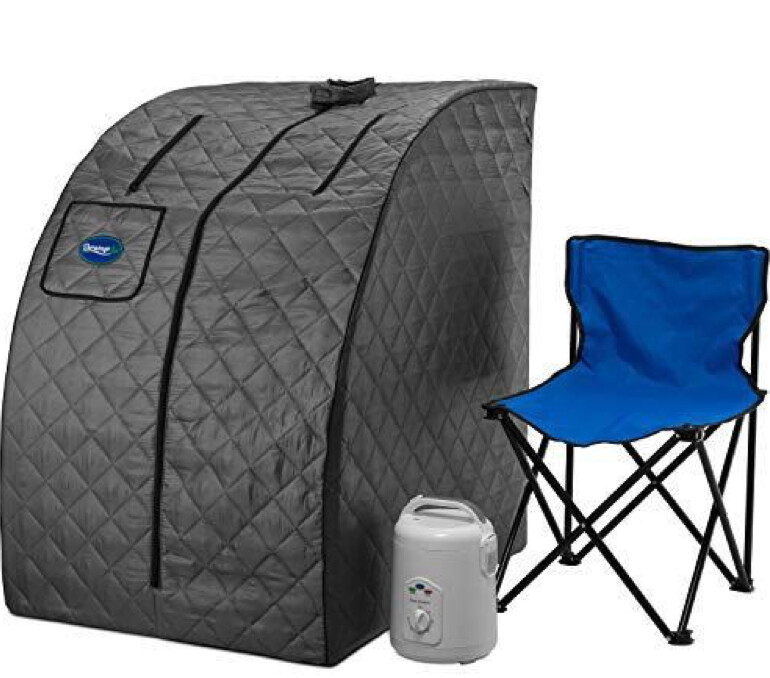
Professional runners sympathize. On July 20 at the World Athletics Championships in Eugene, Oregon, the women’s 5,000 meters took to the track for their preliminary races in searing 90-degree heat.
Yet despite the scalding temperatures, Elise Cranny, Karissa Schweizer, and Emily Infeld of the U.S. all qualified for the 5,000-meter final without any problems from the temperature. Schweizer and Infeld even ran season bests. Here are their tips for handling the heat so next time you’re faced with a race on hot day, you can be prepared.
Gradually adapt to hotter temperatures
Before the prelim, Infeld hadn’t run much in hot weather. She trains part-time in Flagstaff, Arizona, whose average summer high hover around 80 degrees, and has spent the last few months in Eugene, which hadn’t experienced 90-degree days yet.
“We were trying as best we could to go at the hottest part of the day, which is around 4 to 6, to do workouts,” said Infeld. “Some days that was 80 degrees, some days that was 60. So, I was trying to do sauna, and do things that I could to prepare in case it was hot.”
Infeld owns a portable sauna tent that goes up to 140 degrees. She would go for a run, and if it wasn’t hot enough for her body to learn to adapt, she’d hydrate well and sit in the sauna for 20 minutes to simulate heat training. A review published in Frontiers looked at numerous studies that confirmed that passive heat acclimation strategies, such as sauna, have a measurable effect on athletic performance and heat tolerance. If you don’t have access to a sauna, a study from Temperature recommends overdressing to simulate hotter temperatures, though admits this method isn’t as effective.
Infeld’s preparations paid off with a season best time of 15:00.98 and a time qualifier for the 5,000-meter final.
Stay as cool as possible before racing
Schweizer already had one race under her belt before the 5,000-meter prelims —the championship 10,000 when she placed ninth in a personal best of 30:18.05. Because the weather was temperate for the 10,000, Schweizer found the heat during the 5,000 jarring.
Not only does Schweizer train to adapt to the heat—such as working out in the Salt Lake City, Utah sun during altitude camp with the Bowerman Track Club or using a sauna like Infeld—but she also takes precautions before race to stay cool.
She spends much of her pre-race time in the shade, wears an ice vest to warm up, and even stuffs ice in her uniform on the starting line: “It was to the point where I had chills, so I was pretty cold going into the race.”
While utilizing shade and ice may sound like too simple of a solution, it’s actually very effective. The same Temperature study previously mentioned reveals that pre-cooling your body optimizes endurance performance and mitigates the effects of heat strain during extreme temperatures. Some techniques mentioned include ice baths, ice vests, cold towels, and drinking very cold drinks or frozen beverages (called “ice-slurries” in the text) before the race. The study recommends trying out a few techniques to see what works best for you on race day.
Wear sunglasses to prevent extra strain
Cranny credits her races last year at the Olympic Trials and Olympics as practice for racing in the heat, and also has similar pre-race cooling procedures as her teammate, Schweizer. But Cranny also found that wearing sunglasses during races makes a huge difference.
According to Cranny, many of the Bowerman Track Club athletes wear sunglasses in practice. But until the USATF Championships in June, she had never worn them in a race before. Shalane Flanagan, who coaches the club alongside Jerry Schumacher, highly recommended it, telling Cranny that it prevents squinting in direct sunlight, which relaxes the face. By relaxing her face, Cranny felt she prevented other parts of her body from tensing up, such as her shoulders.
Expect to see Cranny, Schweizer, and Infeld all wear sunglasses for Friday’s final like they did in the prelims, in addition to using pre-cooling techniques. They’ll fight for medals against key competitors like double Olympic champion Sifan Hassan, world 10,000-meter champions Letesenbet Gidey, and world 1500-meter silver medalist Gudaf Tsegay on Saturday, July 23.
Schweizer is ready to put herself in the race, no matter the conditions or pace: “I feel like at a U.S. level, I’m pretty good at running with that confidence. But going into a world level, there’s a lot of really big names and a lot of them have run some pretty crazy times. So I think it’s hard sometimes to really trust yourself and trust your fitness but I know I can hang with the best of them.”
Cranny will focus on staying mentally tough, as Schumacher advised her and Schweizer that a 15-minute 5,000 might feel like a 14:30 effort in the heat. “You kind of just have to prepare yourself… If you panic 6 laps in cause it feels horrible, even if you’re not running a PR pace… being prepared for that and talking yourself through it is a big part.”
Infeld caught COVID-19 at the USATF Championships but isn’t letting that or the temperatures hold her back: “I always want to compete against the best and see where that lands me,” she said immediately post-race, before knowing she qualified on time. “Today it was sixth in that heat, but I hope that’s enough to get in the final and mix it up with the women out there.”
(07/24/2022) ⚡AMPby Runner’s World
New athletics series to be launched in US to boost sport's popularity before Los Angeles 2028
A new circuit of athletics meetings designed to help popularise the sport in the build-up to the 2028 Olympic Games in Los Angeles is set to be launched next year in the United States.
The series has been revealed by Max Siegel, the chief executive of USA Track & Field (USATF), with the aim of making athletics the country’s fifth-most-followed sport by the time of Los Angeles 2028.
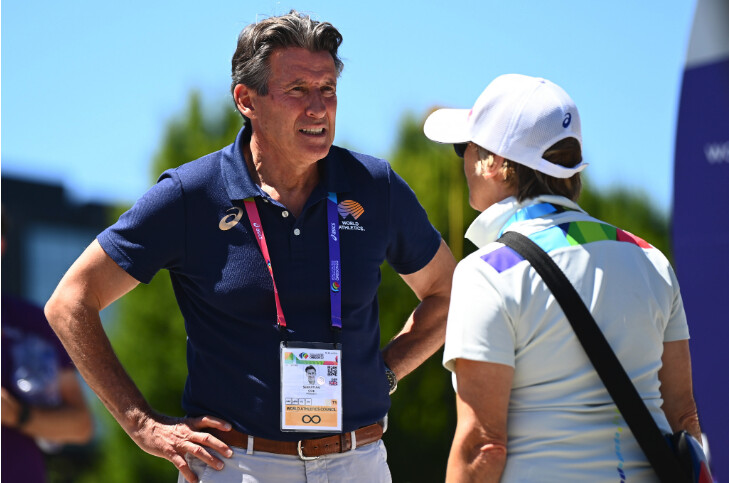
The plan has been backed by World Athletics, who under its President Sebastian Coe, have long had the aim of making the sport more popular in the US and have joined forces with USATF on a series of initiatives called "Project America".
"Whether you think we're crazy or not, it gives us something to shoot for in terms of how they measure where track and field is in the ecosystem," Siegel told the Los Angeles Times.
The US has long been the sport’s most successful country when it comes to winning medals at the Olympic Games and World Championships, but its athletes' excellence has always outstripped the interest of the American public.
A World Athletics-contracted Nielsen study from 2019 found that track and field was the eighth-most-followed US sport, with 37 per cent of slightly more than 1,000 respondents indicating they were interested in it.
To move into the top five behind football on 66 per cent, baseball 56 per cent, basketball 55 per cent and soccer 47 per cent, track and field would need to surpass swimming, tennis and motor racing.
Coe believes that what gives athletics a great platform in the US is the fact that, according to their figures, there are already 50 million Americans who identify as recreational runners.
"The challenge is to form that really clear connect with what they are doing - particularly those recreational runners - and believing they are part of that track and field landscape," Coe said.
Besides California, Florida and Texas are among states identified as possible host venues for the new series.
Siegel plans to "take pre-existing events with built-in fanbases and create a 'festival-type atmosphere' around them, perhaps including a road race, to tap into its largest possible audience of casual runners."
He hopes that the current World Athletics Championships being staged in Eugene in Oregon, the first time the event has been held in the US, will help provide a launchpad for the new USATF series.
American broadcaster NBC is showing 12.5 hours from the World Championships on its main feed, including a first-ever prime-time window - four more hours than it has devoted to a previous world championship since the 2007 event in Osaka.
Among those publicly backing the new circuit is Allyson Felix, America’s seven-time Olympic and 13-time World Championship gold medallist.
"I guess it’s been a long time coming," she said.
"I know that we’re really proud to host the World [Championships].
"We’re really excited you all get to see what we’ve seen and come to Hayward and experience the Hayward magic.
"I know in my career, I’ve always been a little envious of that athlete in the home country, that applause.
"I’m just really excited for all the US athletes to be able to get that experience.
"I hope that hosting events in the U.S. will bring in new fans, that people will understand the sport and be drawn to it.
"I hope that having the Olympics in Los Angeles coming up will bring a new wave of fans.
"So just really, we got to get out there and really keep kids engaged and enjoying the sport.
"I hope that having events in the US is one way."
(07/24/2022) ⚡AMPTsegay wins women’s 5000m world title after dramatic last lap
It was a 5000m race that came down to the final 100m, Ethiopia’s Gudaf Tsegay using her 1500m speed to prevail in a thrilling sprint finish and gain her first global outdoor gold on the penultimate day of the World Athletics Championships Oregon22.
The world indoor 1500m record-holder, who claimed the indoor title in that discipline in Belgrade in March, returned to the track five days after claiming 1500m silver behind Kenya’s Faith Kipyegon at Hayward Field and she had the 5000m title as her target. After a tactical test, she achieved her aim, clocking 14:46.29 as little more than a second separated the top three. Kenya’s 2018 world U20 winner Beatrice Chebet was right behind her, securing silver in 14:46.75, while Ethiopia’s Dawit Seyaum got bronze in 14:47.36.
Three years after placing runner-up to her compatriot Hellen Obiri – the two-time world 5000m champion who focused on the 10,000m in Oregon – Margaret Kipkemboi finished fourth in 14:47.71 and Ethiopia’s recently-crowned 10,000m champion, Letesenbet Gidey, was fifth in 14:47.98, one place ahead of Netherlands’ double Olympic champion Sifan Hassan in 14:48.12.
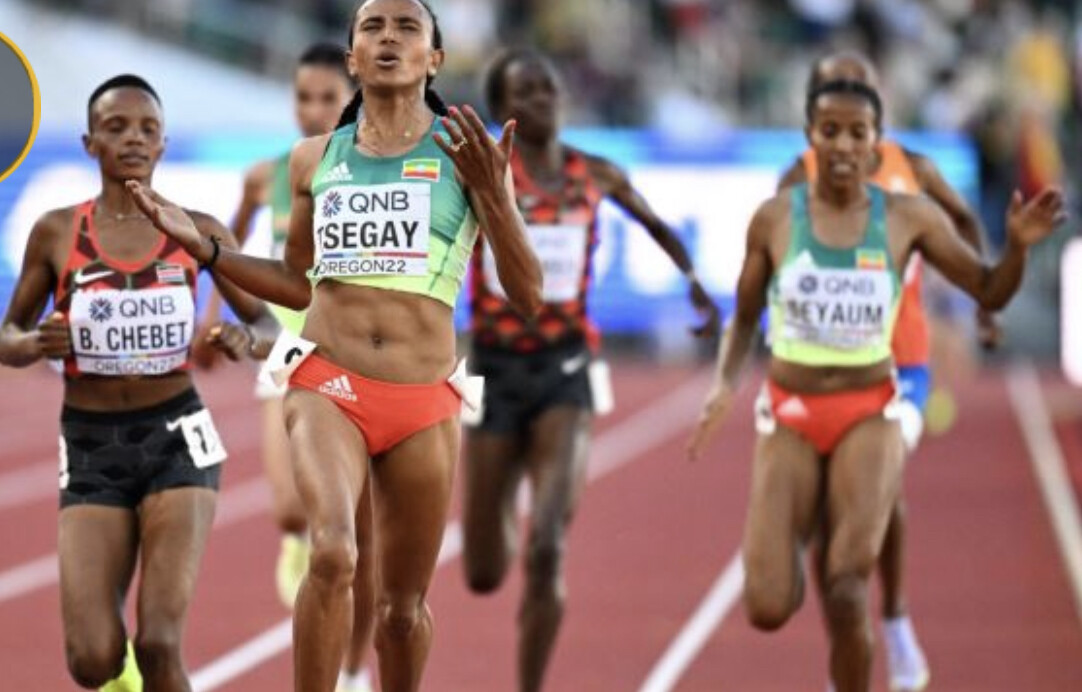
“The hard times were at the Olympics in Tokyo, because I was injured there” said Tsegay, who still managed to race for 1500m bronze at last year’s Games. “Not today.”
With a final 1500m of 4:14.59 and a last lap of 59.95, the 25-year-old pulled away from Chebet and Seyaum down the home straight, executing her plan.
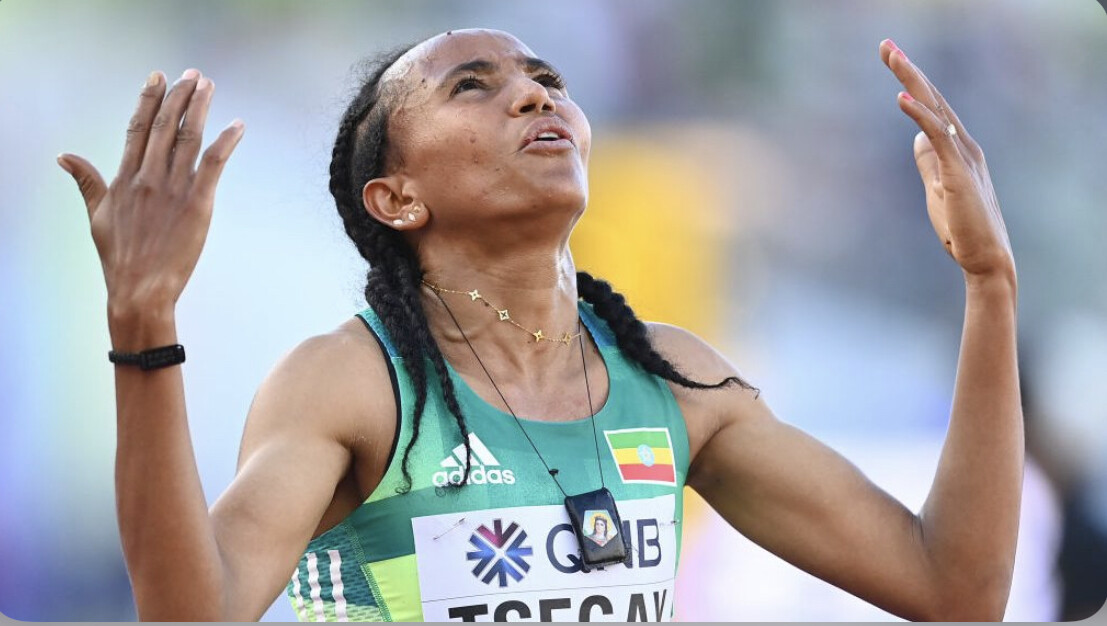
“I have been training well for 1500m and this helps sprint on the home stretch,” added Tsegay, who claimed her 2014 world U20 1500m silver in Eugene. “I know that Sifan is a top athlete and she is also a 1500m runner, so she has the speed. When she came in front, I sped up even more and won the medal.”
It was that attack from Hassan at the bell that launched Tsegay into action. Always near the front, Tsegay led through the first 1000m in 3:14.21 ahead of Kazakhstan’s Caroline Chepkoech Kipkirui, Seyaum and Gidey. Gidey and Tsegay continued to take turns at the front and Tsegay was to the fore as 3000m was reached in 9:02.79. The world 10,000m champion was a stride ahead with four laps to go as she and Tsegay continued to control the race, with Chebet right behind them.
Glancing over her shoulder with three laps remaining, Tsegay led the 10-strong group and Gidey moved ahead along the back straight. One lap later, Tsegay kicked ahead, but not by enough to shake off her rivals. With her eyes on the big screen, she could see Hassan move from seventh to fifth, and by the time they reached the bell the Olympic champion was on her shoulder.
The race was down to a six-strong battle for the medals. With Tsegay in front, Hassan moved ahead of Gidey as they ran down the back straight for the final time, taking the inside line to challenge Tsegay on the bend. Chebet was running wide, but holding her place. As they left the curve, Hassan no longer seemed the biggest threat, with Chebet providing the challenge. But no one could match Tsegay’s finishing speed and she strode ahead down the home straight, on her way to victory. Chebet held on for silver, as Seyaum came through for bronze.
“It was a matter of tactics,” said Chebet, whose CV includes the 2019 world U20 cross country title as well as her 2018 world U20 track win. “I was well positioned.
“Although I am young, I've run many races with elite athletes at the Diamond League. They are not new to me. This medal will make a good difference for me.”
For Seyaum, the bronze medal was welcome after years of injuries. “I hoped to get a place on the podium,” she said. “I hoped and expected to become a medallist in this event. For five years, I was having injuries, so this result is very special for me.”
And Hassan, who finished fourth in the 10,000m seven days earlier, explained how she was happy to be back on the international stage. “I started to train like two months ago and today, I did my best and I gave everything,” she said. “For me, it is important if I give everything and race smart, it does not matter what the position is.
“I think I really overworked last year, so I wanted to have a break mentally, because athletics is not only about running but also about motivation. I took an almost seven-month break. I am happy to be back, and I will try for more golds next year.”
(07/23/2022) ⚡AMP
by Jess Whittington (World Athletics)
World Athletics Championships Budapest23
Budapest is a true capital of sports, which is one of the reasons why the World Athletics Championships Budapest 2023 is in the right place here. Here are some of the most important world athletics events and venues where we have witnessed moments of sporting history. Throughout the 125-year history of Hungarian athletics, the country and Budapest have hosted numerous...
more...Sebastian Coe hopes current athletes break 1980s records
Sebastian Coe wants the current generation of athletes to finally take down world records from the 1980s which he concedes “may not be the safest on the book”.
The issue has become a major talking point in Eugene after Shericka Jackson ran a stunning 21.45sec to win world 200m gold, a time that put her second on the all-time list behind Florence Griffith Joyner. The controversial American, who also broke the 100m record in an era when drugs testing was sporadic, died in 1998.

A number of other records in women’s sport have remained untouched since the 80s including the 400m, 800m, high jump, long jump, discus and shot put. They were all set by athletes from countries in the then eastern bloc.
“Legally, they are the existing records,” said the World Athletics president. “Legally, there’s nothing you can do or say beyond the evidence of a positive test. But this was my era so I have to accept it was a time when testing was a bit sporadic. We know it was a different era. There are records there that you look at and go, there’s nothing legally we can do about them but they may not be the safest records on the book.”
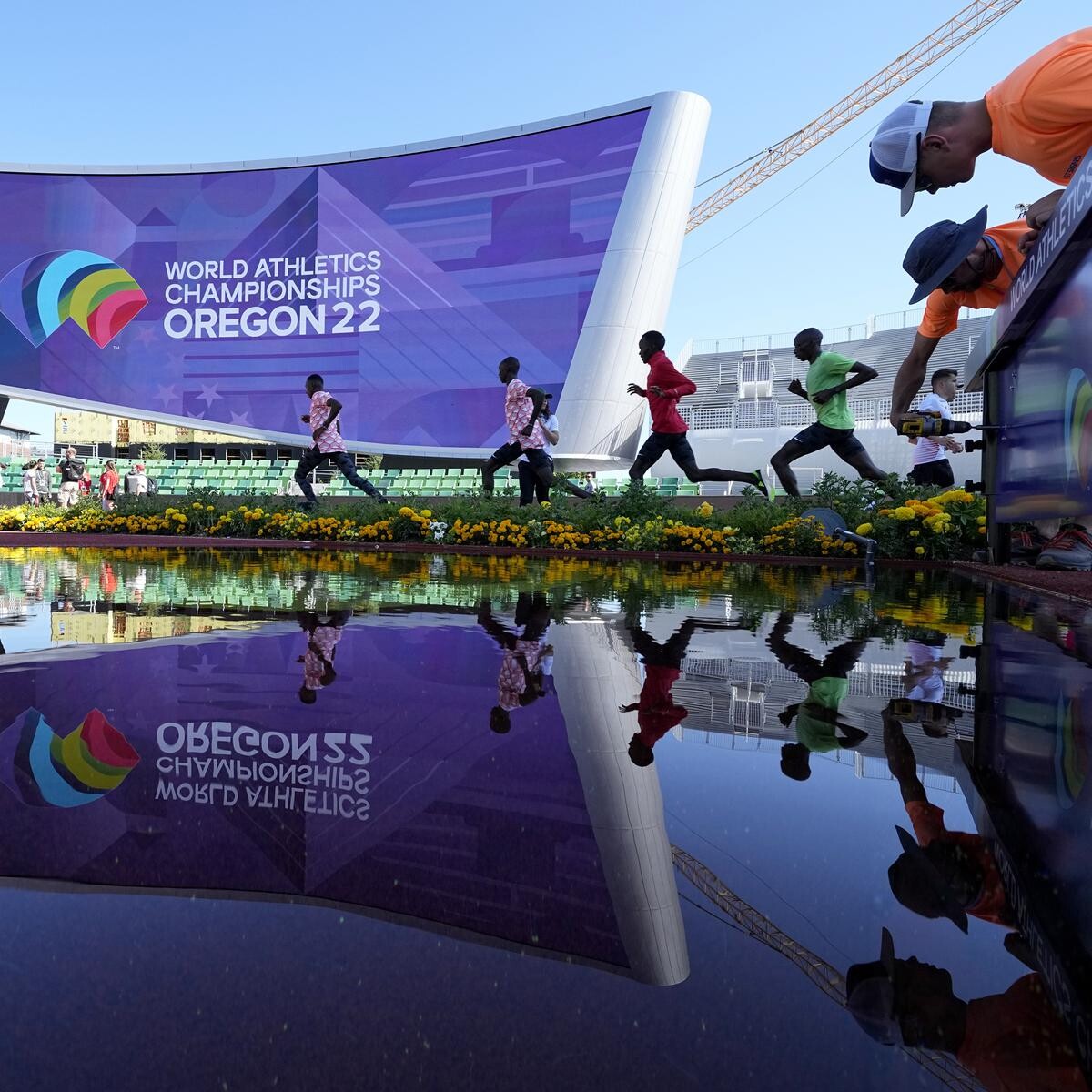
Lord Coe said it was impossible to strike the old records, but suggested the advent of super spikes and faster tracks could see more of them broken in the coming years. “I would prefer that there is an organic change through the Shericka Jacksons, who are now being tested regularly,” he added. “We have the Athletics Integrity Unit, we have their own national anti-doping agency that is now working far better than it was when I came into office, you’ve got agencies around the world.”
Asked to compare the modern era with the 80s, Coe added: “It’s a different world. I was part of that world so I’m not saying I was significantly different to anyone else there – well, I wasn’t a cheat. But the reality is there is very little legally you can do and I think we have to be realistic about it.
“There’s nothing that I’m in a position to do to rewrite the record books but I’m open about it – some of these records are not safe records.”
However, Coe, who himself set an 800m world record in 1981 that remained unbroken until 1997, admitted he felt some sympathy for those stuck behind the iron curtain who were forced to dope by their governments. “When you look at athletes that had to come through that system, you have more sympathy than you do for the athletes who chose, of their own volition in liberal democracies, to do it,” the double Olympic champion added.
(07/23/2022) ⚡AMPby Sean Ingle
World Athletics Championships Budapest23
Budapest is a true capital of sports, which is one of the reasons why the World Athletics Championships Budapest 2023 is in the right place here. Here are some of the most important world athletics events and venues where we have witnessed moments of sporting history. Throughout the 125-year history of Hungarian athletics, the country and Budapest have hosted numerous...
more...Abby Steiner Delivers a Solid Debut at the World Championships
Last night in Eugene, Oregon, Abby Steiner placed fifth in the world in the 200 meters, with a time of 22.26. She was the top American. Her 21.77 at U.S. championships a few weeks ago was the second-fastest time in the world this year coming into the World Championships. She’s the sixth fastest American ever in the event.
“It was just such a great learning experience,” she said. “I got to compete against some of the people I have looked up to for so long in this sport.”
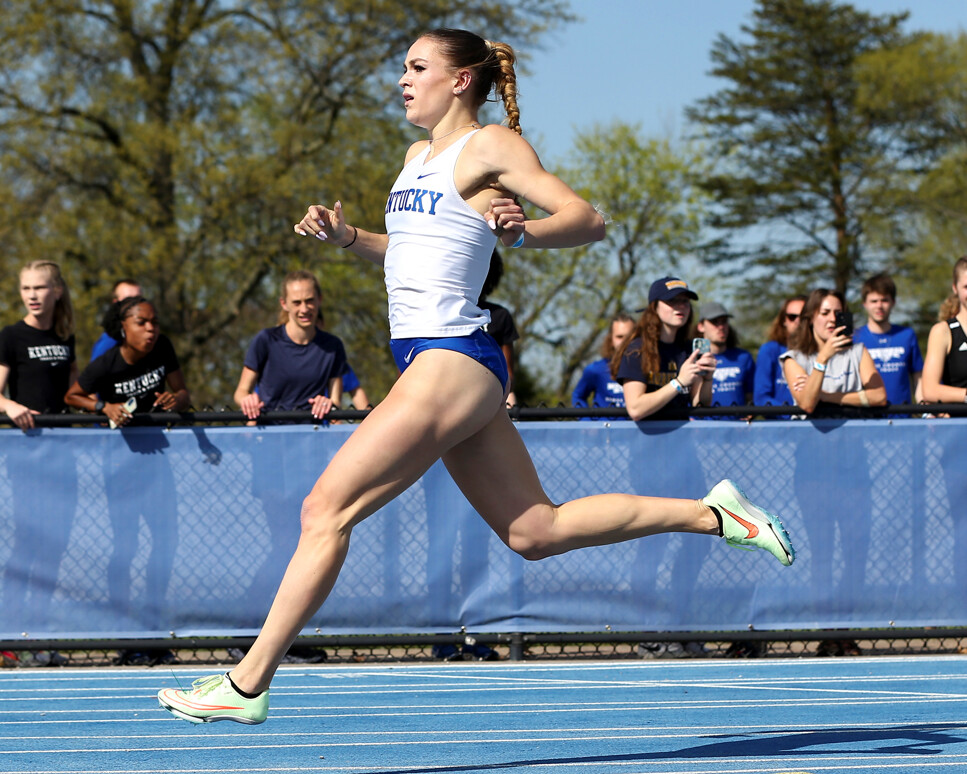
Nearly every time she’s raced a 200 so far this year (and she’s been in a lot of races), Steiner is clearly in the front. She usually gets out of the blocks well and comes off the turn leading. This was the first time this year the lanes around her were filled by women who are just as fast as her, or faster.
The 200m Final at the World Athletics Championships
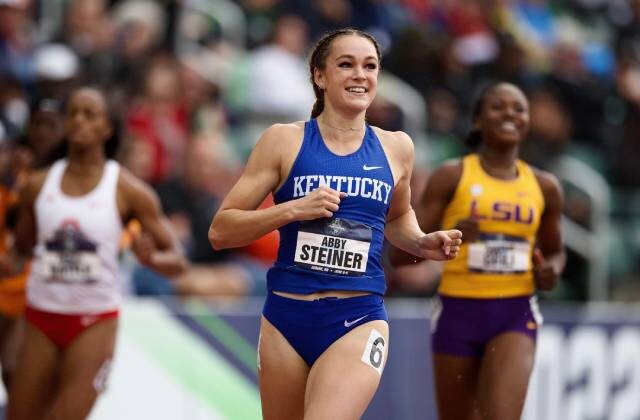
Jamaica’s Shericka Jackson won the race in 21.45, a championship record. She’s the second fastest woman ever in the event after Florence Griffth-Joyner, who ran 21.34 in 1988. Shelly-Ann Fraser-Pryce, also of Jamaica, finished second in 21.81, after winning the 100 meters a few days ago. Great Britain’s Dina Asher-Smith finished third in 22.02, after setting a national record in the 100 final a few days ago, where she finished fourth.
The very American crowd in Hayward Field had their eyes on Steiner. Nobody really knows anything about her; her Instagram page doesn’t provide anything substantial about her—other than the fact that she’s very, very fast. But we already knew that.
Sports have always been a huge part of her life; Steiner even played soccer at Kentucky in addition to running track when she first got to college. Her degree is in exercise science, and if she weren’t a track athlete, she’d want to be a physical therapist. She’s passionate about the mechanical, physiological lens of running, even though she has unconventional form. She has a dramatic left arm swing that makes her form recognizable from across the stadium.
What the Future Holds for Abby Steiner
Steiner has deferred an acceptance into a Masters program in physical therapy for the foreseeable future while she does pro running full time. “It’s been a dream of mine for a very long time,” she said. “I want to give back the way those people gave back to me. As an athlete I know that injury is inevitable.” She pulled her ACL playing soccer in high school, and that was a pivotal moment for her: Sports are all she knows, and what she loves was momentarily taken away from her.
Beyond sports, she’s “really into crossword puzzles right now.” I double-taxed and told her she can’t be serious and she laughed. “I also do jigsaw puzzles,” she said. Strenuous hobbies are not for her, as her career is already strenuous and she wants to take the time to decompress and chill out very seriously. She said she spends a good amount of time alone and is trying to read 25 books this year. She’s already 14 deep, and currently reading The Invitation by Lucy Foley.
She’s also interested in bringing fashion to track and field. She signed with Puma this week and the new Puma uniform only has one shoulder. “I love that fashion is coming back into track and field. Bold uniforms, bold hairstyles, makeup, I love it,” she said. “I honestly feel like when I look good I run good. I feel like my confidence exudes itself on the track.” During our interview, her entire outfit was the same color blue and she had matching blue nails—a nod to her alma mater, the University of Kentucky, where she just graduated but plans to continue living and training.
Steiner really likes and trusts her college coach and doesn’t want to part with him. “My coach is one of the main reasons I’m in this position. He completely developed me from freshman year until now.” Lexington is also not far from her hometown of Columbus, Ohio, which is where her family lives.
Steiner was fifth in the world, but she’s just turned 22. Fraser-Pryce is 35. Jackson is 28. Steiner’s got time. We’ll be hearing her name for a while.
(07/23/2022) ⚡AMPby Abby Steiner
World Athletics Championships Budapest23
Budapest is a true capital of sports, which is one of the reasons why the World Athletics Championships Budapest 2023 is in the right place here. Here are some of the most important world athletics events and venues where we have witnessed moments of sporting history. Throughout the 125-year history of Hungarian athletics, the country and Budapest have hosted numerous...
more...3 Ways to Be a Better Marathoner, From the Fourth-Place Finisher at Worlds
Cam Levins took two minutes off his own Canadian record. He has thoughts
At the Tokyo Olympics last year, Cam Levins had a rough time of it. He finished in 72nd place—out of 76—in 2:28:43.

Fast forward to July 17 in Eugene, Oregon, and Levins had a vastly different result at the World Championships marathon: fourth in 2:07:09, breaking his own Canadian record from 2018.
“I would only have been happier if I was one place higher,” Levins, 33, said in the moments immediately after the race. “But it was the best race of my life. I couldn’t be disappointed with it.”
It wasn’t by accident. Levins, who lives in Portland, Oregon, came away from his Tokyo experience, determined to overhaul his approach.
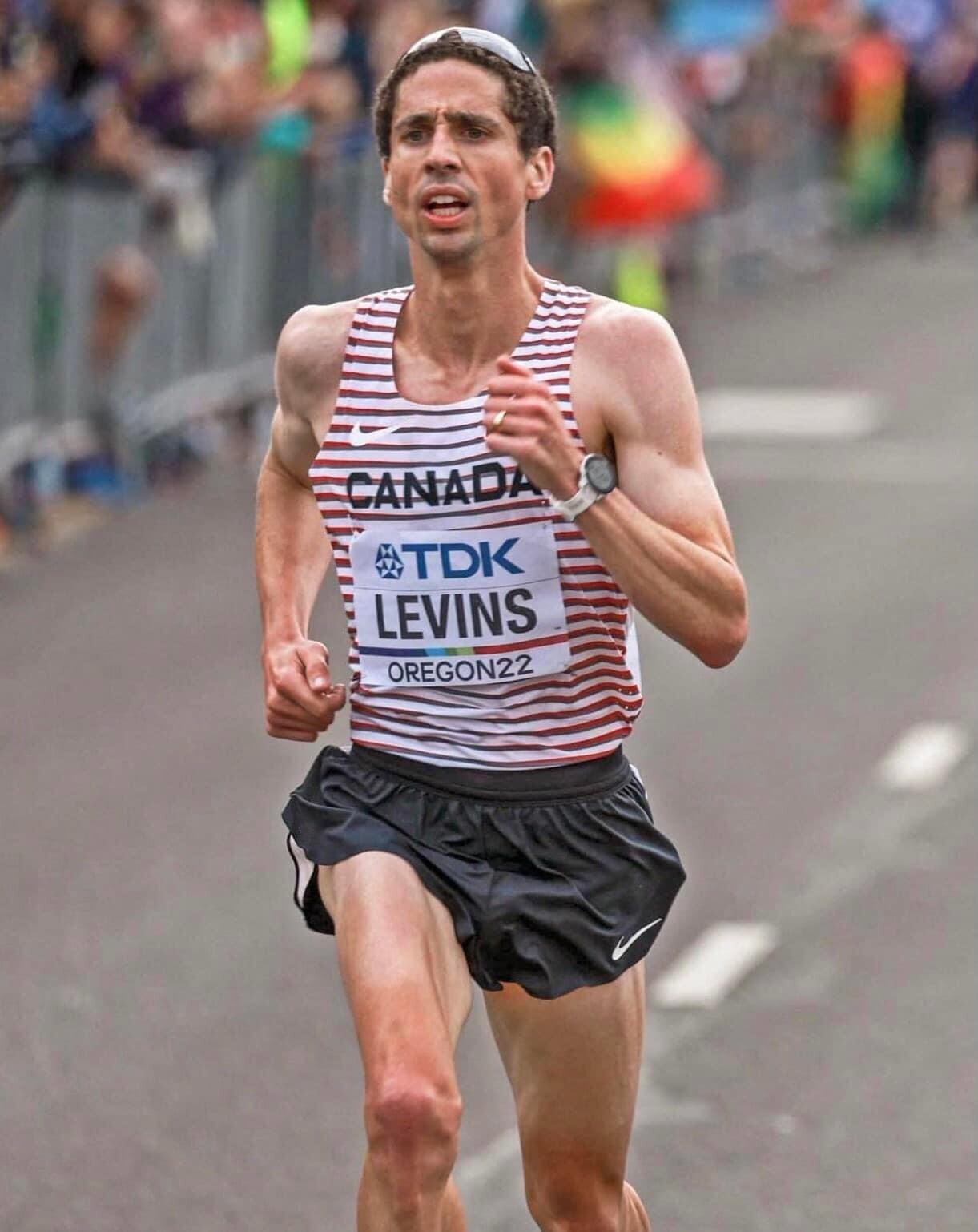
“I needed to be better in every way, across the board,” he said. “I changed myself completely as an athlete last year to this year. Training harder and better in every conceivable way.”
A few hours after his race, Levins stood outside Hayward Field and explained his transformation to Runner’s World, while jubilant Canadian track fans stood by to listen, take photos, and congratulate him.
How did Levins do it? And what can runners who aren’t in the elite ranks take from his lessons? He shared three tips.
Take an objective look at training
Levins broke the longstanding Canadian record when he debuted in 2018, running 2:09:25. Then he had a series of sub-par races over the next three years.
After Tokyo, Levins decided he needed to return to his high-mileage ways. (When he was an undergraduate at Southern Utah University, where he was a two-time NCAA champion, he was notorious for putting in 150–160 miles per week.)
For this marathon, he got up to 170 miles per week in March and held it for several weeks, sometimes working out twice per day. (About once every three weeks, he’d do 5 x 2,000 meters in the morning, and 20 x 400 meters in the evening.)
The point isn’t that Levins runs high mileage and everyone else should, too. Keira D’Amato, the American record holder in the marathon, rarely breaks 100 miles per week.
Levins’s lesson is about channeling frustration into change. Last summer, “I think I was really disappointed in myself,” he said. “I think it's important to just take a look at your training and kind of think, ‘What am I missing?’”
Don’t neglect strength
Levins was getting injured frequently, and he struggled late in marathons. Since Tokyo, he has been religious about his strength training, which allows him to maintain his epic volume and finish strong in races.
“I think it makes such a huge difference late in the marathon,” he said. “It's not like you've been breathing that hard. It’s your body. You’re so worn out from running that much.”
His routine consists of four parts—single-leg exercises, mobility work, core strengthening, and deadlifts, and he does it with the help of David McHenry, a strength coach in Portland.
“Of everything I’ve done, that's been the single most important change that I’ve made,” Levins said.
Marathoners need speed, too
Levins trained his track speed during the marathon build. He ran 27:53 for 10,000 meters on the track in April, and occasionally, he incorporated elements of mile speed into his workouts, he said.
He’d do repeats as short as 200 meters and short, 30-second hill repeats, as a way of “recruiting different muscle fibers,” he said. Like strength training, it’s easy to neglect amid the long runs and marathon pace work.
It paid off: In Eugene, Levins ran his final kilometer in 3:01 and outlasted Kenyan great Geoffrey Kamworor for fourth place.
(07/23/2022) ⚡AMPby Runner’s World
SF Marathon week brings runs and new inclusive races
On Friday thousands came to pick up their race bags at Fort Mason's Festival Pavillion.
"San Francisco is special there are a lot of uphills so I think it will be a super challenge," said Pedro Morando, who came from Mexico.
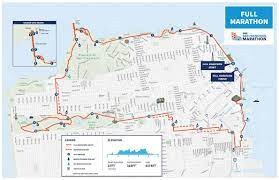

"Just glad to be back in full force on our 45th anniversary," said Christiian Abrahamsen, one of the SF Marathon organizers, "People are able to travel again or more willing to travel again so that has definitely bumped the numbers up."
New this year, the marathon will be the first in California to have male, female and non-binary gender categories.
"Just giving everybody a chance regardless of what you affiliate yourself as, just knowing it's a safe place to be and we're happy and excited to have you there," said Eileen Nichols, a San Francisco resident who plans to run.
Also, exciting for young runners, is a new 1k Family lollipop run.
"I think it's great to get the kids involved. I think physical fitness is very important," said Sharon Chang, a San Francisco mom who was registered with her husband and four-year-old daughter.
The marathon is also partnering this year with sponsor Degree to include a special team of runners with disabilities.
"I was diagnosed in 3rd grade with a degenerative eye condition...I lost my sight at 30," said Michael Zampella of Philadelphia.
Zampella is on a team with a woman from Houston who has multiple sclerosis. They plan to finish their first marathons on Sunday.
"We work so hard just to do basic things so to do something extra like a marathon is crazy difficult but so worth it," said Sagirah Ahmed Norris of Houston who struggled with MS.
Vendors say they're glad to be back. They say they have missed the marathon events which often brings new business, but they say running has become more popular than ever.
"There were more and more runners because people weren't going to gyms, so running sale shoes are booming during the pandemic," said John Zilly, co-founder of Vimazi, which was started in 2019 making special running shoes.
Some people say with the pandemic still not over, they don't want to run the risk of catching Covid. Some say they'll be bringing a mask to the starting line.
"I am a little bit worried about COVID still," said Maricar Montano, an SF Marathon pacer who came from Hong Kong to run.
"It's going to be about thirty minutes of just standing around in a big crowd," said Montano, who says she'll likely remove the mask once she starts running and the crowd thins out.
Masks are not required on the course this year.
The marathon starts at 5:30 a.m. Sunday and residents are advised to watch for road closures.
(07/23/2022) ⚡AMPSan Francisco Marathon Weekend
The San Francisco Marathon (Full Marathon, 1st Half Marathon, 2nd Half Marathon, 5K and Ultra marathon) will fill San Francisco’s streets. The course is both challenging and rewarding. You’ll enjoy waterfront miles along the Embarcadero, Fisherman’s Wharf, and Crissy Field; feel your heart pound as you race across the Golden Gate Bridge; speed past landmarks like Coit Tower, Golden Gate...
more...Yoshihiko Ishikawa wins Badwater 135 for the 2nd time
The male course record holder celebrated his second victory, while American Ashley Paulson's new female course record raised a few eyebrows
The 45th anniversary of the Badwater 135 race wrapped up Wednesday, with no shortage of both heat and excitement. Yoshihiko Ishikawa of Japan took his second victory at the race, running negative splits to finish in 23:08:20. Ishikawa previously set the course record at Badwater 135 in 2019, in 21:33:01. He famously followed his win by proposing to his then-girlfriend, and the couple has since married.
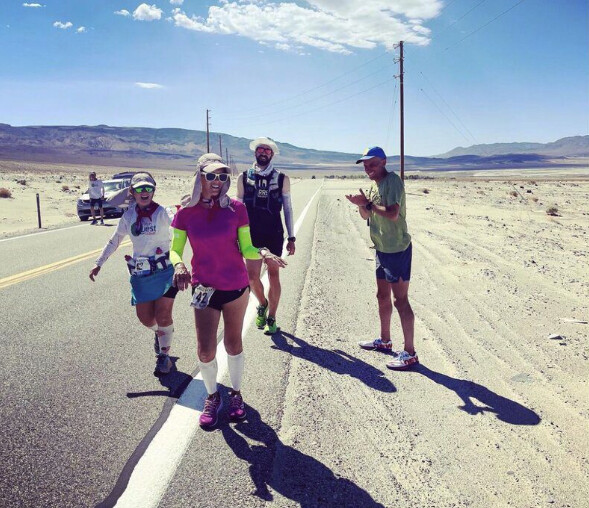
The famously gruelling Badwater 135 starts at Badwater in California’s Death Valley at 85 metres below sea level (the lowest elevation in North America), taking runners 135 miles (216 km) through Death Valley and up Mount Whitney, reaching 2,548m of altitude at its highest point. Temperatures have been known to soar well above 100 F (37 C). The cutoff time is 48 hours, and the average finishing time is 40 hours. As at the Western States Endurance Run, finishers receive a much-coveted belt buckle. There is no prize money for winners. The race is invitational, and 94 athletes started the event this year, with 77 finishing.
Fan favourite and last year’s winner Harvey Lewis, of Cincinnati, finished his 11th Badwater in fourth place with 27:16:05, while his partner, Kelly O’Dell, completed her first Badwater with just over an hour to spare, in 46:57:33.Ultrarunner and race director Bob Becker, 77, of Fort Lauderdale, attempted to become the race’s oldest finisher. In a heroic effort, Becker made it across the line just over the 48-hour cutoff. The athlete made an attempt at the same title last year, but had to drop at mile 50. His dedication won the hearts of fellow athletes and supporters as he struggled to complete the last few steps of the race.
Two Canadians competed in Badwater 135 this year. Norma Roberts, 63, of Calgary, finished in 37:00:13 and was the 11th female, while Rich Peers, 51, of Kitchener, Ont. finished in 44:13:01.
(07/23/2022) ⚡AMPBadwater 135
Recognized globally as "the world’s toughest foot race," this legendary event pits up to 90 of the world’s toughest athletes runners, triathletes, adventure racers, and mountaineers against one another and the elements. Badwater 135 is the most demanding and extreme running race offered anywhere on the planet. Covering 135 miles (217km) non-stop from Death Valley to Mt. Whitney, CA, the...
more...Mascot's head safely returned at World Championships
An evening of captivating finishes on the track on Monday was followed by shock when Legend the Bigfoot mascot’s head was reported stolen at the World Athletics Championships in Eugene, Ore. But Legend was back to his usual antics Tuesday evening, such as cooling off in the steeplechase water pit and dancing to entertain the fans.
Using CCTV and the help of social media, event organizers discovered footage of unidentified men laughing and joking as they played with Legend’s head. The investigation was then turned over to the police. Organizers stated: “We can confirm that an accredited photographer was removed from Hayward Field in connection to the investigation of a theft at the venue. This is now a police matter, and we won’t have further comments at this time.”

A committee chose the seven-foot-tall giant yellow Bigfoot to be the accredited mascot earlier in the year, in a nod to the Pacific Northwest centuries-old mythology surrounding Bigfoot. Legend has been a fan favourite since the beginning of the championships.
Thankfully, Legend reappeared on Tuesday. Organizing committee CEO Sarah Massey called Legend “an extension of the event itself,” and he has been described (and was created) to be “fun, mischievous, playful, and larger than life.” This recent mischief clearly went just a little too far for Legend, and fans will hope to enjoy his large furry high-fives for the rest of the Championships, head intact.
(07/23/2022) ⚡AMPby Running Magazine
Three Americans will be running the women’s 5,000 meters finals at World Athletics Championships on Saturday
American Elise Cranny, who trains with the Bowerman Track Club, was the top U.S. qualifier to earn a berth in the final with a time of 14 minutes, 53.20 seconds in the second heat. Cranny finished first in the event at the USA Track & Field Outdoor Championships last month at Hayward Field.
Running in the first heat, Karissa Schweizer, who also trains with the Bowerman Track Club, qualified for the final with a time of 14:53.69. Schweizer won the 10,000 meters at the USA championships and finished second to Cranny in the 5,000.
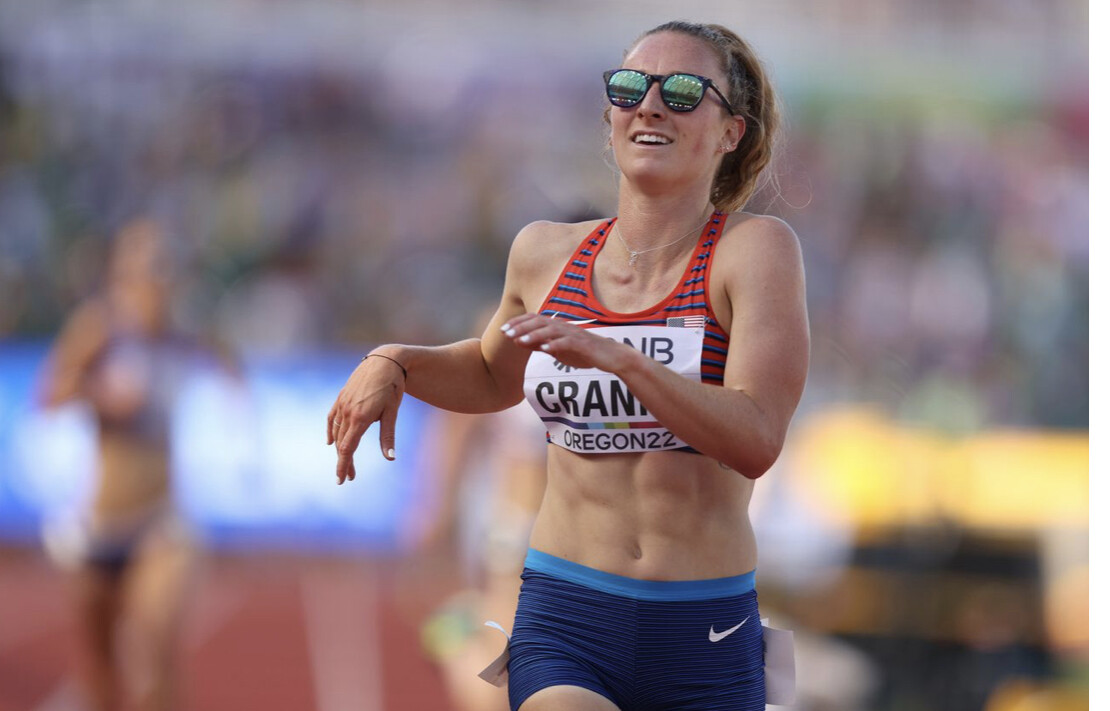
American Emily Infeld also advanced to the final as a time qualifier after finishing sixth behind Schweizer in the second heat in 15:00.98.
German Koko Klosterhalfen, who trains at the Portland-based Union Athletics Club, failed to qualify for the final after posting a time of 15:17.78.
The final is scheduled for 6:25 p.m. Saturday.
(07/22/2022) ⚡AMPby Geoffrey C. Arnold
World Athletics Championships Budapest23
Budapest is a true capital of sports, which is one of the reasons why the World Athletics Championships Budapest 2023 is in the right place here. Here are some of the most important world athletics events and venues where we have witnessed moments of sporting history. Throughout the 125-year history of Hungarian athletics, the country and Budapest have hosted numerous...
more...McLaughlin obliterates world 400m hurdles record with 50.68 in Oregon
Sydney McLaughlin has broken the world 400m hurdles record for the fourth time of her career, obliterating her previous best with 50.68 to win her first world title in the event at the World Athletics Championships Oregon22 on Friday (22).
In another epic race in front of a passionate home crowd, the 22-year-old Olympic champion raised the bar yet again. Behind her, Netherlands’ Olympic bronze medallist Femke Bol secured silver in 52.27, while USA’s former world record-holder Dalilah Muhammad clocked 53.13 for bronze.
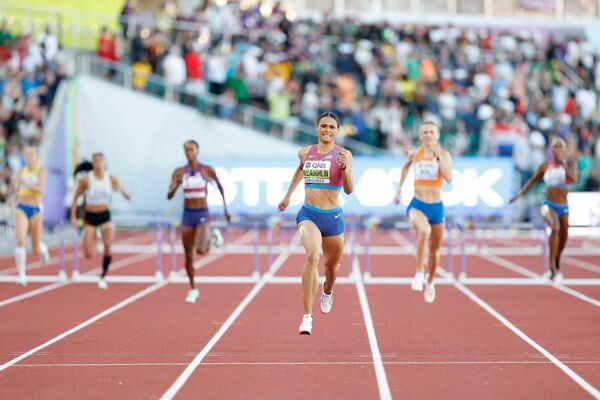
It is the third world record that McLaughlin has set at Hayward Field. Her first came at the 2021 US Olympic Trials, when she clocked 51.90 to improve on the 52.16 global mark that Muhammad had set when winning the 2019 world title ahead of her compatriot.
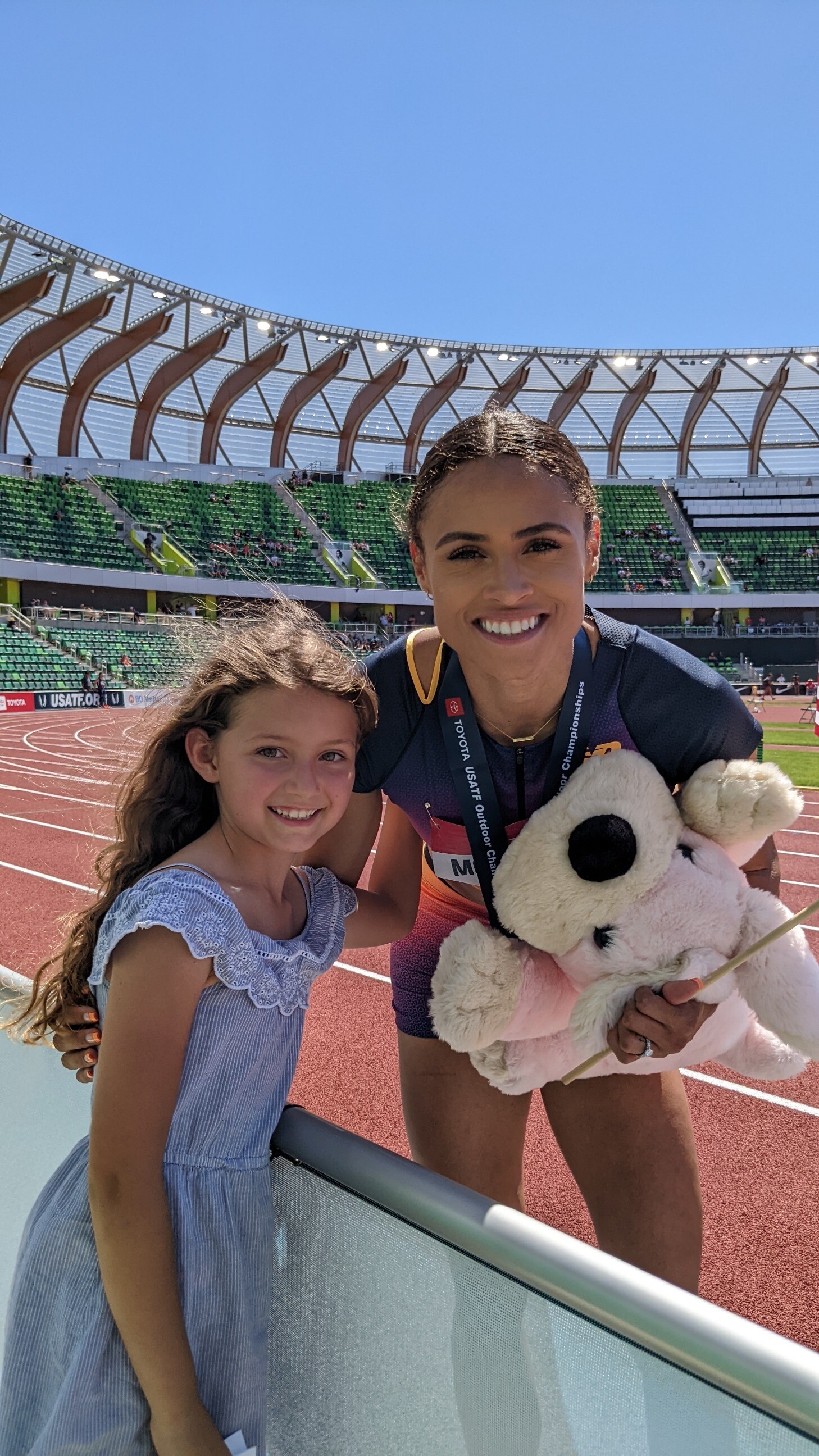
Just over a month later, McLaughlin ran 51.46 to win the Olympic title in Tokyo, and she broke the record for a third time at this year’s US Championships in Eugene on 25 June, clocking 51.41.
(Third photo of Sydney taken at USATF Championships. Photo by Jivko)
(07/22/2022) ⚡AMPby World Athletics
World Athletics Championships Budapest23
Budapest is a true capital of sports, which is one of the reasons why the World Athletics Championships Budapest 2023 is in the right place here. Here are some of the most important world athletics events and venues where we have witnessed moments of sporting history. Throughout the 125-year history of Hungarian athletics, the country and Budapest have hosted numerous...
more...Dave Proctor ends his cross-Canada run in Victoria after 67 days
Right on schedule, Dave Proctor of Okotoks, Alta. wrapped up his cross-Canada record quest in Victoria late Thursday afternoon. Proctor completed his 7,159km run after 67 straight days of running, and (pending verification) will have topped Al Howie’s cross-Canada speed record of 72 days, 10 hours, set in 1991. Proctor began this record attempt with a hat dip in St. John’s, and has been steadily running around 105 kilometers a day across the country, bumping that distance up to 107 km over the last few days to be certain of hitting the target.
This was not Proctor’s first attempt at the record; in 2018, running in the other direction, he was beset by a back injury and forced to quit in Manitoba after 32 days on the road. He then had to put off making his record attempt due to COVID. He shared gratitude for the journey in a social media post Thursday evening, calling the experience “priceless.”

Proctor is one of Canada’s most accomplished and best known ultrarunners. He holds course records at races including Lethbridge, Alta.’s Lost Soul Ultra (where he ran the 100-miler in 2021 in 19:05:00, beating his own previous course record of 19:27:00); he set the 48-hour Canadian record at 6 Days in the Dome in 2018 (358.163 km); in addition, he holds Canadian records over 24 hours (257.093 km) and 72 hours (500.077 km).
Proctor shared daily posts on Instagram that included his mileage, a ‘ditch find’ of the day, and his daily progress. In a recent post thanking the watch brand Coros for their sponsorship, he mentioned that he would be making his COROS data available post-run, but warned, “they’ll be big files.”

American ultrarunner Pete Kostelnick is familiar with a journey like Proctor’s: he holds the trans-American speed record of 42 days, 6 hours, 30 minutes. Kostelnick spoke to Proctor on Thursday during the final leg of his run, and shared some insight into how he is probably feeling right now.
“It’s bittersweet, but mostly sweet. After over two months, Dave’s new normal is very simple–eat, run, rest, repeat. Soon he’ll be back to ‘normal’ life, which, quite honestly, is a shock to the body and mind. In something like this, I think also a lot of the reward comes while you’re doing it,” Kostelnick said. “It’s a powerful feeling to know you just ran another 105 km yesterday, today and will keep doing it day after day. Once you’ve done it, you have so much to celebrate and be thankful for, but part of you is also thinking “well, what now?” My best advice to him today was to spend some time running alone and reflecting on the whole experience as he nears the finish line.”
Proctor was joined across the country by various friends, family members and fellow ultrarunners, who crewed and logged kilometres with him for anywhere from six days to over two weeks. Calgary-based ultrarunner Joel Campbell spent nine days with him, and has also paced him at local races. He feels Proctor’s strongest ability is his mental stamina.
“[It] is what puts him on the shortlist of elite multi-day runners out there,” Campbell says. “A lot of it has to do with his courage and the willingness to put himself on the line for failure, and high-profile public failure at that. Scrolling through the comments on his social media posts, I’m struck by how many people mention their own running triumphs, but more often, their missed attempts. Most of us have bonked in a race at some point, and to see him be willing to try again and now achieve his goal, seems to inspire others in whatever pursuits they’re facing.”
Kostelnick agrees: “He’s stubborn! This accomplishment for him has been in the making for years, and there were so many times when almost anyone but Dave would have said ‘well, maybe it’s not for me. Time to move on.'” Proctor faced both mental and physical challenges on the road and shared some of them with his fans on social media, including his struggle with not seeing his kids for so long and the physically painful start to each day.
Proctor touted both Howie and Terry Fox as inspiration on the road, sharing his thoughts on day 39 as he ran on the stretch of highway where Fox was forced to end his own trans-Canada run: “On this road, on this day I was schooled in the lessons of courage, determination, and belief that I thought I understood prior to this run but now know that I knew nothing.”
Proctor’s partner, Lana Ledene, shared her perspective on social media Wednesday evening. She wrote about watching Proctor log miles seemingly without effort, and the immense suffering and exhaustion she witnessed at the end of each day. Ledene asked Proctor how he managed to keep going: “He said he doesn’t think about the pain, he blocks it out and does not allow it to occupy any space in his thoughts.” She adds: “Without a doubt, Dave’s superpower is not his legs, it’s his mind.”
Post-run Thursday, Proctor shared that he was looking forward to coffee in bed, and added: “I’ll be taking tomorrow off running.”
(07/22/2022) ⚡AMPby Keeley Milne
America’s Garrett Scantling, the world’s top ranked decathlete this year, has been provisionally suspended for an anti-doping violation
It means the 29-year-old from Florida will not take part in this year’s World Athletics Championships in Eugene, where the decathlon events are due to take place tomorrow and Sunday (July 23 and 24).
Scantling, fourth at last year’s re-arranged Olympic Games in Tokyo, was provisionally suspended for a possible tampering violation stemming from a possible third whereabouts failure over missing drug tests or not filing complete information to be found for drug testing, the United States Anti-Doping Agency (USADA) announced.
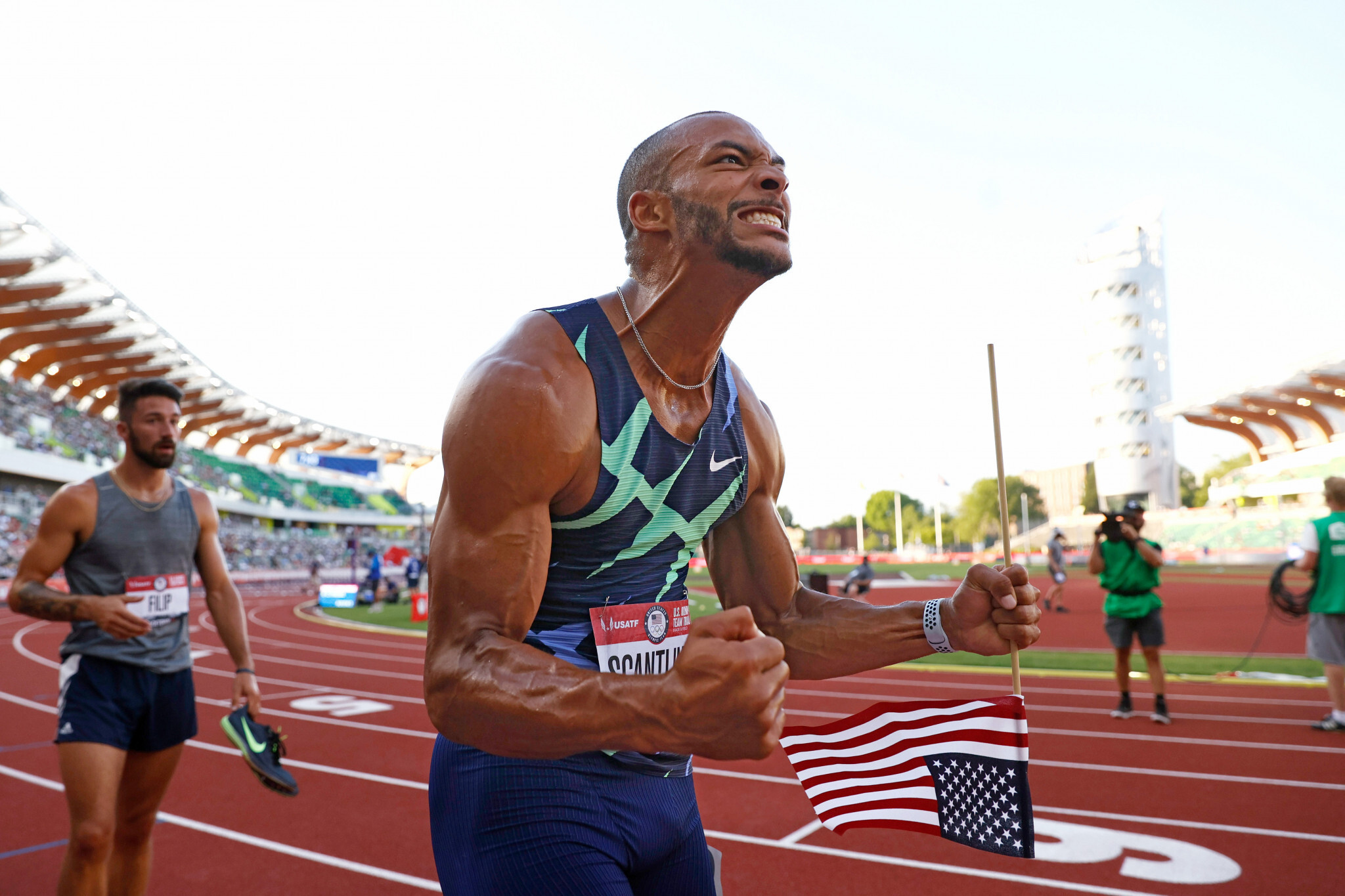
Scantling, who previously tried out for the National Football League’s Atlanta Falcons and Jacksonville Jaguars, won the US Championships in May with 8,867 points, the highest score in the world this year which put him seventh on the all-time list, ahead of Britain’s double Olympic champion Daley Thompson.
But his name was conspicuous by his absence when USA Track & Field announced its team earlier this month for the World Championships.
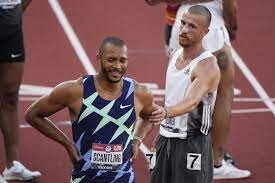
"Under the provisional suspension, Scantling is prohibited from competing in any competitions under the jurisdiction of World Athletics, USA Track & Field, or the United States Olympic & Paralympic Committee, pending the resolution of his case," USADA said.
"As such, he will not compete in the decathlon event at the 2022 World Athletics Championships in Eugene, Oregon."
Athletes face suspensions if they have three whereabouts failures in an 18-month period.
Whereabouts failures can be not being present for a drug test or not providing complete and accurate information to be found for drug tests.
"Unfortunately, there’s no leniency for being forgetful, you have to accept responsibility and move on," Scantling said on Instagram.
"What’s next?
"We shall see!"
USADA said Scantling agreed to have his provisional suspension made public while his case is pending.
He is the second high-profile American athlete to be ruled out of Eugene due to missing drugs tests.
Randolph Ross, who won Olympic gold last summer as part of the United States 4x400 metres relay team, was prevented from taking part after the Athletics Integrity Unit were unable to conduct an out-of-competition test on him last month.
(07/22/2022) ⚡AMPby Duncan Mackay
World Athletics Championships Budapest23
Budapest is a true capital of sports, which is one of the reasons why the World Athletics Championships Budapest 2023 is in the right place here. Here are some of the most important world athletics events and venues where we have witnessed moments of sporting history. Throughout the 125-year history of Hungarian athletics, the country and Budapest have hosted numerous...
more...Jamaica's Shericka Jackson edges Fraser-Pryce to win world 200m gold
Jamaica's Shericka Jackson outgunned compatriot Shelly-Ann Fraser-Pryce on the back straight to win 200m gold at the World Athletics Championships on Thursday.
Jackson set a championship record of 21.45 seconds, the second fastest time ever run over the distance, for a first individual world title at Hayward Field, Eugene.
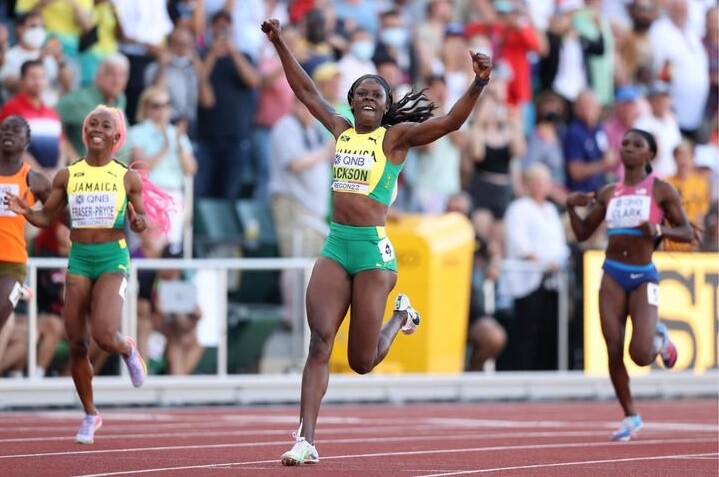
Newly-crowned 100m gold medalist Fraser-Pryce took silver in 21.81sec, with defending champion Dina Asher-Smith of Britain claiming bronze (22.02).
All eyes had been on Fraser-Pryce, sporting a long mane of dyed purple hair, in her bid for a second sprint double after having achieved the feat at the 2013 Moscow worlds.
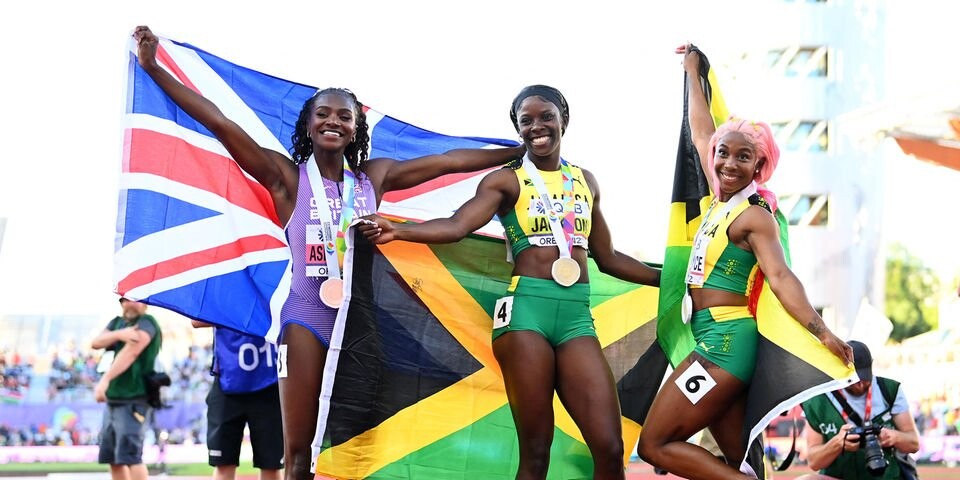
Fast out of the blocks in lane six, Fraser-Pryce rocketed past Niger's Aminatou Seyni in no time, running a great bend to hit the back stretch neck-and-neck with Jackson, in four.
As the two Jamaicans went head-to-head, Jackson put on the afterburners and pulled away in impressive style, not giving up until she thundered through the line.
Fraser-Pryce swept through on her coattails, with Asher-Smith holding off Seyni for bronze.
Olympic champion Elaine Thompson-Herah, the third part of Jamaica's cleansweep of the 100m along with Fraser-Pryce and Jackson, eventually came in seventh in 22.39sec.
(07/22/2022) ⚡AMPWorld Athletics Championships Budapest23
Budapest is a true capital of sports, which is one of the reasons why the World Athletics Championships Budapest 2023 is in the right place here. Here are some of the most important world athletics events and venues where we have witnessed moments of sporting history. Throughout the 125-year history of Hungarian athletics, the country and Budapest have hosted numerous...
more...Knee stretches for runners and the most simple ways to prevent knee pain from running
With plenty of apps to help you keep the pace, running’s convenience and natural form makes it an easy sport to pick up. But forgetting to stretch can turn this exercise into an inconvenient experience. Studies estimateTrusted Source that up to 70 percent of runners injure themselves from overuse each year. Of those injuries, 50 percent happen at the knee.
One common condition is known as patellofemoral pain syndrome (PFPS), or runner’s knee. The name is a broad term used to describe pain in the front of your knee joint. It can be caused by injury to the tendons, fat pad, and cartilage on the underside of the knee cap. Runner’s knee isn’t the only injury that occurs at the knee from running.
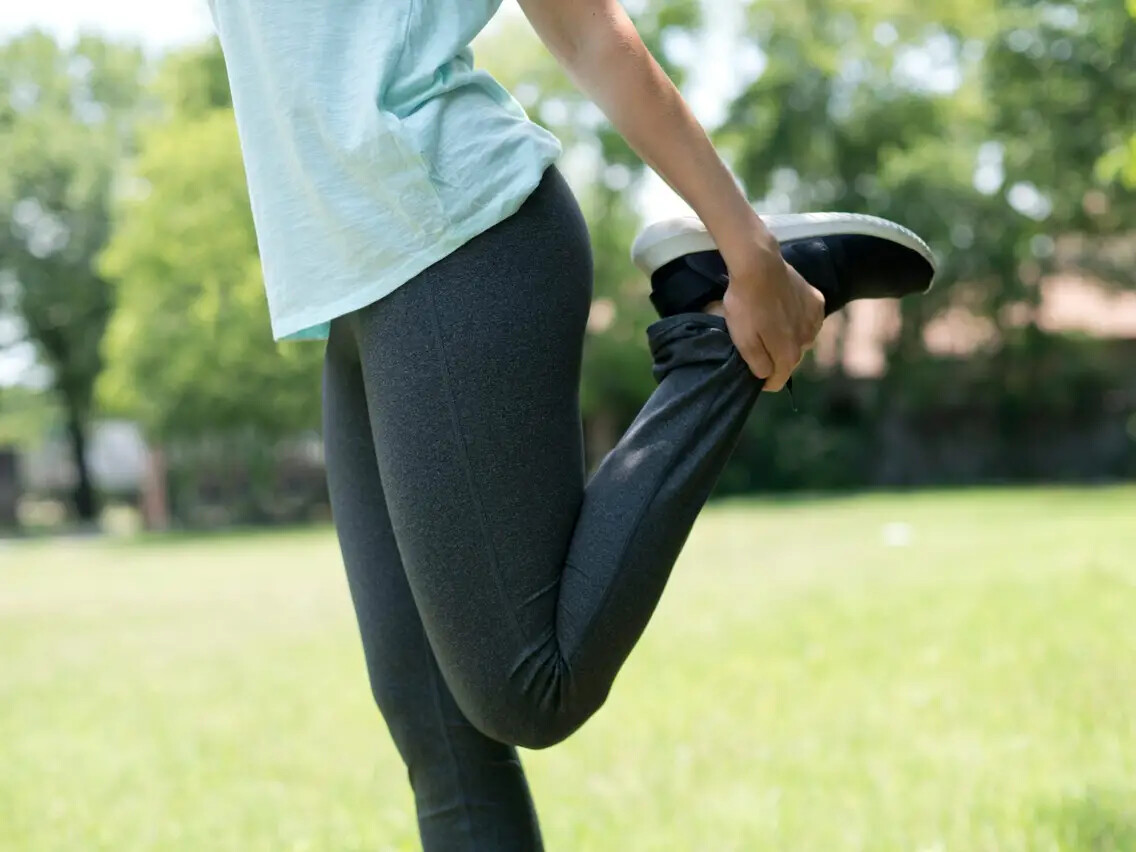
Research suggests that these injuries may be due to weak hip-stabilizing muscles which can place increased force below the knee. Timing can also increase your risk for knee injuries.
Stretching away from runner’s knee

To avoid being sidelined by knee pain, Deborah Lynn Irmas, a personal trainer based in Santa Monica, California, advises to warm up with a light jog before running. This helps your body ease into training.
Bring the same discipline from your workouts to your running routine. Stretch before and after you begin. Many health professionals recommend stretching to reduce the risk of injury.
Quads
The quadriceps are the muscles at the front of your thighs. Loosen your quads by:
While standing, hold on to a chair or wall.
Grab your ankle and pull it up behind you to your backside. Keep your knee pointing downward; don’t pull it to the side.
Hold the stretch for 15 to 30 seconds.
Repeat three times, and then switch to your other leg.
Beginners find it easier to do this quad stretch while lying on the floor.
Lie on the floor on your right side.
Grasp your left ankle, and pull it up to your backside.
Hold for 15 to 30 seconds.
Do this three times before repeating on the other side.
Hamstrings
Your hamstring muscles run down the back of your thigh. Pulled or sore hamstrings are common among runners, but you can sidestep injury with this preventive stretches:
Stand up or lie on your back.
Bend your right leg.
With your hands under your leg just above the knee, pull your left thigh toward you gently.
Hold for 15 to 30 seconds.
Reverse your legs and repeat.
Do each this three times per leg.
As you build strength and flexibility in your quads and hamstrings, you can do this stretch while keeping one leg straight on the floor and bending the other toward you, Irmas adds.
Squats
Squats help strengthen your hip muscles. Weak hip-stabilizing muscles can increase your risk for injuries.
Place your feet shoulder width apart.
Lower yourself by bending your knees to a slightly right angle. Make sure your back is straight and your buttocks are rounded inwards.
Don’t let your knees pass your toes.
Come up slowly and squeeze your buttocks at the end.
Do 3 sets of 10 repetitions.
Knee bends
Knees bends help strengthen the muscle around the knee for support. You can place a ball between your back and the wall for smoother movement.
Stand against wall with your feet about a foot away and your knees hip-width apart. Point your feet outwards.
Slide your back down slowly until your knees are bending slightly.
Focus on tensing your buttocks as you come up.
Perform 3 sets of 10 repetitions.
What else matters when you run?
Training suggestions
Too much running can cause strain to your knees. Even for long-time runners, the risk for injuries can increase when you run over 40 miles per week. Most people benefit from running no more than four or five days per week and resting for one day or doing other activities instead.
If you’re a beginner to running, remember to:
use a combination of running and walking
start with no more than 20 minutes of running per day
gradually increase the time you spend running, no more than 5 mins every 14 days
run every other day
Running downhill increases impact and injury risk.
Shoes and soles
There’s little evidence that shoes reduce your risk for injuries, but this study found that foot strike can increase your risk for repetitive stress injuries. People who frequently run with a rear-foot strike (hitting the ground with the back of their foot first) experienced 2.6 times more mild injuries and 2.4 more moderate injuries.
Be sure to get a shoe that fits properly. The three types of shoes for runners include a neutral foot shape, and low foot arch, or high foot arch.
Regardless of your shoe type, it’s recommended to change your running shoes every 350 to 500 miles.
After your run
After you run, Irmas advises doing three sets each of the quad and hamstring stretches on both legs. Keeping your quads and hamstrings stretched and strong will help your knees. Taking those few extra minutes to stretch while your muscles are still warm helps avoid post-run stiffness and pain in your back, hips, calves, and thighs.
If you already have knee pain, don’t try to run through it. “Knees are tricky,” Irmas says. “Stop everything, ice your knee, and take an anti-inflammatory.”
When the pain is gone, start stretching gently. If your knee continues to give you pangs, stay off it and check in with your doctor. Until the pain disappears, you can switch to an exercise that doesn’t stress your knees.
What should you do if you get injured?
Stop running whenever you feel pain or discomfort. To treat injuries, you can use the “RICE” method. This consists of:
Rest: Let the injury rest by avoiding exercise for at least 48 hours.
Ice: Apply an ice pack to the injured area for 20 minutes, four to eight times per day.
Compression: Use a cast, splint, or wraps to support the injury and reduce swelling.
Elevation: Lift the injury area above heart level to decrease swelling.
Always seek medical help if the pain persists for more than a few days.
(07/22/2022) ⚡AMPby Healthline
The Newport Marathon will not take place in 2022 due to a number of operational risks, but will return in 2023
The event was scheduled for Sunday, October 9, but that has now been shelved by organizers Run 4 Wales (R4W).
It will now return to its regular spring slot in the running calendar on Sunday, April 16, 2023.
"A return to the pre-pandemic date is in the best interests of both the participants and all key stakeholders," said R4W chief executive Matt Newman.

Runners already signed up for the event will be able to transfer into the rescheduled races free of charge or request a refund.
Newman offered his apologies and said he hoped people would understand the decision, which was made in consultation with Newport City Council and other key stakeholders.

"The new date will provide an opportunity to relaunch the event, remove a number of operational risks which arise from the late October date and ensure a high-quality event experience can be delivered," Newman said.
"Moving the event out of the congested autumn running calendar gives us the time and opportunity to work alongside Newport City Council and other potential partner organizations with a view to growing the event.
"We apologize to everyone who had signed up for the event and hope you understand that a return to the pre-pandemic date is in the best interests of both the participants and all key stakeholders."
Organizers said the decision had been taken as early as possible to give participants maximum notice before their training has commenced.
R4W and Newport City Council originally signed a three-year agreement for the event, which has grown in popularity and seen that original agreement extended.
That covered three races in 2018, 2019 and 2021, with the 2020 edition delayed a year due to the Covid-19 pandemic.
(07/22/2022) ⚡AMPThe Newport Marathon and Half Marathon
Whether you're an advanced runner looking to qualify for the Boston Marathon, or just looking for a scenic jog and walk, The Newport Marathon and Half Marathon promises a good time for participants of all speeds. The Newport Marathon is proud to partner with local charitable organizations to help raise money and awareness. Gray Matter Marketing will donate upwards of...
more...Noah Lyles storms to 200-meter gold at World Championships, leading U.S. sweep clocking the third fastest time ever
Thursday night was for the sprinters at the World Athletics Championships, as the men's and women's 200 meter finals took center stage in the only medal races of the session in Eugene, Oregon.
American Noah Lyles ran the third-fastest time in history and broke Michael Johnson's American record, crossing the line in 19.31 seconds and winning the men's race in dominant fashion. Not known for running a great curve, Lyles had a tremendous start and took all of the suspense out of the finish before it was halfway over.
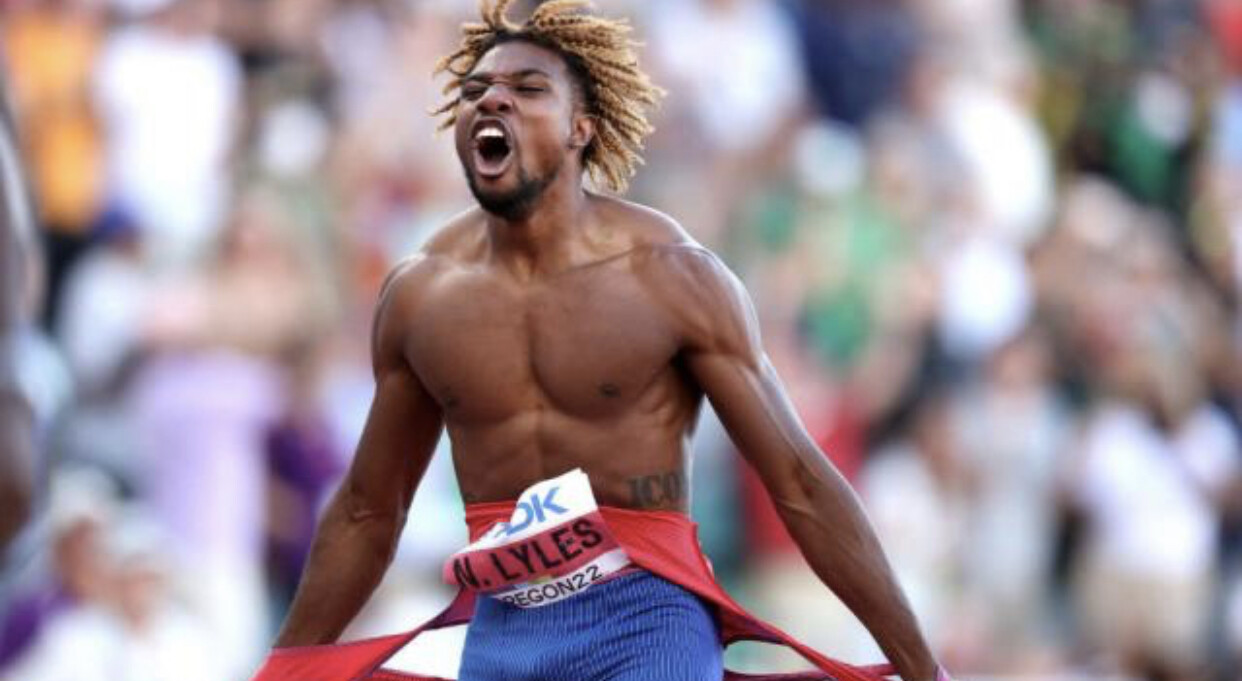
Just as they did in the 100 meters, the United States swept the medals in the 200: behind Lyles was Kenny Bednarek in 19.77 seconds, and 18-year-old sensation Erriyon Knighton in 19.80 seconds.
The 25-year-old Lyles was the defending World champion but at the Tokyo Olympics last summer was disappointed to finish as bronze medalist; he has since revealed that he ran with a swelling in his knee, bad enough to affect him but not so bad that he couldn't race.
A Virginia native — he and his brother Josephus starred at T.C. Williams High, immortalized in "Remember the Titans" — Lyles is beloved for his playful spirit and candor. After the medal ceremony he joyously jumped on the back of the Championships. Fluffy yellow mascot, Legend, and got a piggy-back for a few seconds, jumping off and immediately going to the stands for autographs and selfies. Lyles' long coils are currently dyed a light brown, but in the past he's colored it silver, an homage to Goku of "Dragon Ball Z," and he's always open about his mental health journey.
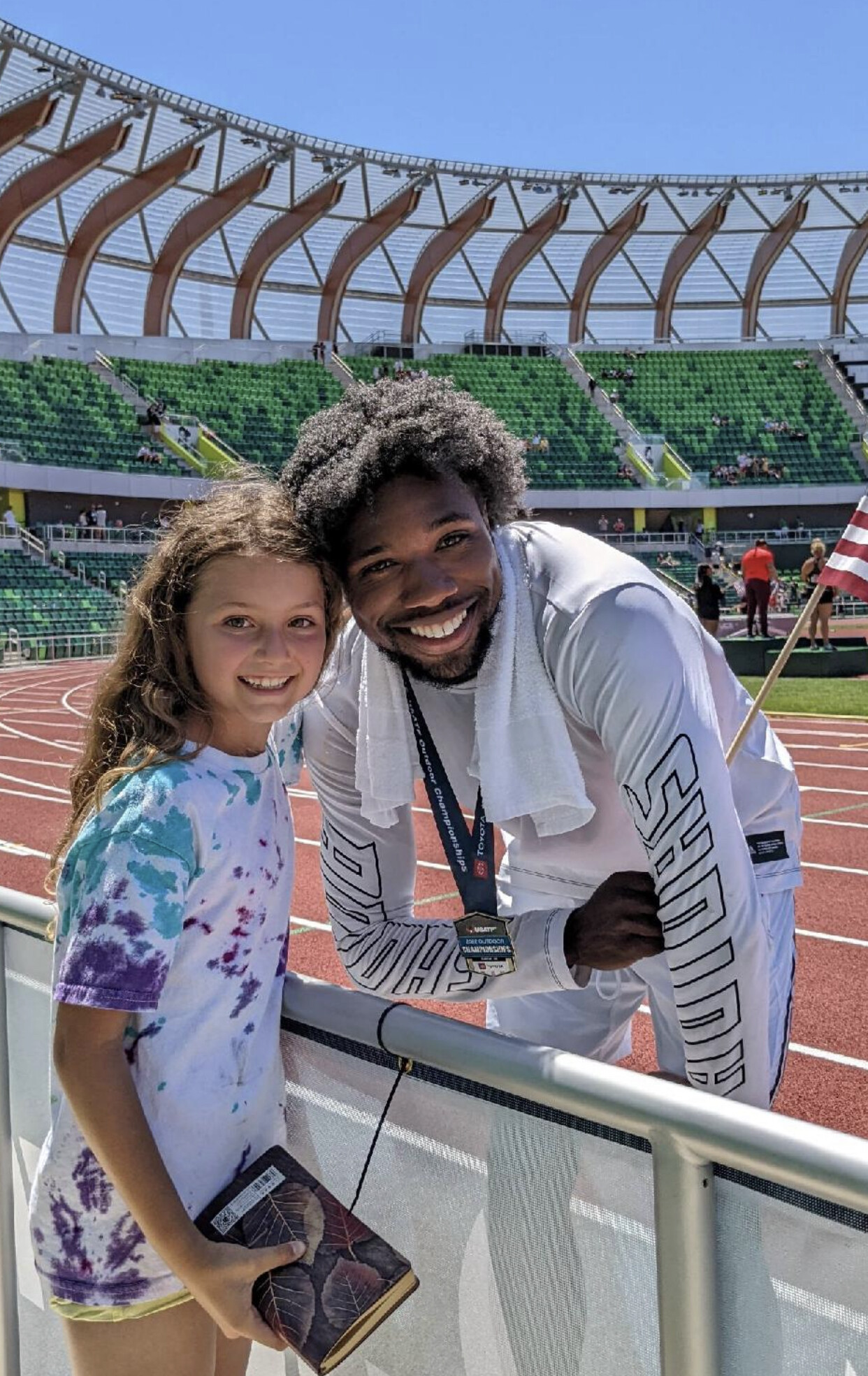
Bednarek, who is 23, matched the silver he'd won in Tokyo in the 200, while Knighton became the youngest man to win a sprint medal in Worlds history.
After a poor showing from the American men at the Olympics last summer when they only won two gold medals — in shot put and the 4x400m relay — they have certainly bounced back this year at Worlds; Lyles' win is the fourth gold for the U.S. men, with a strong chance for three more in the closing days of the meet.
The thrilling men's race matched the women's race, which had been contested just minutes earlier.
Jamaica's women again asserted their short-distance dominance, with Shericka Jackson winning gold in a stunning 21.45 seconds and Shelly-Ann Fraser-Pryce silver in 21.81 in the women's 200; Great Britain's Dina Asher-Smith, the defending champion, ran to bronze in 22.02.
Jackson's time makes her the fastest living woman on Earth — only the late Florence Griffith-Joyner, who ran a 21.34 in 1988, has ever run faster.
Fraser-Pryce, as is her way, was stellar out of the blocks but couldn't sustain it; Jackson passed her with around 90 meters to go and just kept pulling away, her arms driving her to the finish line. A veteran of several global championship meets, Jackson has multiple 400-meter bronze medals, from the 2015 and 2019 World Championships and the 2016 Rio Olympics as well as relay golds, but has since dropped down to the 200 and 100.
Earlier this week, she won silver in the 100m behind Fraser-Pryce, but Thursday was finally her night to get an individual gold.
(Third photo taken by Jivko at the USATF National Championships.)
(07/21/2022) ⚡AMPby Shalise Manza Young
World Athletics Championships Budapest23
Budapest is a true capital of sports, which is one of the reasons why the World Athletics Championships Budapest 2023 is in the right place here. Here are some of the most important world athletics events and venues where we have witnessed moments of sporting history. Throughout the 125-year history of Hungarian athletics, the country and Budapest have hosted numerous...
more...Caster Semenya unnoticed at World Championships The South African Olympic champion fails to advance in the 5,000 meters in Oregon – her first major international competition since 2017
How many times had South Africa’s Caster Semenya charged onto the Hayward Field homestretch seemingly in a different race than the rest of the pack, the sport’s most storied stadium rocking as Semenya raced into the deafening roar?
How many times had American track and field’s most knowledgeable fans, most passionate crowd stood in appreciation of the two-time Olympic, three-time World 800-meter champion?
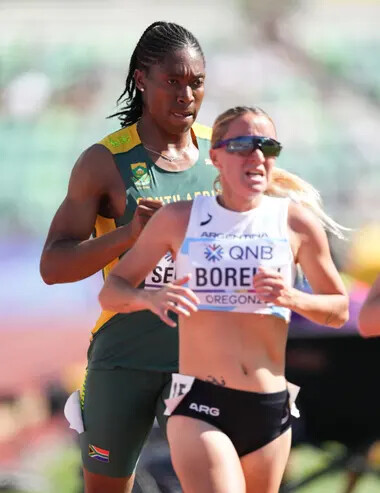
On a scalding hot afternoon at the World Championships on Wednesday, Semenya labored through the final meters of her 5,000-meter heat in front of a half-empty stadium, largely ignored or unnoticed even in a place that calls itself Tracktown U.S.A.
Semenya, one of the most compelling and controversial athletes of her generation, has fallen so far off the sport’s radar since 2019 that the most well-known of her fellow competitors on Wednesday didn’t even realize she was in the competition.
“Caster?” asked Sifan Hassan, the Olympic 5,000 and 10,000 champion from the Netherlands, who ran in a later heat on Wednesday.
“Caster Semenya ran the 5,000?” Hassan asked again. “ I had no idea. I didn’t even know she was here. Did she make it?”
Semenya, running in her first major international competition since winning the 2017 Worlds 800 title, did not advance to the final, finishing 13th in her heat, running 15 minutes, 46.12 seconds, nearly a minute off the winning time of Gudaf Tsegay of Ethiopia (14:52.69).
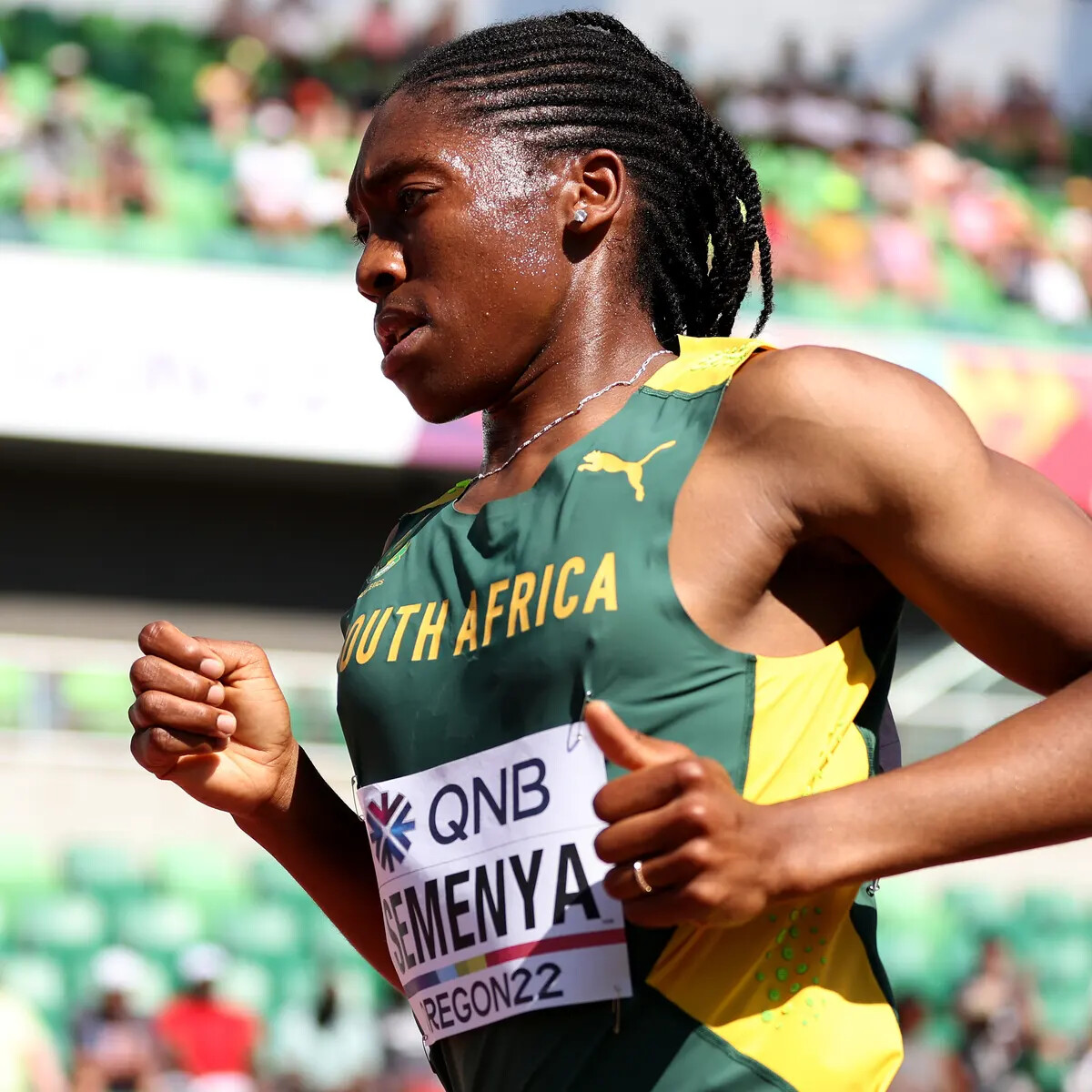
“Cooking,” Semenya said after the race, referring to the heat. She declined to answer reporters’ questions.
Under different circumstances, the sport would be obsessing over the prospect of a showdown between Semenya, 31, and Athing Mu, the 20-year-old Olympic champion from the U.S. in Sunday’s 800 final and whether the pair could challenge the world record of 1:53.28 that was set by Czechoslovakia’s Jarmila Kratochvilova in 1983.
Instead, Semenya, who was assigned female at birth, raised as a girl and identifies as a woman has not raced the 800 in meets sanctioned by World Athletics, the sport’s international governing body, because of her refusal to submit to the organization’s guidelines regarding intersex athletes.
Under the World Athletics guidelines athletes in events from the 400 to the mile – in other words, Semenya’s events – are required to take hormone suppressing drugs to reduce their testosterone to below 5 nanomoles per liter for at least six months before being allowed to compete internationally.
Semenya has an intersex condition called Differences in Sexual Development (DSD) or 46, XY that because of differences in sex development that causes male and female traits and a testosterone level higher than the typical female range. She is not transgender.
“I am a woman and I am a world-class athlete,” Semenya said in 2019, shortly before the Prefontaine Classic, her final 800. “The IAAF will not drug me or stop me from being who I am.”
Semenya had found herself unwittingly in the center of controversy almost from the moment she emerged on the world stage a decade earlier.
She won her first Worlds title in 2009 as an 18-year-old, a victory that prompted Russia’s Mariya Savinova to suggest the South African was a man.
“Just look at her,” Savinova said.
While the results of Semenya’s sex test were supposed to be confidential they were leaked to Australia’s Daily Telegraph. Semenya has internal testes but no ovaries or womb, the newspaper reported quoting the test report.
“She is a woman, but maybe not 100 percent,” IAAF secretary general Pierre Weiss said at the time, doing nothing to discourage the headline writers at New York’s Daily News who blared that the World champion “is a woman … and a man.”
Semenya began taking a hormone suppressant drug. She finished second to Savinova at both the 2011 Worlds and 2012 Olympics.
“The IAAF used me in the past as a human guinea pig to experiment with how the medication they required me to take would affect my testosterone levels,” she said in 2019. “Even though the hormonal drugs made me feel constantly sick the IAAF now wants to enforce even stricter thresholds with unknown health consequences.
“I will not allow the IAAF to use me and my body again. But I am concerned that other female athletes will feel compelled to let the IAAF drug them and test the effectiveness and negative health effects of different hormonal drugs. This cannot be allowed to happen.”
Semenya was awarded the 2012 Olympic gold medal in 2017, two years after the World Anti-Doping Agency recommended that Savinova receive a lifetime ban for doping and her results dating to July 2010 be disqualified.
Given the event’s suspect history, the irony of World Athletics now demanding she dope to level the playing field is not lost on Semenya.
“I’m not going to do that,” she told the Orange County Register after the 2019 Prefontaine meet. “I’m a very clean athlete. I believe in the clean sport. I believe in the equal opportunities. At the end of the day, this is a woman’s sport, this is a man’s sport. If they’re going come (at) me with that nonsense then why do you lead?”
Semenya challenged World Athletics guidelines with the Court of Arbitration for Sport. A three-member CAS panel in June 2019 said the World Athletics policy was “discriminatory” toward athletes with DSD but two of the panel members, nevertheless agreed with the World Athletics that policy was “necessary, reasonable and proportionate” to counter advantages DSD athletes have over other female competitors. Semenya and other female athletes with DSD should be considered “biological males” World Athletics told CAS.
Switzerland’s Supreme Court rejected Semenya’s appeal in September 2020. She filed an appeal with the European Court of Human Rights in February 2021.
While Semenya fell short in her bid to reach the Olympic 200-meter qualifying standard last year, the success of other intersex athletes has raised further questions about the World Athletics policy.
(07/21/2022) ⚡AMPby Scott Reid
World Athletics Championships Budapest23
Budapest is a true capital of sports, which is one of the reasons why the World Athletics Championships Budapest 2023 is in the right place here. Here are some of the most important world athletics events and venues where we have witnessed moments of sporting history. Throughout the 125-year history of Hungarian athletics, the country and Budapest have hosted numerous...
more...Kenyan-born Jeruto wins steeplechase gold, Chespol struggles
Kenyan-born Kazakhstan Norah Jeruto staged a brilliant performance to win the women's 3,000 meters steeplechase final in the World Championships in Oregon, United States early Thursday morning.
Kenyan-born Bahrain star Wilfred Mutile Yavi appeared set to challenge Jeruto for the gold, but stumbled on the last water jump, allowing the Ethiopians to pass her.
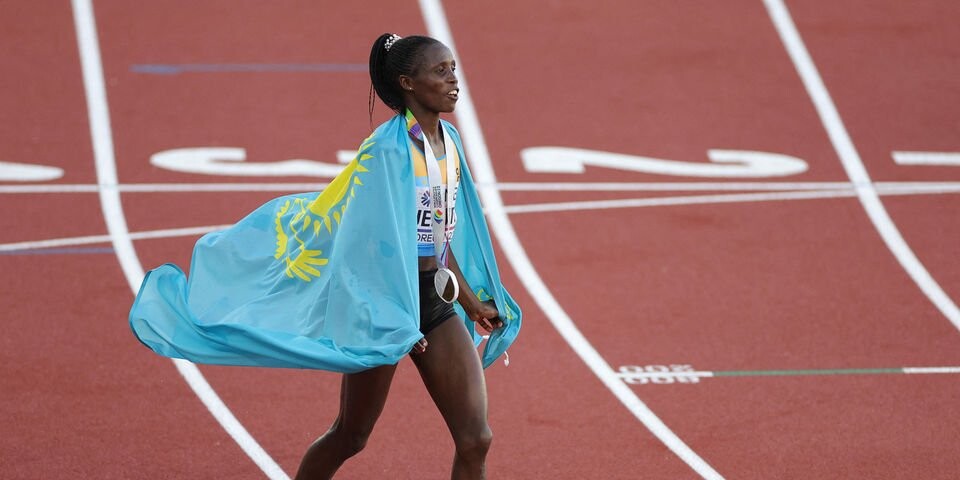
Jeruto's victory means Kenya has lost another world title from 2019 Doha.
After leading for most part of the race, Yavi stormed to the lead after the bell but Jeruto would reclaim the lead immediately, tackling the last water barrier majestically to win in eight minutes and 53.02 seconds.
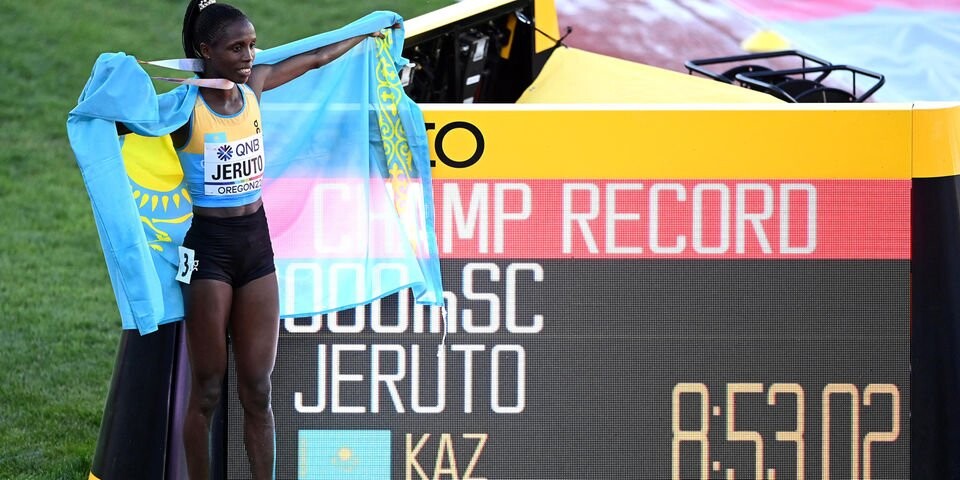
Jeruto, who failed to compete at the Tokyo Olympic Games last year as she was still chasing transfer of her allegiance, obliterated Kenya’s Beatrice Chepkoech’s CR from the previous 2019 Doha event by five seconds.
Yavi’s last water jump proved awful to cost her a medal as Ethiopians Getachew and Abebe zoomed past her to settle for silver and bronze.
Getachew came second in a National Record of 8:54.61 as Abebe cracked a personal best of 8:56.08.
Yavi, who was the fastest in the field, came fourth in 9:01.31 as Kenya’s Celliphine Chespol settled a distant 13th in 9:27.34.
It was the fourth title Kenya was losing from its tally in 2019 Doha after the women's marathon, men's 1,500m and men's 3,000m steeplechase.
The only title Kenya managed to defend her title is women's 1,500m by Faith Chepng'etich.
(07/21/2022) ⚡AMP
by Ayumba Ayodi
World Athletics Championships Budapest23
Budapest is a true capital of sports, which is one of the reasons why the World Athletics Championships Budapest 2023 is in the right place here. Here are some of the most important world athletics events and venues where we have witnessed moments of sporting history. Throughout the 125-year history of Hungarian athletics, the country and Budapest have hosted numerous...
more...What does strength mean in distance running?
If you have ever watched a distance track event or marathon, you’ve probably heard an announcer mention a runner’s strength. We can see a sprinter’s strength in their muscle size and explosive power–but what does strength refer to when we’re talking about distance runners, who are typically longer and leaner?
Simply by looking at Jamaican sprinter Shelly-Ann Fraser-Pryce, five-time world champion, we can see strength embodied. Distance runners, who are often leaner and less obviously muscular than sprinters, also get called strong, but it’s less obvious what observers are referring to.
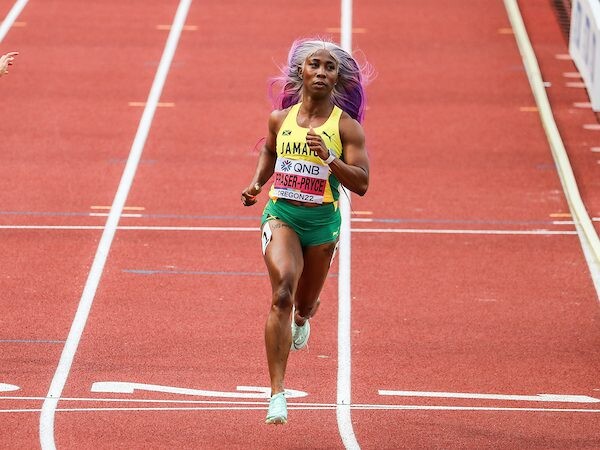
Canadian half-marathon record holder Rory Linkletter, whose body is trained to carry him at a fast pace (but not a sprint) over many kilometers, is clearly a very different type of strong than Fraser-Pryce. It can be hard to determine what the word “strength” is meant to encompass when it’s used to refer to athletes like Linkletter, or Cam Levins, who broke his own Canadian record in the marathon on Sunday morning.
We asked commentator and writer Cathal Dennehy, whose distinctive voice you may have heard broadcasting many an exciting track event. “For distance runners, the term strength has little to do with muscle strength but everything to do with endurance and how effective they are at running distances above their race distance,” Dennehy explained. “It’s the ability to maintain pace and, specifically, the ability to put rounds back to back and repeat their optimal performance day after day–a key component of success at championships.”
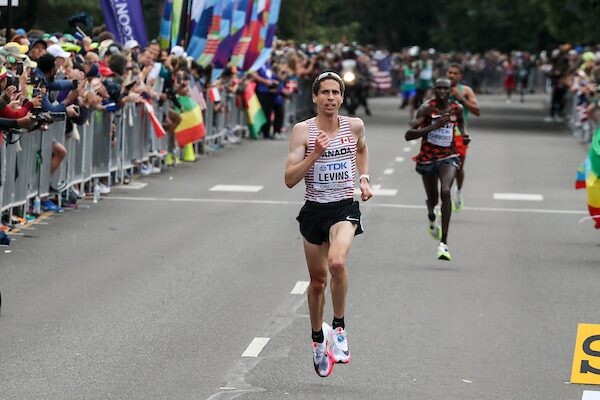
For distance and middle-distance athletes, the term strength has far more to do with consistently running at top paces over long periods of time. Stamina, often used interchangeably with endurance, is that ability. While athletes who run everything from the 1,500 meters to the marathon may not be touted as endurance athletes, it’s stamina, or endurance that they are using as they log fast miles, over and over.
To work on your own strength (or speed endurance) as a distance runner, try incorporating fast-finish long runs into your training: run the last, shorter portion of your long run at a slightly faster pace than the rest of the run. If you’re an experienced runner, try back-to-back workouts to finesse your ability to run hard and long.
(07/21/2022) ⚡AMPby Keeley Milne
100-Year-Old Marathon Runner Shares His Secret To Longevity
100-year-old marathon runner, Mike Fremont, set the fastest time for a marathon ever finished by a 91-year-old. He recently shared what he believes to be his secret to longevity in a podcast with Rich Roll.
“These, believe it or not, are the best years of my life.” You might not expect to hear that phrase out of the mouth of a centenarian, but that’s exactly what marathon runner Mike Fremont recently told author and podcaster Rich Roll.

Fremont, who was diagnosed with colorectal cancer at the age of 69, and reportedly given three months to live, turned to a plant-based diet in an attempt to help shrink the cancer. According to Runner’s World, Fremont reckons he shrunk the tumour with his new diet, before having surgery in 1994 to remove what was left of it.
“The tumor shrank over the next two years and finally I killed it by diet alone,” Fremont said, according to Runner’s World.
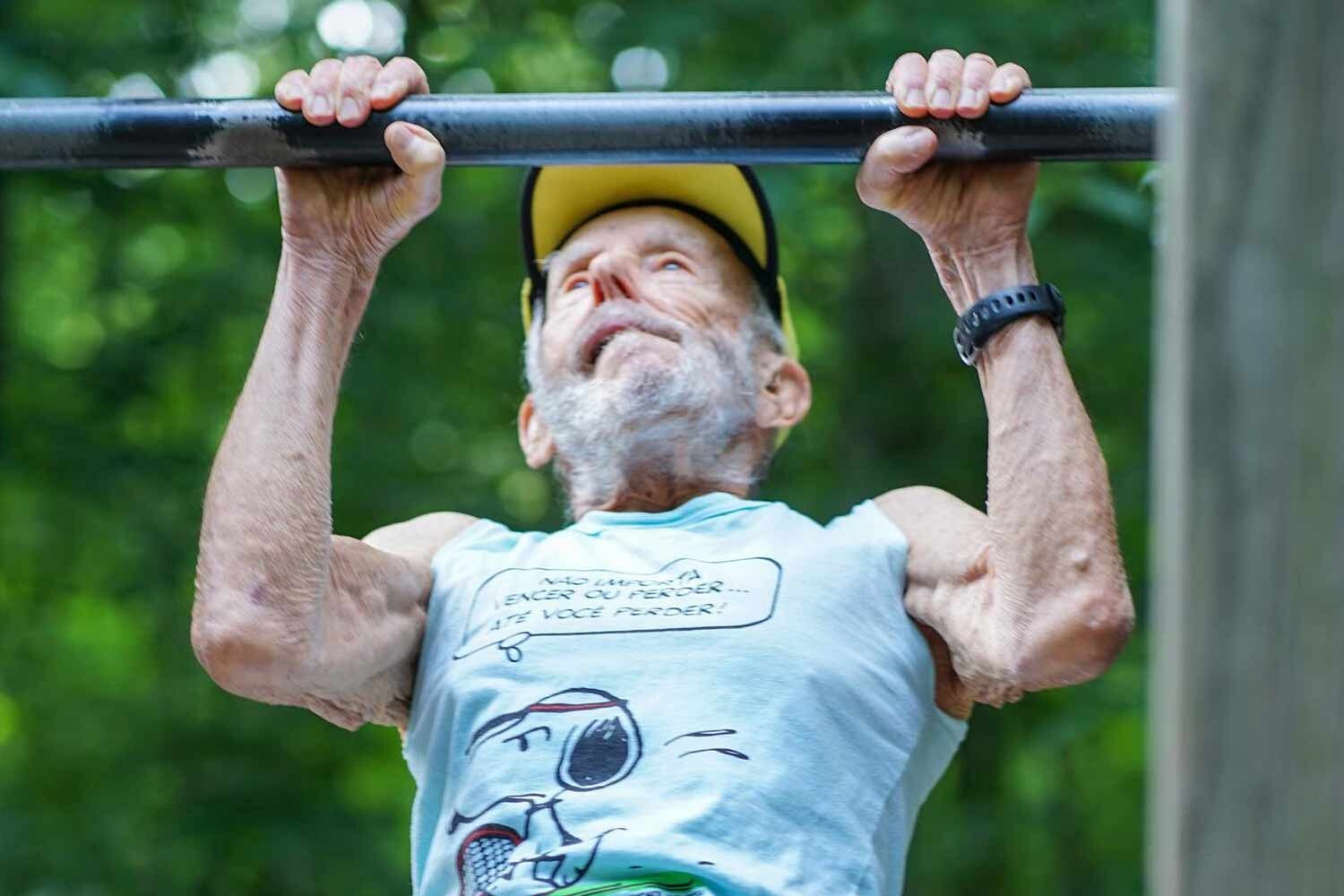
Speaking to Rich Roll in a video recently posted to Instagram, Fremont says: “No question in my mind – it is diet that has determined my existence, my continual existence and my beautiful health.”
He added: “I don’t think I ever became competitive until I was 88. For my age, I’m practically number 1.”
Fremont’s elite ultramarathoner buddy Harvey Lewis has also posted about the amazing 100-year-old recently, sharing some interesting insights. He posted a photo of Fremont doing pull ups with the caption: “5 miles with my 100 year young friend Mike Fremont. Mike also did 10 pull-ups at one go!”
“Mike’s mindset is strong. He fell this past spring in Florida and hurt his hip. He was reduced to a wheel chair for a month. That was really tough especially for Mike whose always on the go. When he restarted he could only do 1 pull up. Mike credited his Plant Based nutrition with his speedy recovery even as a centenarian in getting back his distance and reps of pull-ups.”
What does Fremont’s diet look like? As he once claimed, according to Runner’s World in 2013: “No meat, no dairy products, no toxins.” Fremont’s diet mainly comprises veggies, fruit, whole grains, nuts and soups, plus a bit of vitamin D in winter. In that same 2013 article, Fremont said since he started eating this way he hasn’t had a cold and maintains the same weight as his university wrestling years.
(07/21/2022) ⚡AMPby James Booth
These back-to-back sessions (a.k.a. doubles) will make you powerful, take your running to the next level with this training technique
Back-to-back sessions (also known as doubling) can be the tool that elevates your running from good to great, increasing endurance and overall fitness; but they have an appropriate time and place for every runner. Most athletes follow the general rule of completing easy runs most days in order to develop a strong aerobic base and to avoid injury.
A couple of runs per week are fast or long, to improve speed and endurance, with hard days followed by rest or easy runs. The double is the exception: two stacked workouts, either on subsequent days or spaced out on the same day.
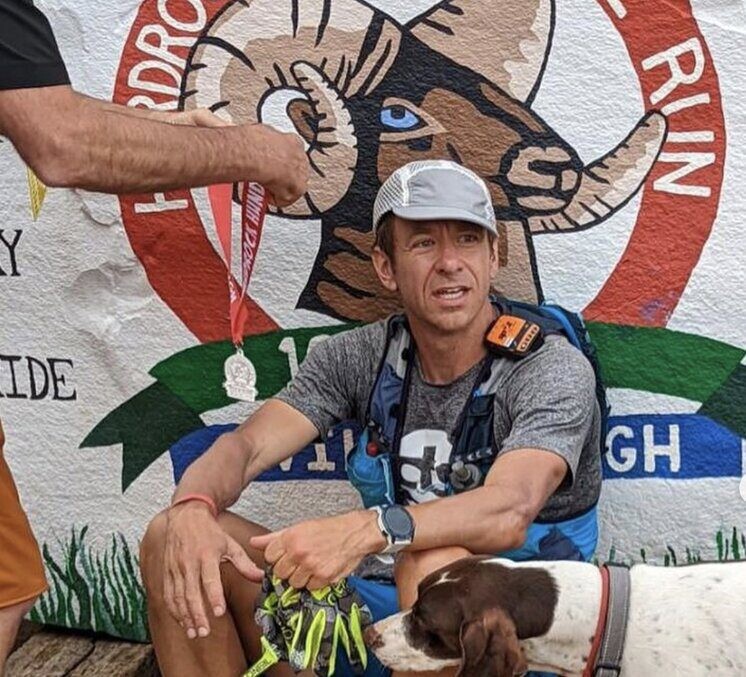
This training method has made headlines recently due to its popularity among Norwegian pros like Jakob Ingebrigtsen, but has been used by athletes and coaches, like the well known Jason Koop, for years. Back-to-back sessions add extra stress, causing your body to respond to new stimuli, rebound and become stronger. If you’ve been running consistently for at least a year and you’re struggling to improve, back-to-back sessions may be just the thing your body needs.
Here are a couple of back-to-back sessions to try. If you’re not under the supervision of a coach, stick to running your double workouts on subsequent days: the stress load of two challenging workouts in a single day carries too much injury risk for most recreational runners.
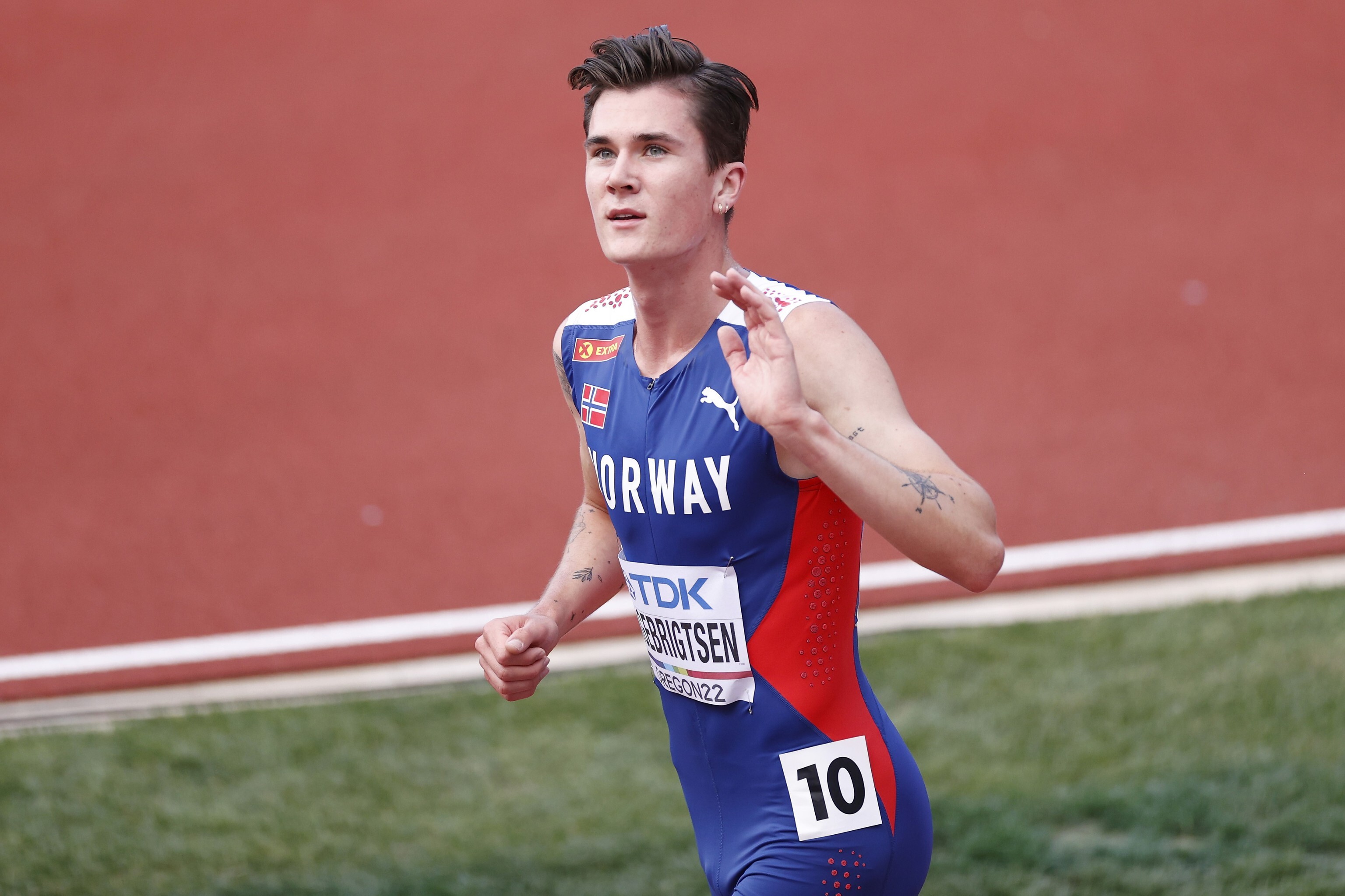
Short and fast
For newer runners, this one can be a challenge, but the workouts can be modified for ability, and the benefits will pay off. There’s a lot of fitness involved in maintaining higher speeds on subsequent days, so running one slightly faster interval session followed by a still tough but slightly less intense tempo session is ideal.
Try it: hit the track for some intervals the first day. 5-8 x 800m at 10K pace, with a short and easy warmup and cooldown, is perfect. If you’re new to this, tweak it by running fewer intervals.
Follow that session with a fartlek workout on the second day, running two sets of 1-2-3 minutes at 5K pace, with an easy warmup and cooldown. Fartlek is a Swedish word that translates to speed play, and simply means workouts involving changes in speed and effort.
Long and longer
If you’re training for a half-marathon, marathon or ultra, your long runs are probably adding up to a fair bit of mileage. Take this a step further by stacking two long runs.
Try it: follow up your longest run of the week (25-32K) with a medium-long run (15-20K) at a slow, easy pace the next day.
If you are training for a shorter race, you probably still have one day of the week where you fit in a longer run; simply adjust the distances of your two long runs to reflect the distances you’re working with.
Make recovery a priority
Trying new and challenging things in training will also require you to level up your recovery game: make sure you follow these workouts with two rest or easy running days. Fuel and hydrate lots between and after workouts to help your body recover.
(07/21/2022) ⚡AMPby Keeley Milne
Britain’s Jake Wightman stunned the Olympic champion, the defending world champion and himself at the World Athletics Championships Oregon22 running the race of his life to take the 1500m title
Britain’s Jake Wightman stunned the world on Tuesday night. Winding up to a world-leading PB of 3:29.23, the 28-year-old European and Commonwealth bronze medallist left Jakob Ingebrigtsen with no response as he surged down the home straight, eyes fixed firmly ahead. As the finish line neared, the Briton first raised his arms wide and then threw his hands to his head in disbelief, Norway’s Olympic champion Ingebrigtsen following him home in 3:29.47 and Spain’s Mohamed Katir coming through for bronze in 3:29.90.
“That’s my son,” came the voice over the loudspeaker, the race having been called by in-stadium announcer Geoff Wightman – father and coach of the winner, “and he’s the world champion.”
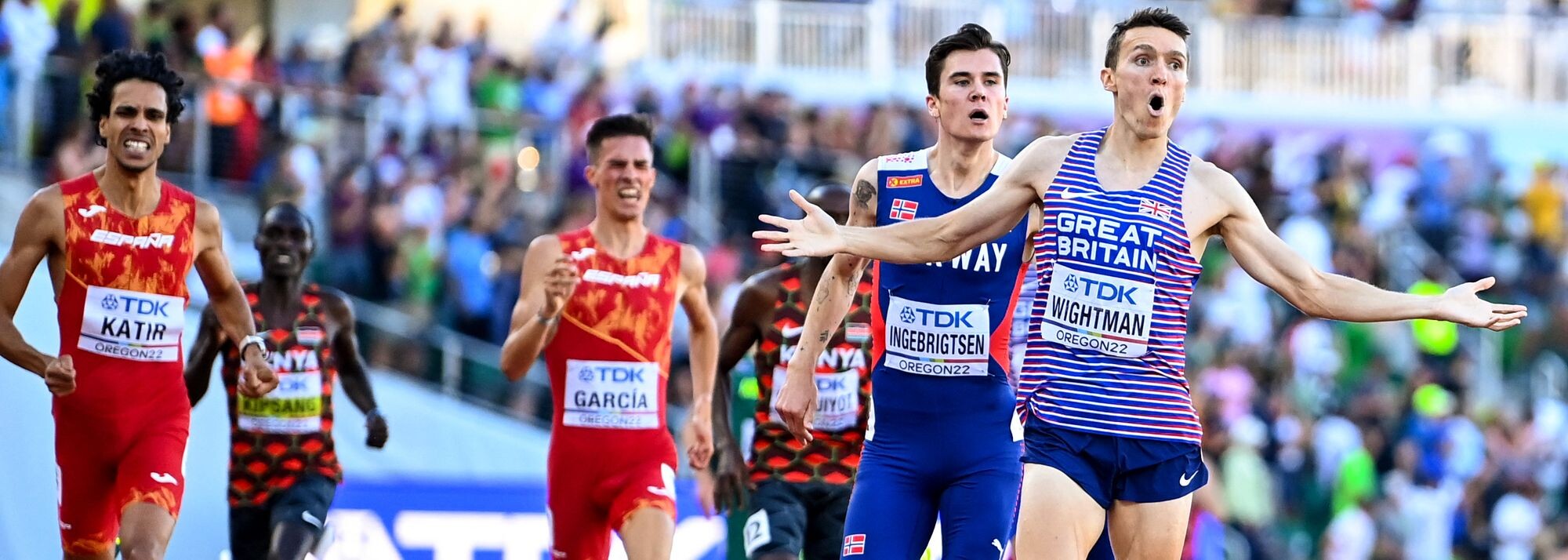
Left disappointed after a 10th-place finish at the Olympic Games in Tokyo, Jake Wightman went back to work. He focused on building his strength over the winter, returning to some cross country racing and doing over-distance work as he refocused on Oregon.
Achieving his aim of staying under the radar through the rounds, he took his place on the Hayward Field start line with Ingebrigtsen to his left and Katir to his right. Kenya’s Abel Kipsang, who had the season’s quickest time going into the race, went straight to the front and led from Ingebrigtsen and Kenya’s defending champion Timothy Cheruiyot, with Wightman sitting in behind them. Ingebrigtsen, who broke the world indoor 1500m record with 3:30.60 in February, moved to the front with two laps to go, with Kipsang and Cheruiyot on his shoulder and Wightman tracking their every move.
At the bell it was Ingebrigtsen, Cheruiyot and Wightman, with Kipsang running wide on his shoulder. Judging the race to perfection, the Briton first surged past Cheruiyot, moving into the lead ahead of Ingebrigtsen with just over 200m to go.
As he left the bend, the anticipated kick from Ingebrigtsen never came. Glancing over his shoulder, the Norwegian looked like he knew he was beaten and settled for silver, followed by Katir and his Spanish teammate Mario Garcia, running a PB of 3:30.20 for fourth.
Wightman’s British compatriot Josh Kerr – the Olympic 1500m bronze medallist – finished fifth in 3:30.60, just ahead of Cheruiyot (3:30.69) and Kipsang (3:31.21).
“It probably won’t sink in until I have retired,” said Wightman, who has run 1:44.18 for 800m and clocked a 3000m PB of 7:37.81 indoors in February. “It’s mad. I had such a disappointing year in Tokyo last year. I don’t think people realise how crushing it was to go in with such high expectations and come away hoping for a medal but ending up 10th.”
His parents – both former elite marathon runners – were at Hayward Field to see him win, his father on the commentary mic and his mother, Susan, in the stands.

“Dad can be a bit of a robot on the mic sometimes,” smiled Wightman junior, whose time in Oregon is the third-quickest in World Championships history. “Some say robot, some say professional. I hope he broke that down today. My mum was in tears, so someone was crying.”
Reflecting on the race, he added: “The strength for me is that if I can get there with 200m to go, I will always make a move because it’s how I feel best running. As soon as the opportunity was there to go past, I just wanted to be leading the bend. The only perk of having a good 800m PB in races like that is if you are still there with 200m to go, which I haven’t managed to be in previous years.
“Even when I was coming down the home straight I felt strong, but Jakob is a beast and I never knew if he was going to come past.”
But he didn’t. Wightman's last lap was timed at 54.84, Ingebrigtsen’s was 55.24. In Tokyo, the Norwegian clocked 54.42 for the final 400m.
“I was feeling good, but I couldn't keep up with Jake in the last 200m,” said Ingebrigtsen. “I'm owning it. I am very disappointed by not winning, but I'm very happy for him. He is a great runner.”
He will now refocus on the 5000m, the heats for which take place on Thursday.
It was the 5000m that Katir contested at last year’s Olympics, the 24-year-old finishing eighth, but after setting national records at 1500m, 3000m, 5000m and 10km last year his decision to race the shorter event in Oregon paid off as he bagged the bronze with his second-fastest ever time.
Just behind him was European U23 silver medallist and NCAA runner-up Garcia, who runs for the University of Mississippi and achieved the fastest ever time by a collegiate athlete.
Cheruiyot has been some way off his best form this season and although making his presence felt in the early stages, he didn’t have the strength in the finish and faded out of medal contention.
Ethiopia’s Samuel Tefera won the world indoor title ahead of Ingebrigtsen and Kipsang in Belgrade in March but finished ninth in his semifinal in Oregon, missing out on the final.
(07/20/2022) ⚡AMPby World Athletics
World Athletics Championships Budapest23
Budapest is a true capital of sports, which is one of the reasons why the World Athletics Championships Budapest 2023 is in the right place here. Here are some of the most important world athletics events and venues where we have witnessed moments of sporting history. Throughout the 125-year history of Hungarian athletics, the country and Budapest have hosted numerous...
more...Seven reasons why you should start your day with a run
As we enter a new season, the long-awaited arrival of summer. Here are seven reasons why you should begin your day with an early morning run this summer.
1. Start your day off right with a dose of endorphins:

In light of mental health awareness, self-care, and the stress of a g0, go, go society, a short 20-30 minute run stimulates the release of serotonin, a powerful endorphin. This endorphin is responsible for mood. Lower levels are linked to depression, while the running, a common form of exercise, is a strong stimulant of serotonin. Even being used in some cases as therapy to help treat depression.
2. Running fasted:

The idea of waking up and going for a run before breakfast may seem daunting, yet it can have real health benefits. With little to no available glucose to produce energy, the body has to turn to fat oxidation to produce energy for the muscles. All fat oxidation is, is a fancy way of saying the body is going to breakdown fat in order to get energy. So, by going for a run before breakfast you are helping control your body weight by kickstarting your metabolism.
3. Time effective:
Simply put, by waking up a bit earlier in the morning you are able to fit in that run session for the day. All without the stress of trying to fit in a run after work.
4. Quiet before the storm:
It’s quiet when you’re outside on the streets at 6 am. There is no pedestrian or vehicle traffic. You can hear yourself think. You have the time and space, just to be.
5. Nature and wildlife:
Without the hustle and bustle of traffic, and people going a million different directions you are able to enjoy nature. Whether it’s around your local pond or you are able to hit the trails. The morning is the perfect time to spend time in nature before going off to work.
6. Temperature:
It’s summer, and the days are now getting significantly hotter. Beat the heat by going out in the early morning! It’s a great way to fit in a hard workout without coming home absolutely drenched from a run in 25C plus heat.
7. A feeling of accomplishment:
You did it! No matter what the day throws at you, you accomplished something this morning that is good for your physically, mentally and psychologically.
Having said all that, getting up and going some form for physical activity is always good. What you do in the morning sets the tone for the rest of your day.
(07/20/2022) ⚡AMPby Cam Mitchell
Brazil's Dos Santos wins world 400m hurdles as Warholm wilts
Brazil's Alison Dos Santos ran the third fastest time of all time to win the world 400m hurdles on Tuesday as Norwegian prodigy Karsten Warholm wilted at Hayward Field.
Dos Santos clocked a championship record of 46.29 seconds, finishing ahead of Americans Rai Benjamin and Trevor Bassitt, who finished in 46.89 and 47.39sec respectively.
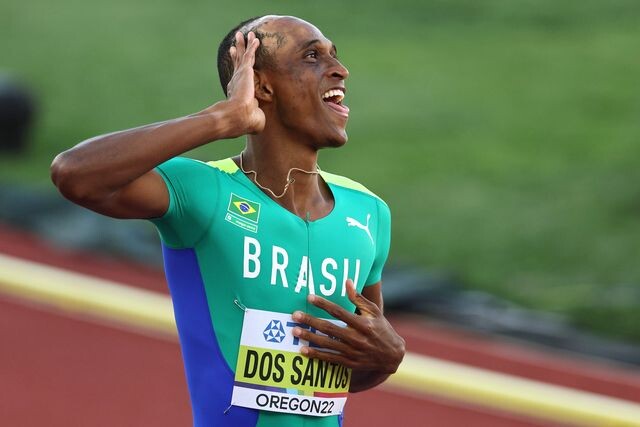
Olympic champion and world record holder Warholm led coming into the home straight but seized up badly and eventually came in seventh (48.42).
Warholm last lost a 400m hurdles race in September 2018 in Ostrava, Czech Republic.
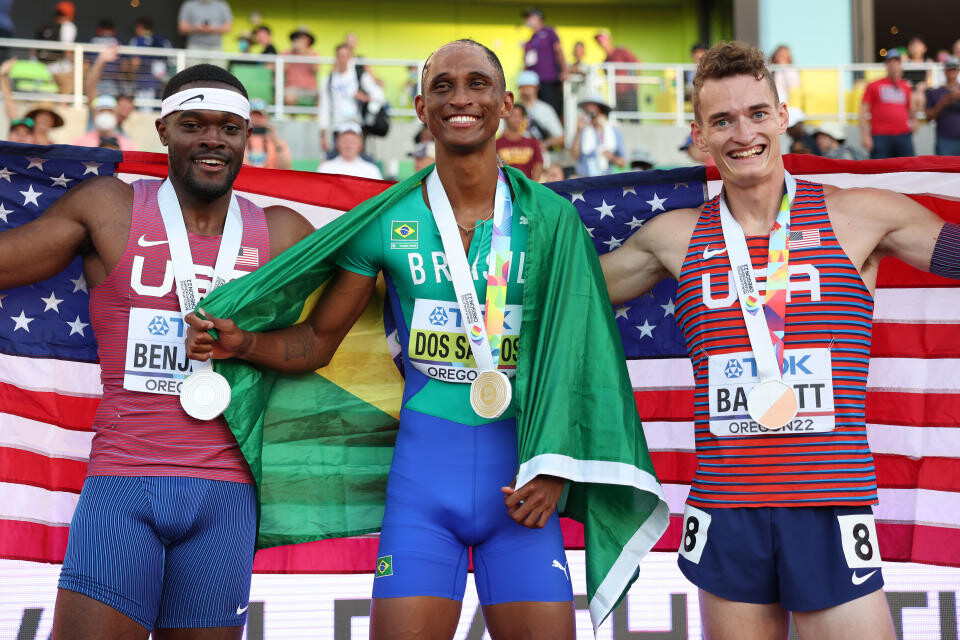
Since then, he had notched up a winning streak of 18 races and another four qualifying races in the 2019 world championships and 2021 Tokyo Olympics.
Warholm laid down a performance that is widely considered one of the greatest Olympic track performances of all time when he smashed the 29-year-old world record to win the 400m hurdles at the Tokyo Games in a time of 45.94sec.
But the 26-year-old pulled up injured at the Diamond League meet in Rabat in early June with a "muscle fiber tear" in a hamstring and although insisting he was at 100% going into the race, he missed his usual gas over the final 80 meters.
(07/20/2022) ⚡AMPWorld Athletics Championships Budapest23
Budapest is a true capital of sports, which is one of the reasons why the World Athletics Championships Budapest 2023 is in the right place here. Here are some of the most important world athletics events and venues where we have witnessed moments of sporting history. Throughout the 125-year history of Hungarian athletics, the country and Budapest have hosted numerous...
more...Banish black toenails with these tips
If you’ve ever lost a toenail, had people look at your bare feet and visibly flinch, or struggle with keeping your feet healthy and smooth during peak training months, consider yourself a runner. Most of us have dealt with a foot issue, especially during high-volume training periods. Foot problems can be painful: I’ve heard several of the toughest ultrarunners I know actually scream when they had a blister treated.
Legendary ultrarunner Krissy Moehl (who has certainly spent some time on her feet), sums up the importance of foot care in her book Running Your First Ultra. She writes: “our feet start the chain and are the most important link is successful training and racing. From the skin to the ligaments, it’s important to give our feet detailed attention.” Here, we give you some tips to keep those feet healthy and strong all summer.

Make sure your shoes fit, and get rid of old shoes
It’s important to buy your running shoes at a store that specializes in running. The staff there will often have you put the shoes on and run in them to assess what type of shoe might be best for you, and they can properly measure you to see what size shoes you need. If you’re consistently having foot problems, it may simply be a shoe-size issue.

Moehl suggests lacing up the shoe as you would to run, and bending and flexing your foot through heel-strike and toe-off. Notice if there is any stitching inside the shoe or spots that have the potential to rub on your foot. Once your shoes are old and visibly worn out, stop wearing them, even around the house. Foot size changes over time and shoes actually shrink, so it’s worthwhile to visit a running store and speak to the experts. Running shoes can be expensive, so spend the time making a wise purchase.
Keep an eye on your toenails, and do at-home-pedicures to remove calluses
Ingrown toenails are a common foot problem for runners. Although they may seem like minor annoyances at first, an untreated ingrown toenail can become very painful and infected in a matter of a couple of days. You can often avoid painful ingrown or fungal toenails by keeping your nails short (but not too short), cutting them straight across, and then using a file to smooth out any sharp edges. If you have a black toenail, or your toenail starts to lift off, it can be tempting to pull the toenail right off; don’t. Pulling the nail off can cause your nailbed to tear, and your new toenail will grow in strangely. Let the nail fall off on its own, and the new one will emerge slowly.
Moehl is a firm believer in pedicures for everyone. “The soaking, scrubbing, de-callusing, moisturizing and massaging aspects of a pedicure are the most beneficial.” She adds: “Calluses are feedback relating to where the most stresses are being placed on your feet.” I had always leaned toward the belief that a callus on my foot was hard-earned, and protected my feet when I logged high mileage. When I entered a multi-day event that poured rain and soaked my feet continuously, I learned the hard way that calluses are also like sponges. The dead skin becomes saturated with water and takes days to dry out, and can cause further damage, including the dreaded foot maceration, often called trench foot. I can personally attest that running in such a condition felt like someone had scraped the bottoms of my feet off; I now make sure calluses are removed.
Moisturize, moisturize, moisturize (and lube up)
If you’re prone to dry skin, your heels crack and hurt easily. The best time to apply moisturizer to your feet is right after the shower, and you’re able to retain some of the moisture from your shower as well. If you’re prone to blisters, there’s a wide variety of skin lubricants specifically for athletes. You’ve probably seen them most often advertised to prevent chafing, but try slathering it on the areas of your feet that blister easily. You can also put skin lubricant on the outside of your sock on top of these same areas to further reduce any friction.
Like pianists’ hands, runners’ feet are invaluable. Treat them like gold, and you’ll be running pain-free all year long.
(07/20/2022) ⚡AMP
by Running Magazine
Emma Coburn’s Asian chicken salad: the perfect light summer meal
Emma Coburn and husband are always on the hunt for easy, nutritious meals. "A few high-profile athletes have shared their recipes and published cookbooks, and we’ve found some delicious, simple recipes that we want to share," says the three-time U.S. Olympian and 10-time national champion. Emma Coburn’s cookbook, The Runner’s Kitchen, is a must read.
Coburn will be competing in the 3,000m women’s steeplechase final on Wednesday evening. What better time to try out one of her recipes?
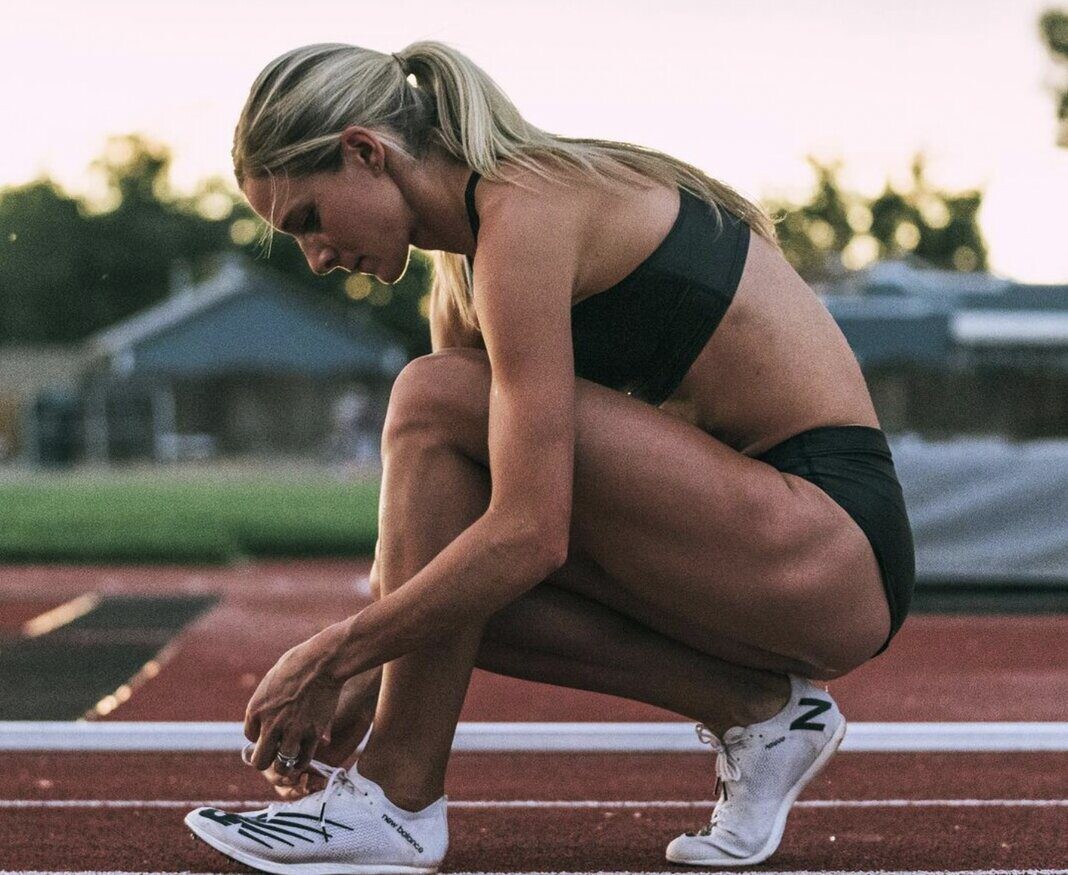
Emma’s Asian Chicken Salad
Ingredients
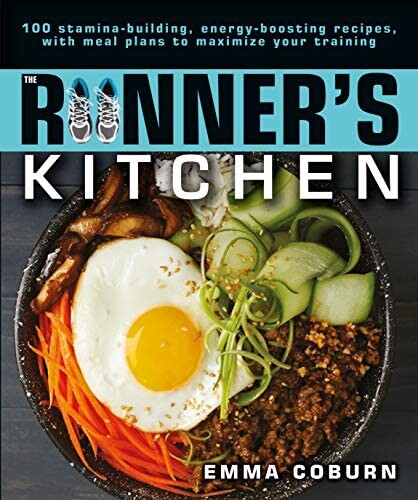
4 boneless, skinless chicken breasts (I often use a rotisserie chicken from the grocery store, shredded)
2 tsp salt
2 tsp freshly ground black pepper
5 cups shredded napa cabbage (I use a bag of premade coleslaw)
1 cup shredded red cabbage or radicchio
1/2 cup chopped scallions
1 cup chopped fresh cilantro (optional), plus whole leaves to garnish
1/2 cup chopped onion
1 cup diced cucumber
1 cup diced red bell pepper
1 cup toasted peanuts
For the dressing
1/2 cup vegetable oil
1/2 cup rice wine vinegar
2 tbsp sesame oil
1 tbsp granulated sugar
2 tbsp soy sauce
2 tbsp sriracha
2 tbsp freshly squeezed lemon juice
1 tsp salt
1 tsp freshly ground black pepper
Directions
Preheat the oven to 375 F (190 C) and line a baking sheet with parchment paper. Sprinkle the chicken thighs with salt and pepper. Place the chicken on the prepared baking sheet, and roast for 30-35 minutes or until the juices run clear and the chicken reaches an internal temperature of 165 F (75 C). Remove and set aside to cool.
To make the dressing, combine all dressing ingredients in a food processor or blender, and blend until fully emulsified and creamy.
Shred the cooled chicken and place it in a large bowl. Toss with the napa cabbage, red cabbage, carrots, scallions, cilantro, red onion, cucumber and red pepper. Add your desired amount of dressing, toss again, and divide evenly among serving plates. Top each serving with cilantro leaves and peanuts if desired.
(07/20/2022) ⚡AMP
by Keeley Milne
This 33-year-old steeplechase specialist had a bumpy four years until placing sixth at the World Athletics Championships on July 18
If you told Evan Jager in April that he would place sixth in the World Athletics Championships men’s 3,000-meter steeplechase in just a few months, he would have been ecstatic.
After all, the 2016 Olympic silver medalisthad only ran 8:34.89 at the Mt. SAC Relays on April 14, which is almost 13 seconds off the world’s standard time of 8:22.00. Though Jager had better steeplechase showings at the USATF Distance Classic on May 19 and the Portland Track Festival on June 10, it looked like the 33-year-old distance runner was still a far from being his former self.
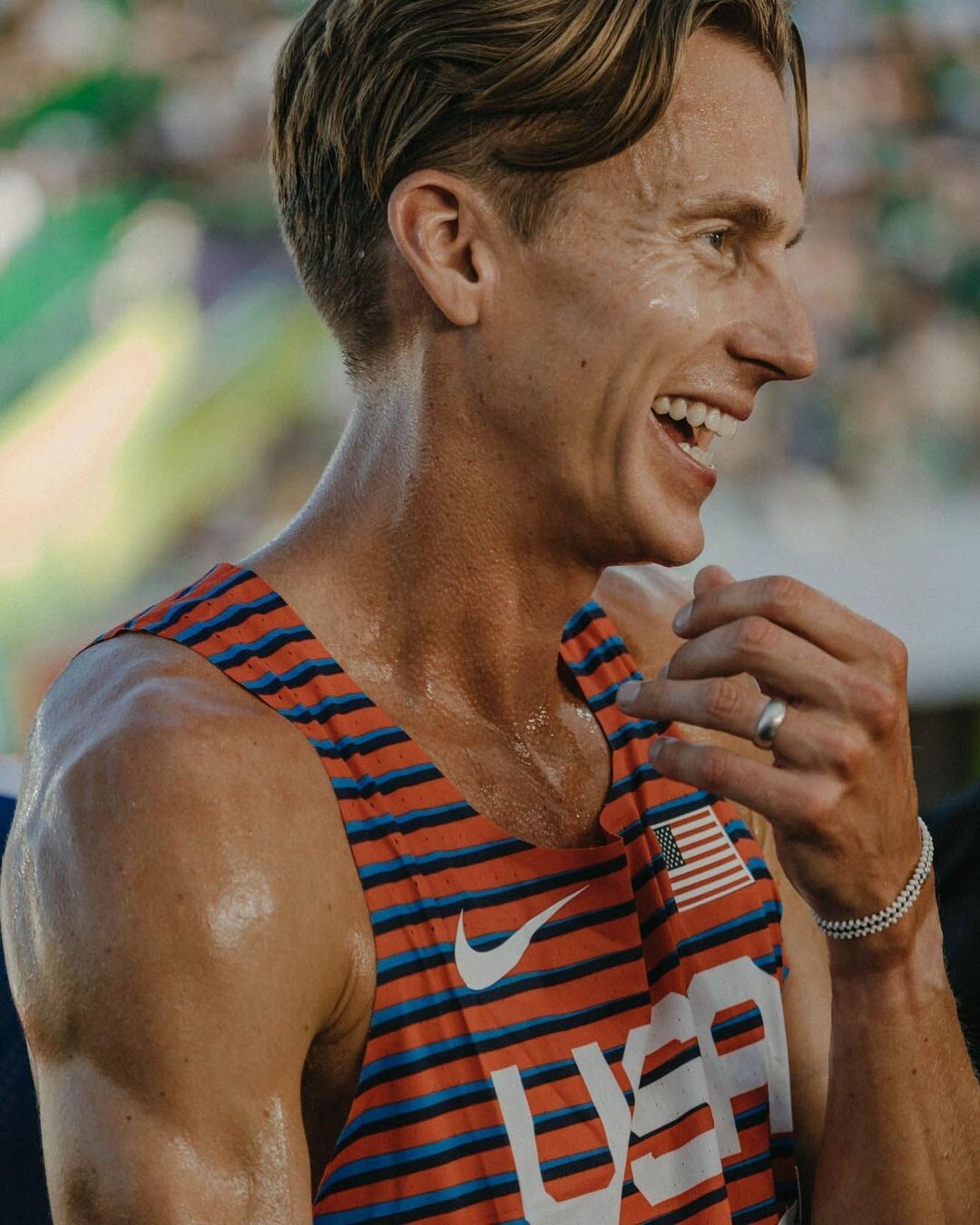
Things finally clicked at the USATF Outdoor Championships on June 25, when he ran 8:17.25 in the final to place second, earning him the world championships standard and a spot on Team USA for the World Athletics Championships at Hayward Field in Eugene, Oregon.
“Once you reach a certain point, you’ve got to set the bar higher,” Jager told Runner’s World.“I probably didn’t start thinking about realistically making the World Championship final until the prelim at USAs, I felt really good coming off of that.”
With momentum on his side, Jager’s expectations grew. The Bowerman Track Club athlete looked strong in his world championships preliminary heat, qualifying automatically for the final with his second-place finish. But in a tactical and physical final, Jager couldn’t keep up with defending Olympic champion Soufiane El Bakkali, Olympic silver medalist Lamecha Girma, and defending world champion Conseslus Kipruto over the final lap.
“After the prelim, I felt like my fitness was up there with just about anyone besides El Bakkali and Girma if it was a hard race from the get-go,” Jager said. “Team USA was having such an unbelievable and magical meet that I was letting myself believe that I could let the home crowd carry me to a magical performance. I think I probably would have fared better in a faster race.”
Regardless, the achievement is impressive for a runner who has been absent from the track & field circuit for the last four years. A lot has changed, especially with his training group. In 2018, Jager and Canadian 5,000- and 10,000-meter runner Mo Ahmed were the top dogs on the Bowerman Track Club, challenging the best in the world for medals. But Jager got hurt that year, and spent most of 2019 trying to get fit again while dealing with other injuries. When Jager returned to training, the team dynamic changed completely. Olympic gold medalist Matthew Centrowitz joined the group, who along with Woody Kincaid and Lopez Lomong all ran around 13 minutes in the 5,000 meters that summer. Then, NCAA champions Sean McGorty and Grant Fisher trickled in after using up their eligibility.
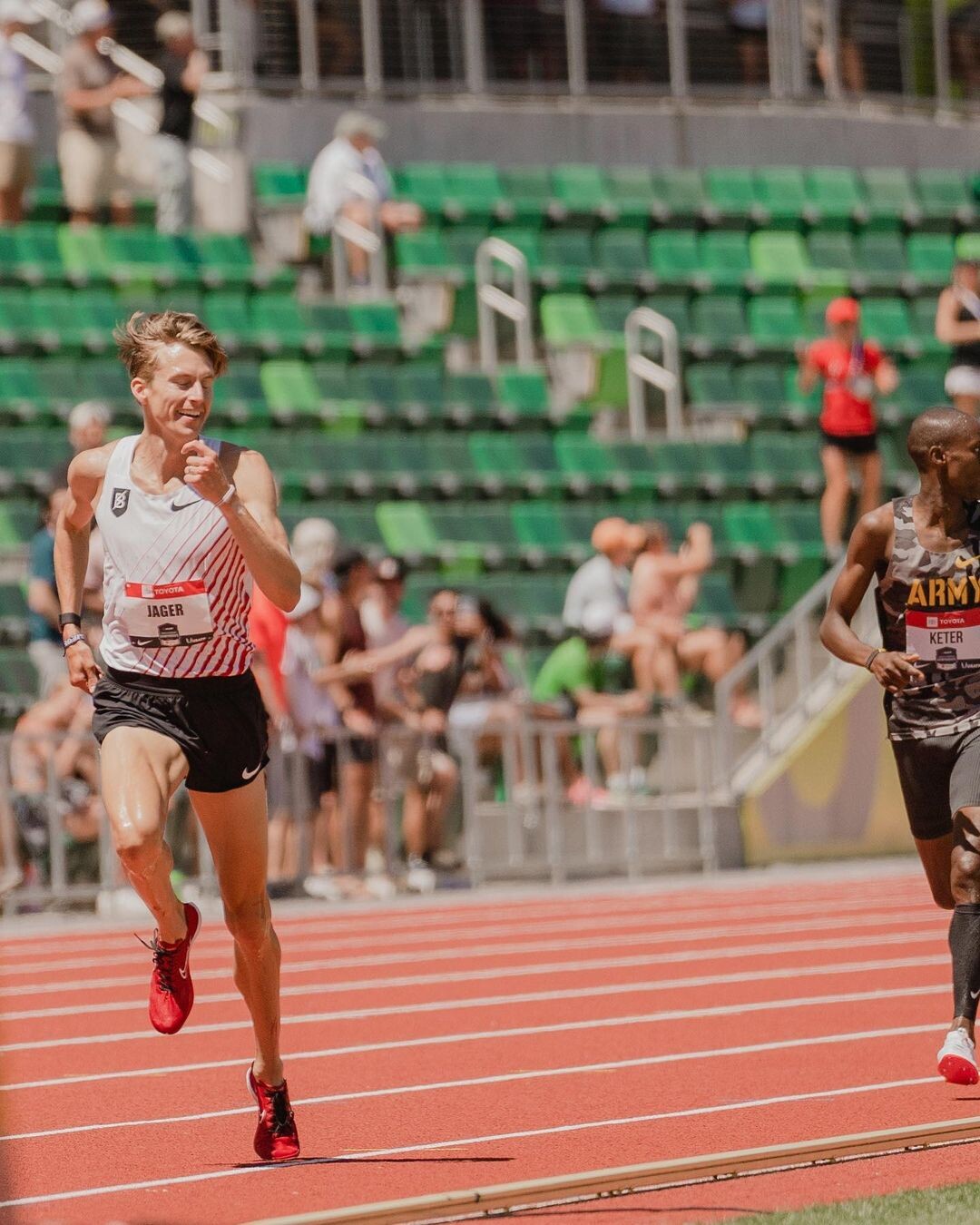
“I went from being on top … to being literally the worst guy on the team,” said Jager. “Every day was a grind.” Jager tried to keep up with the new members while also battling injuries, but had a hard time getting through even half of team workouts. “They were just on another level. I never felt like I was within myself in training for three and a half years up until this spring.”
So what changed in those three and a half years? Jager credits the team physical therapist, Colleen Little, who started working with Bowerman in January 2021. His problem wasn’t simply one big injury, like the stress fracture in his foot that ended his 2018 season. It was a snowball effect of one injury leading to overcompensation and imbalances in other parts of his body. So Jager and Little saw each other once or twice a week, every week, to manage the different aches and pains.
Next year will bring even more changes for Jager. His coach, Jerry Schumacher, is moving to Eugene to take the helm of the University of Oregon track & field program. The Bowerman Track Club’s athletes will relocate from their current base in Portland.
“I think it’s an incredible move for the group,” Jager said. “Change is always good. I’ve been in Portland for 14 years now, so it’s probably a good thing for me.”
Besides that, Jager said being stubborn kept him in the game. “I could have done a lot better being positive and working on mental health [the last few years],” he said. “I just believed that if I got healthy, I would get back here. If I can get to the final off of feeling healthy for four months, then I’m excited for next year.”
(07/19/2022) ⚡AMPby Runner’s World
World Athletics Championships Budapest23
Budapest is a true capital of sports, which is one of the reasons why the World Athletics Championships Budapest 2023 is in the right place here. Here are some of the most important world athletics events and venues where we have witnessed moments of sporting history. Throughout the 125-year history of Hungarian athletics, the country and Budapest have hosted numerous...
more...




